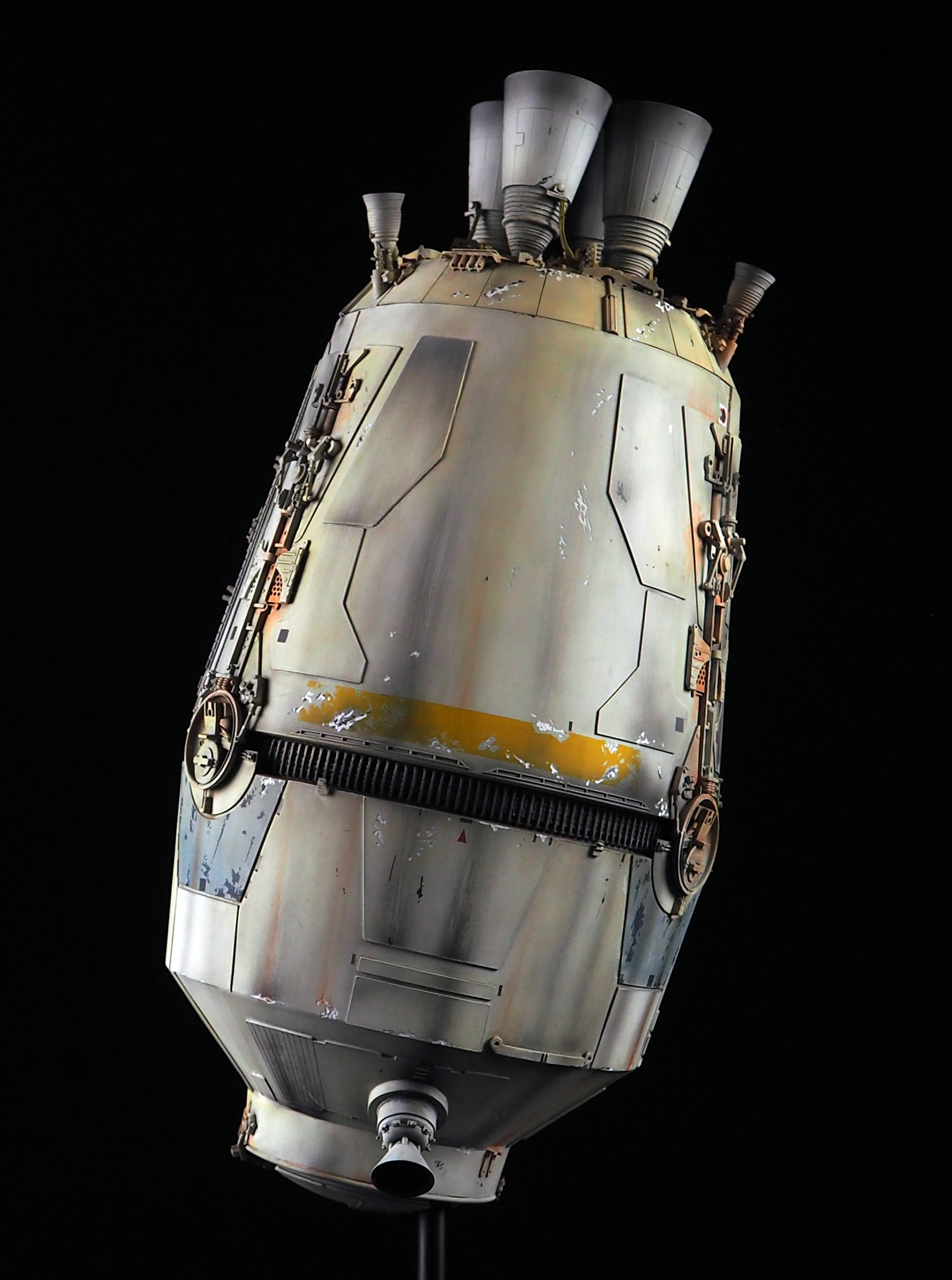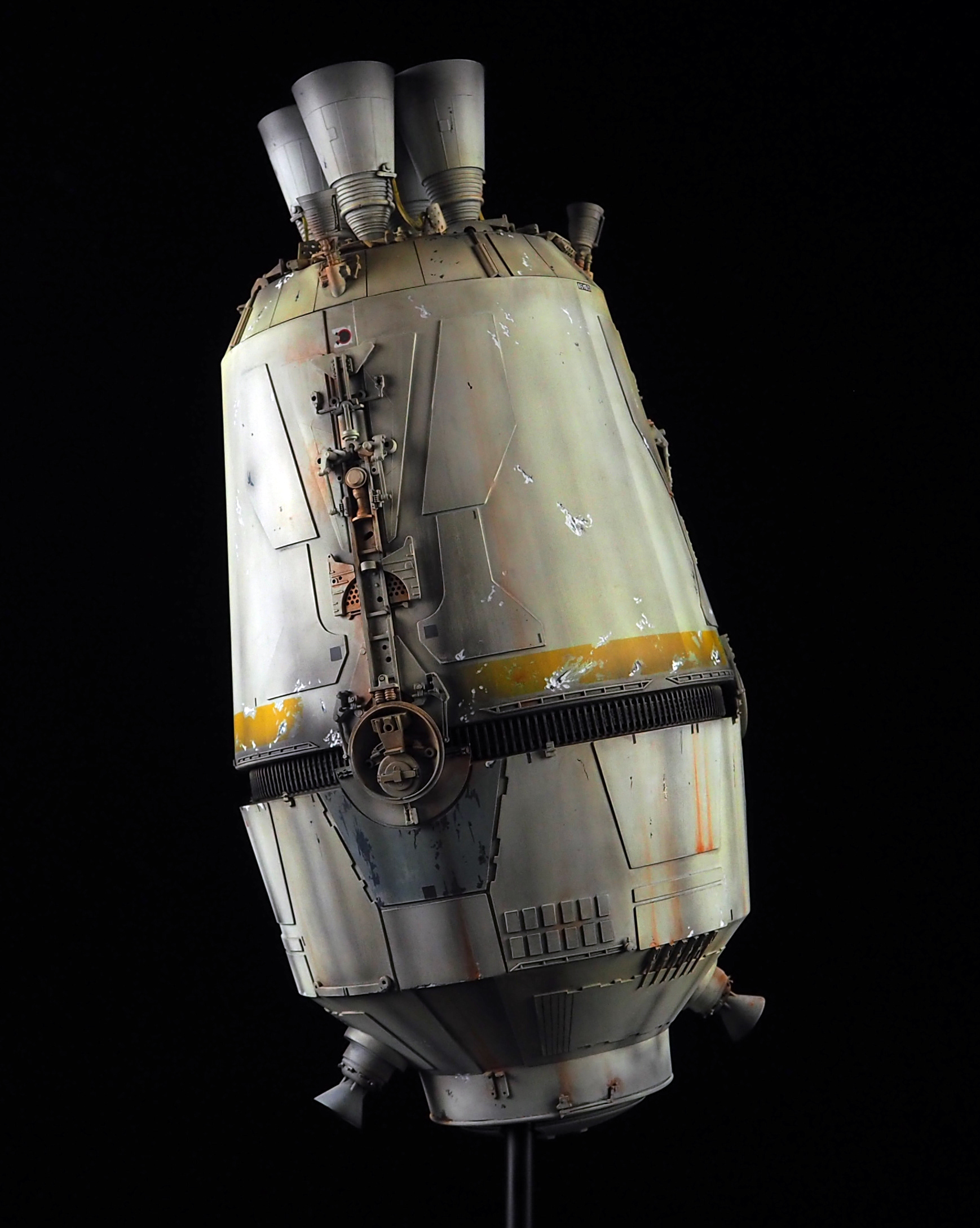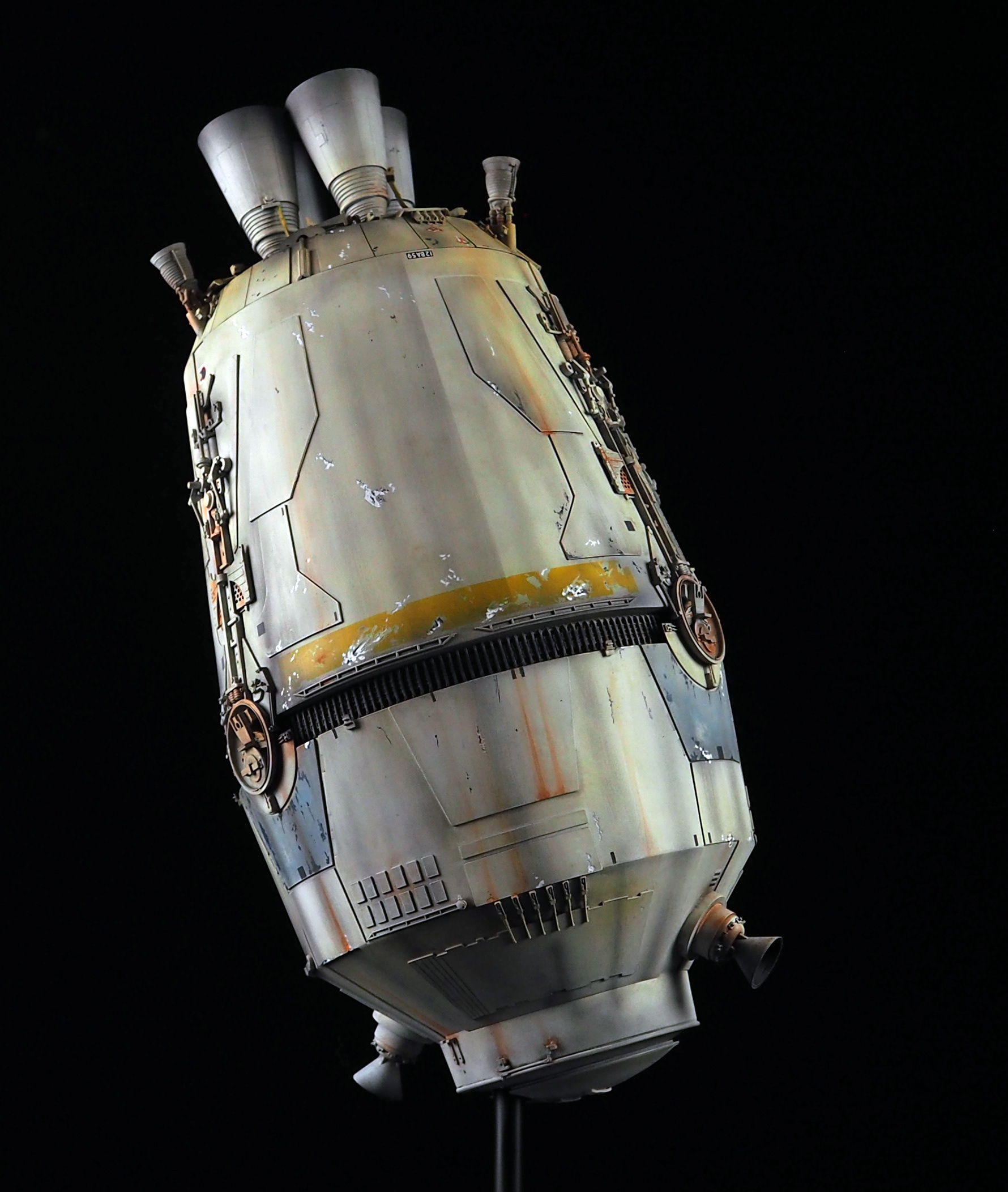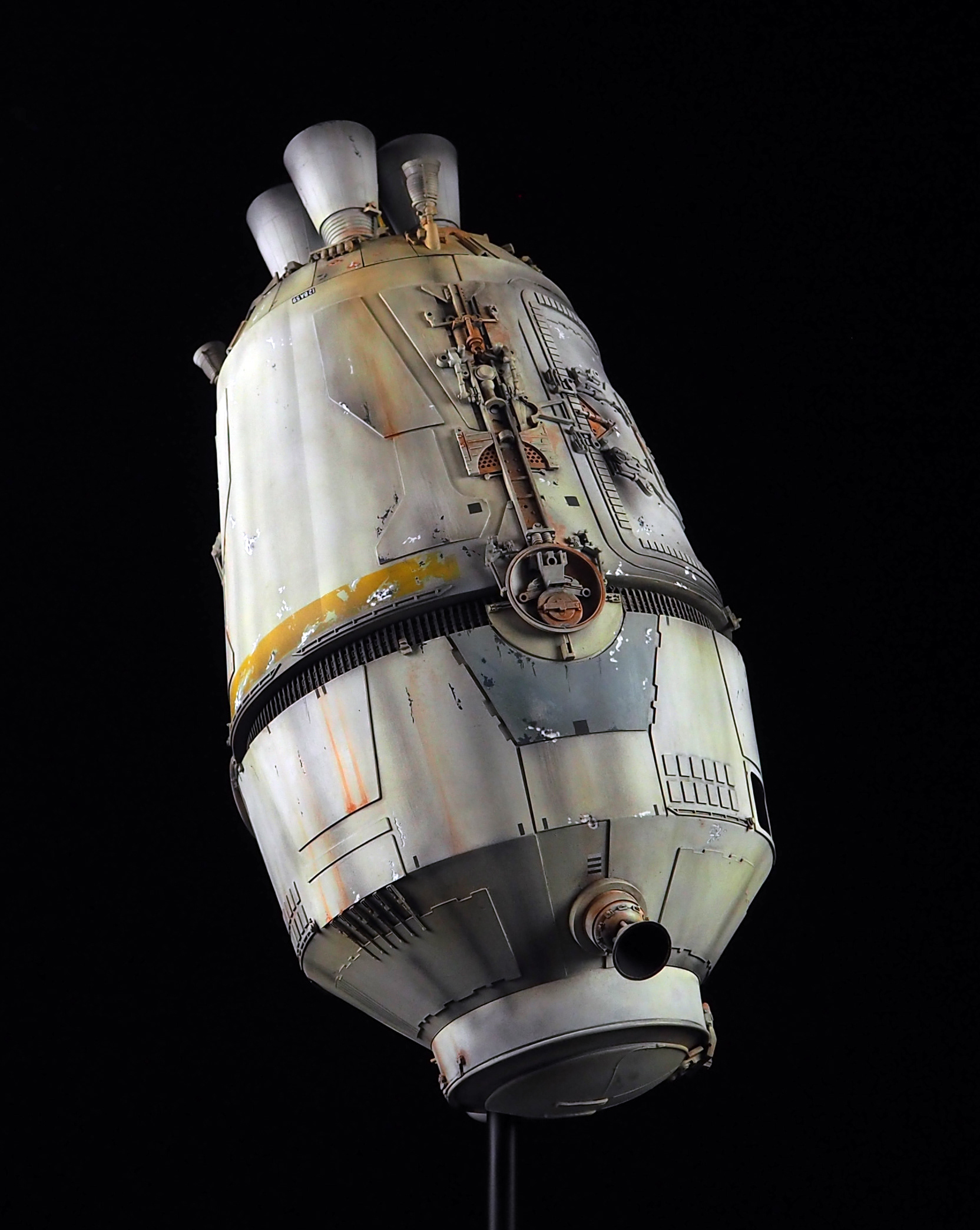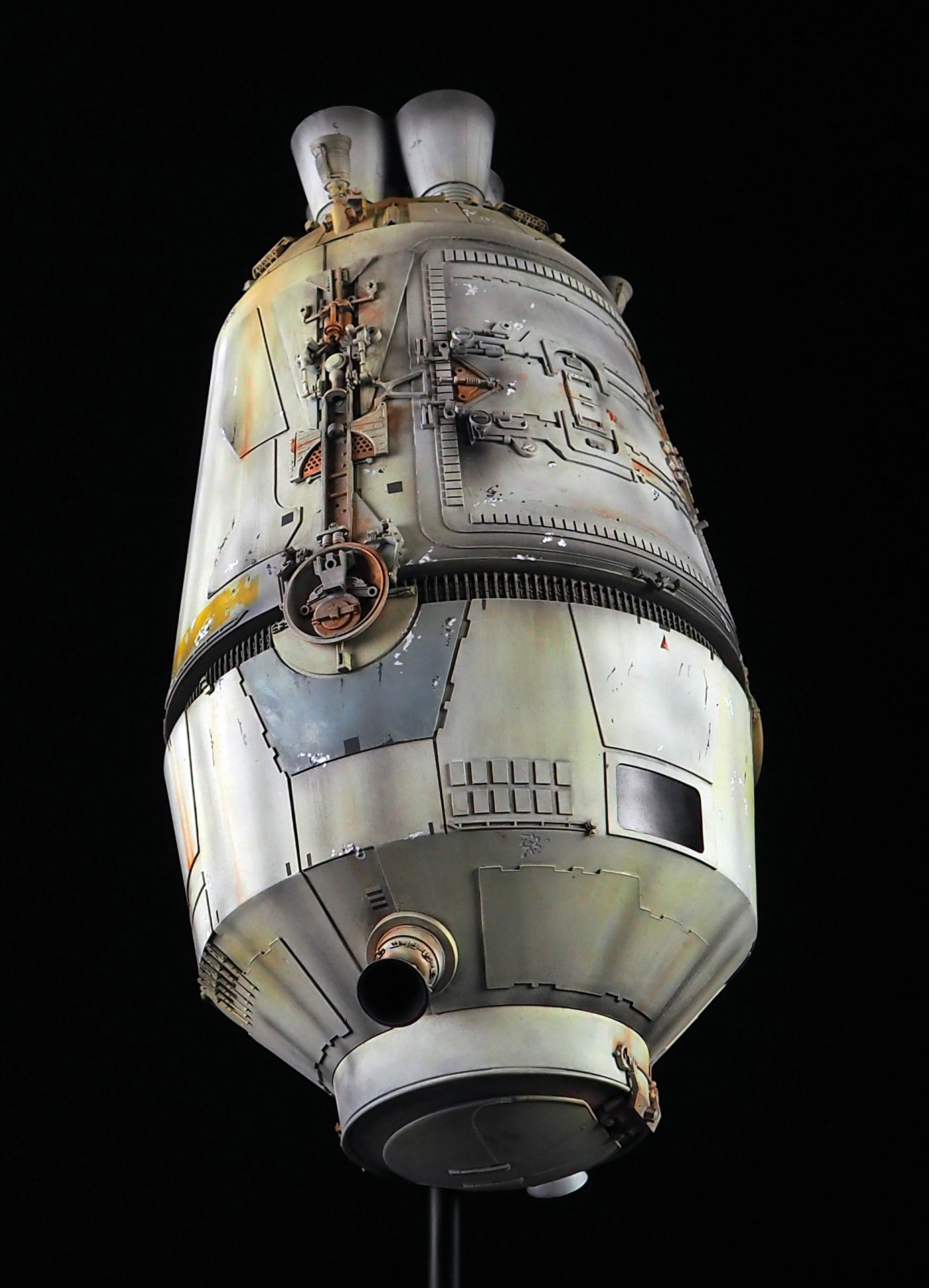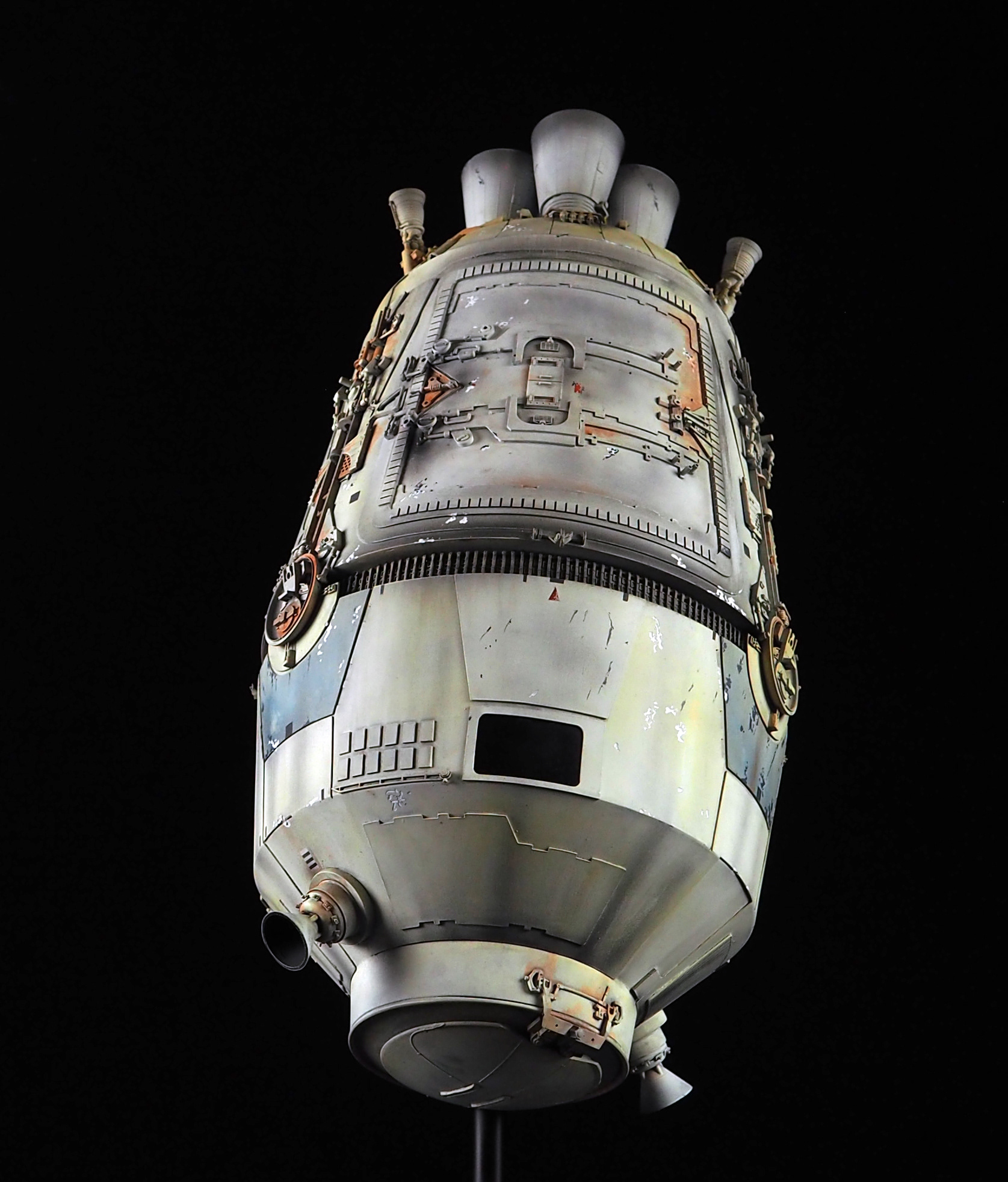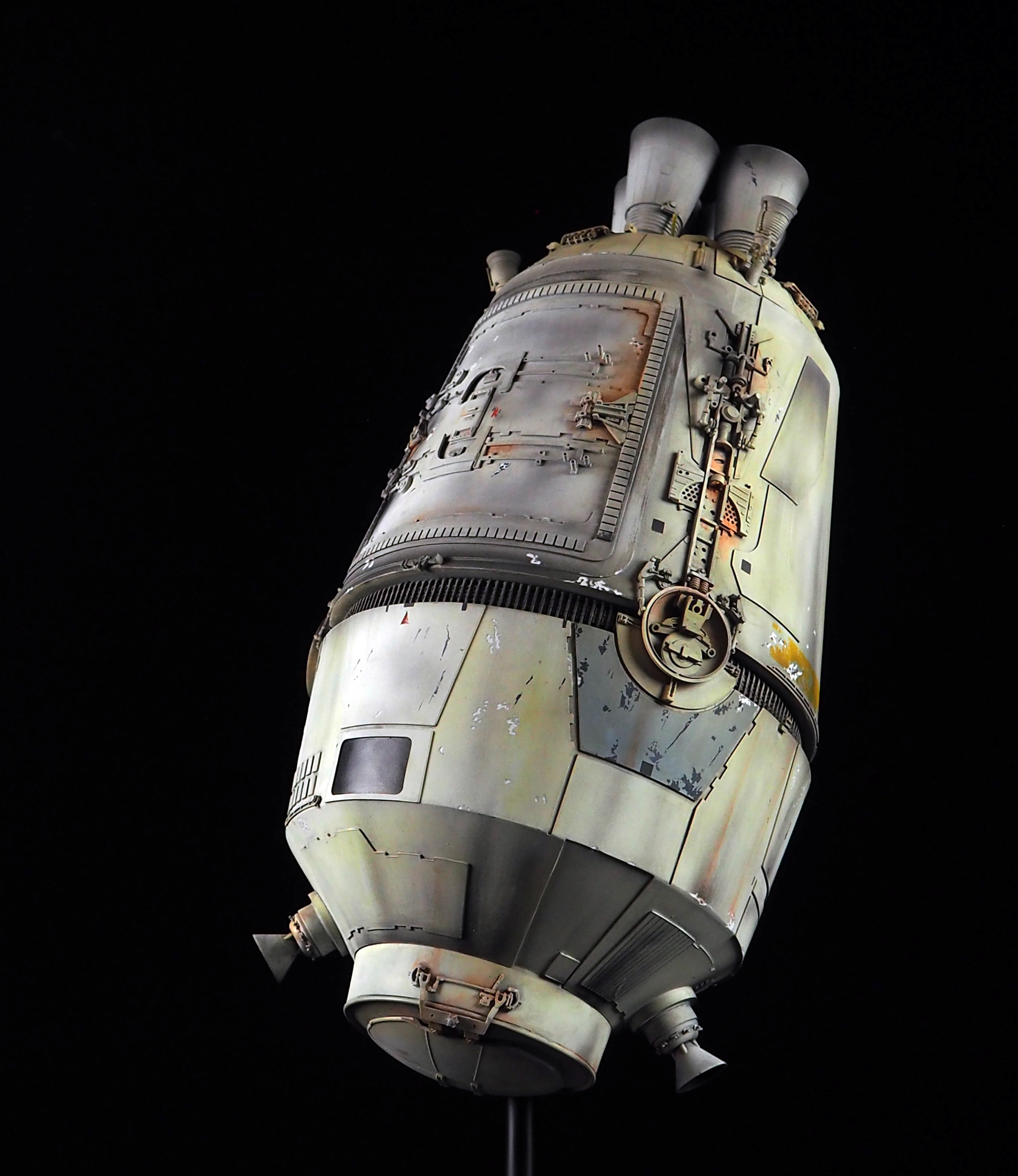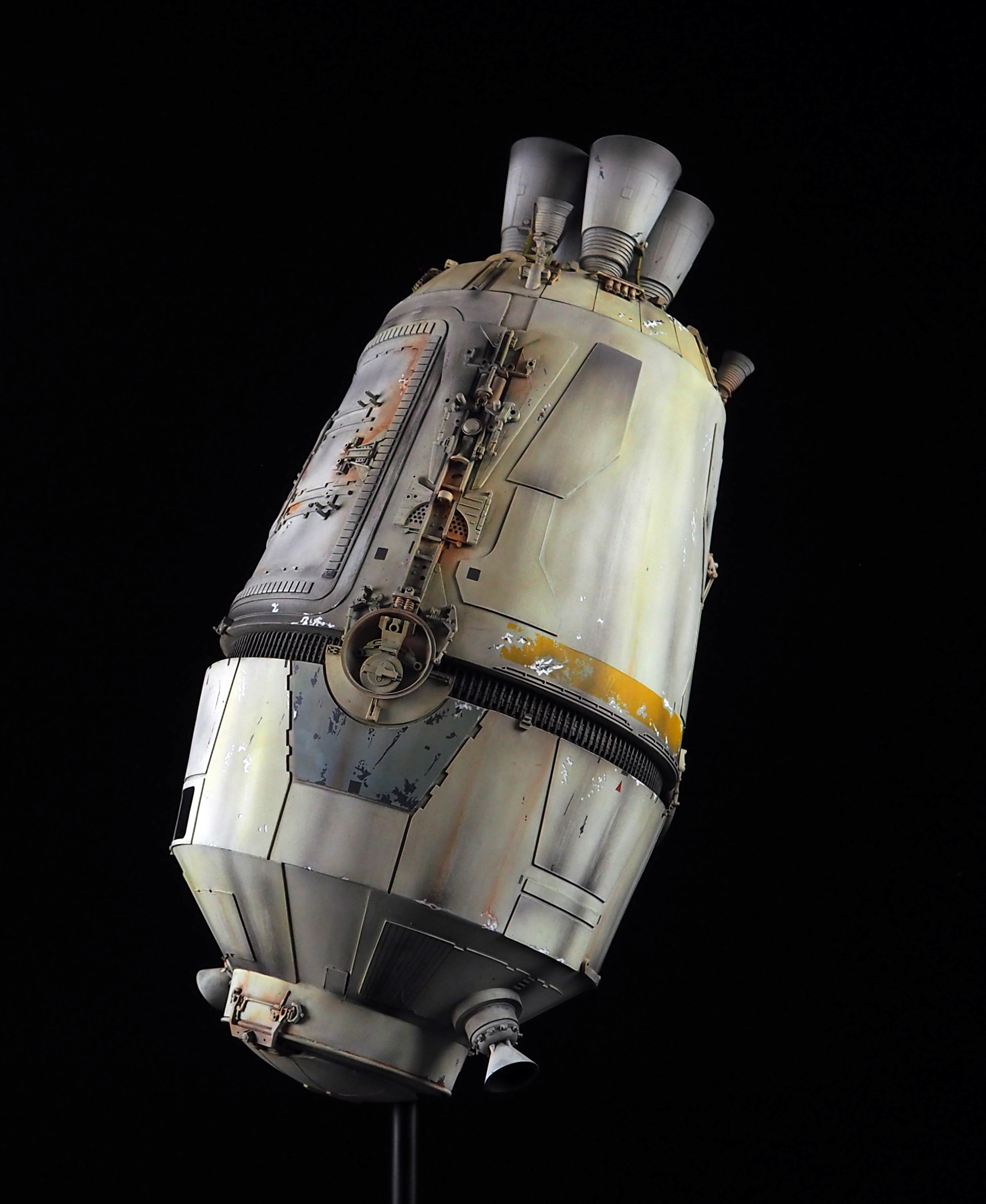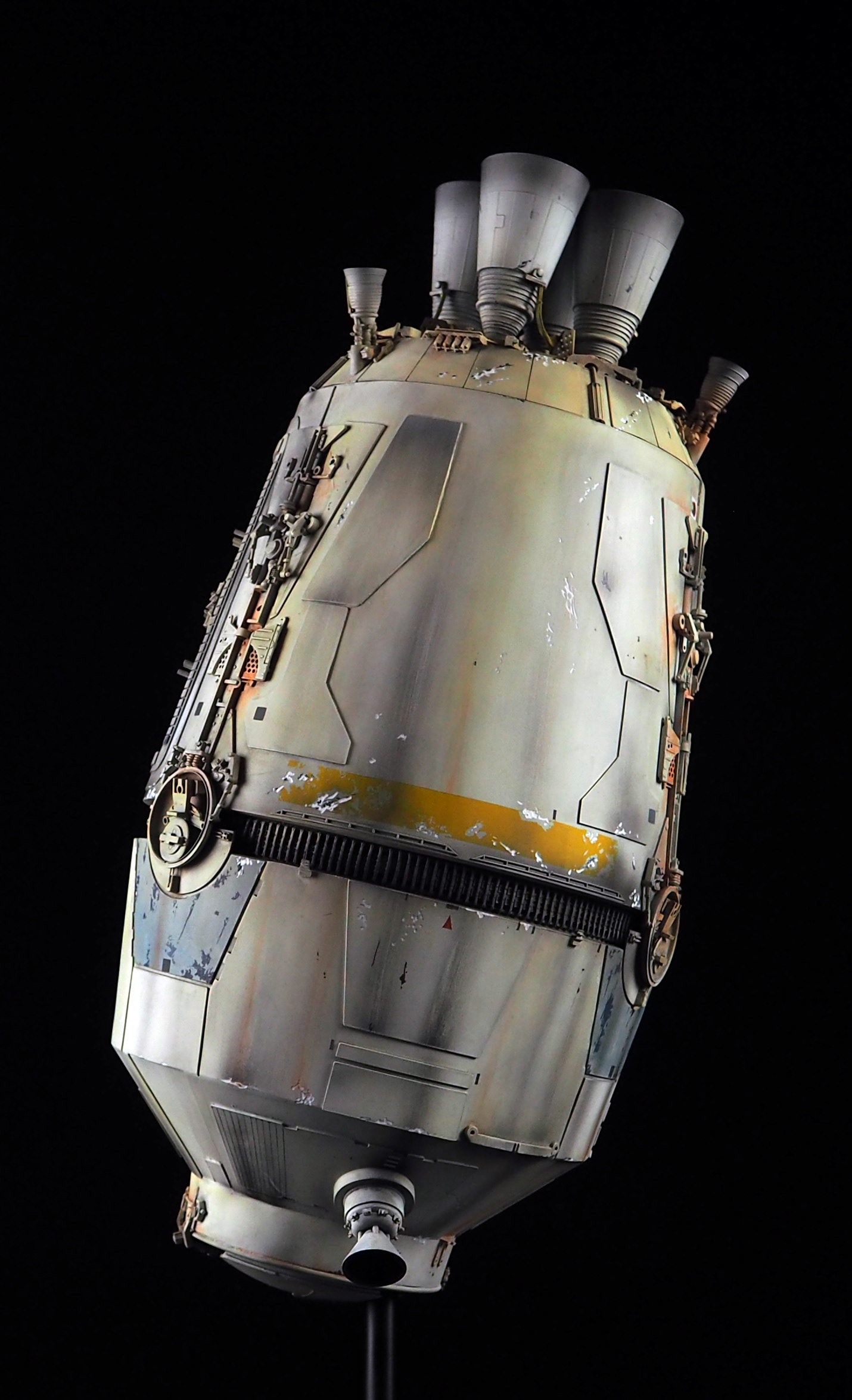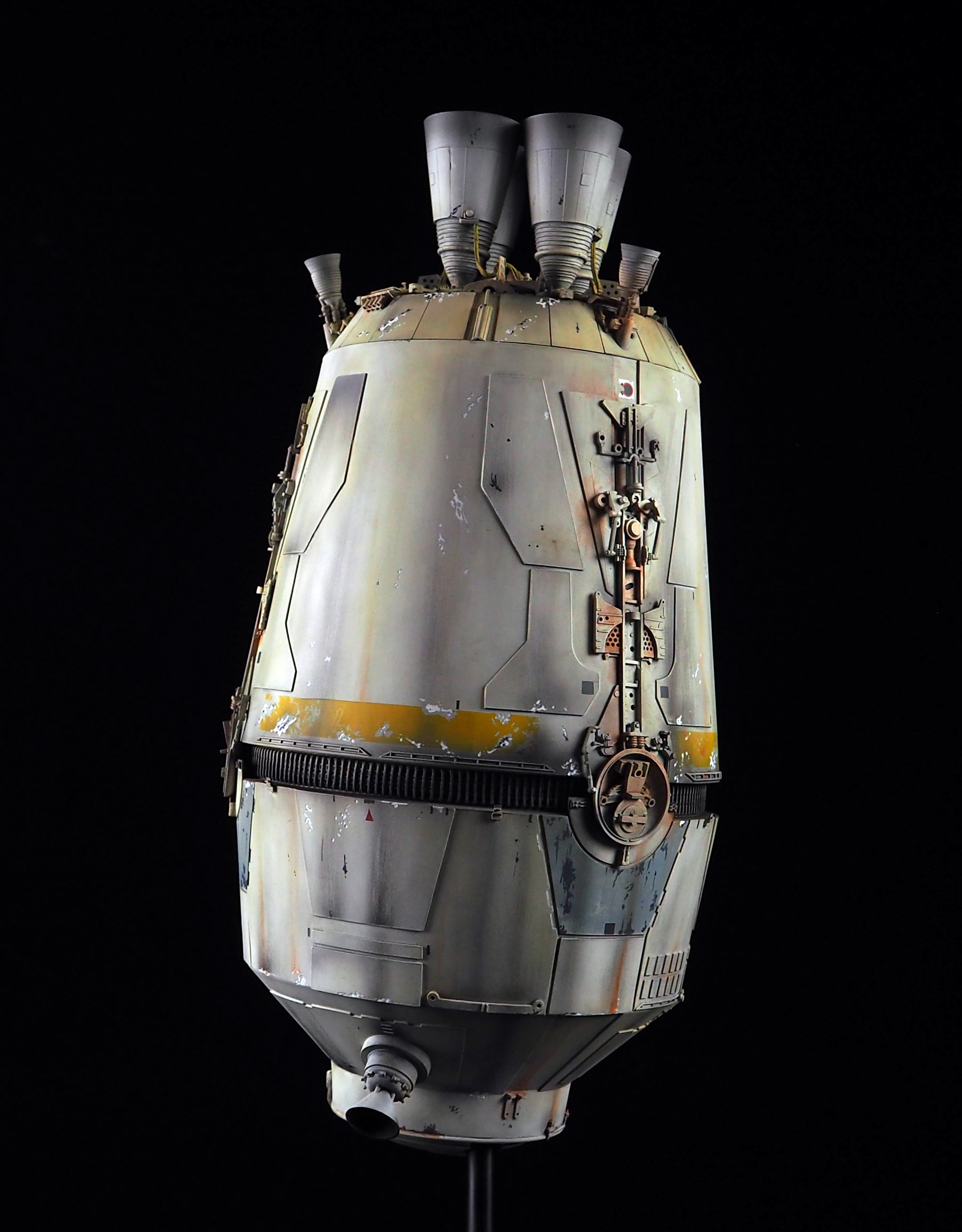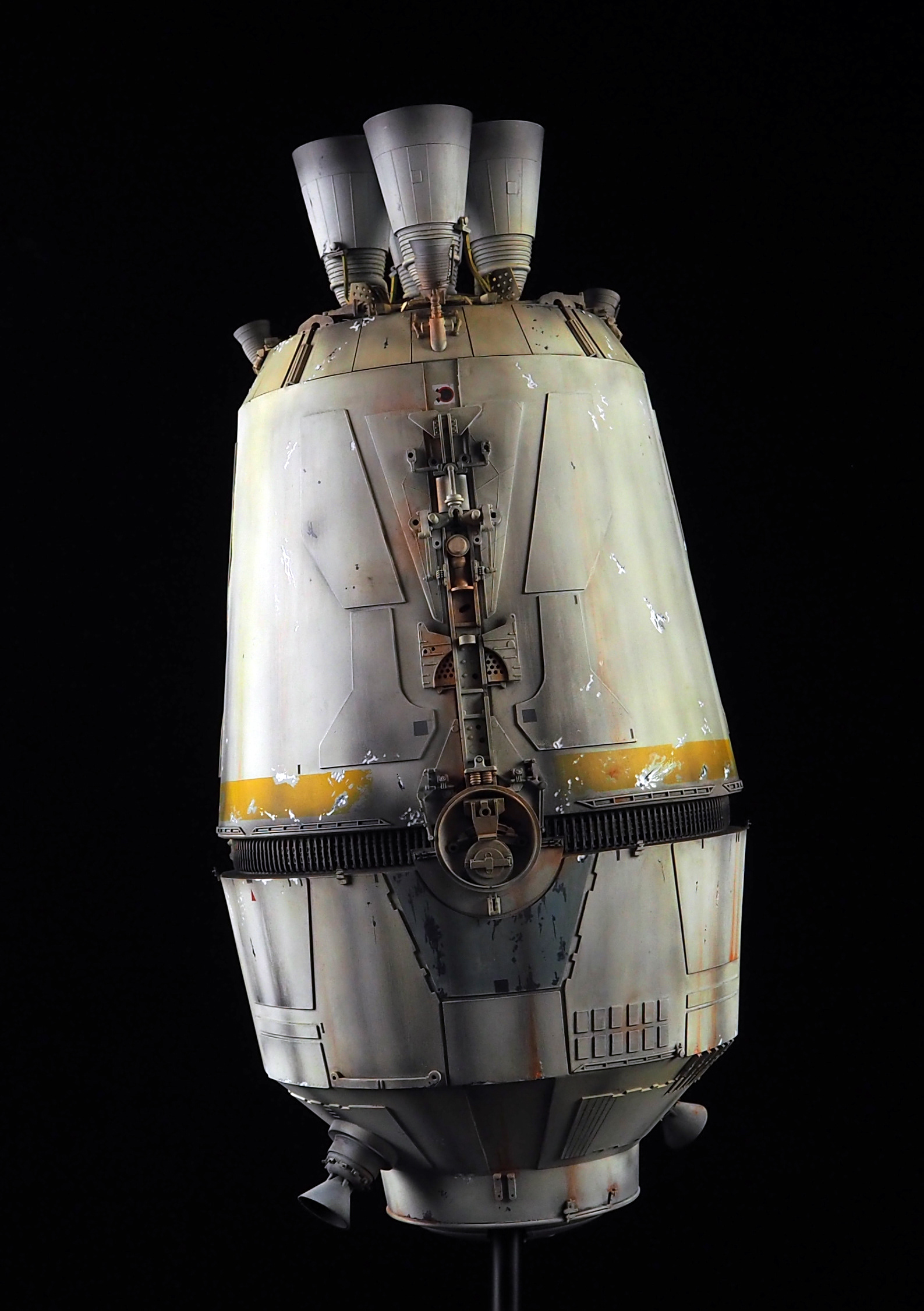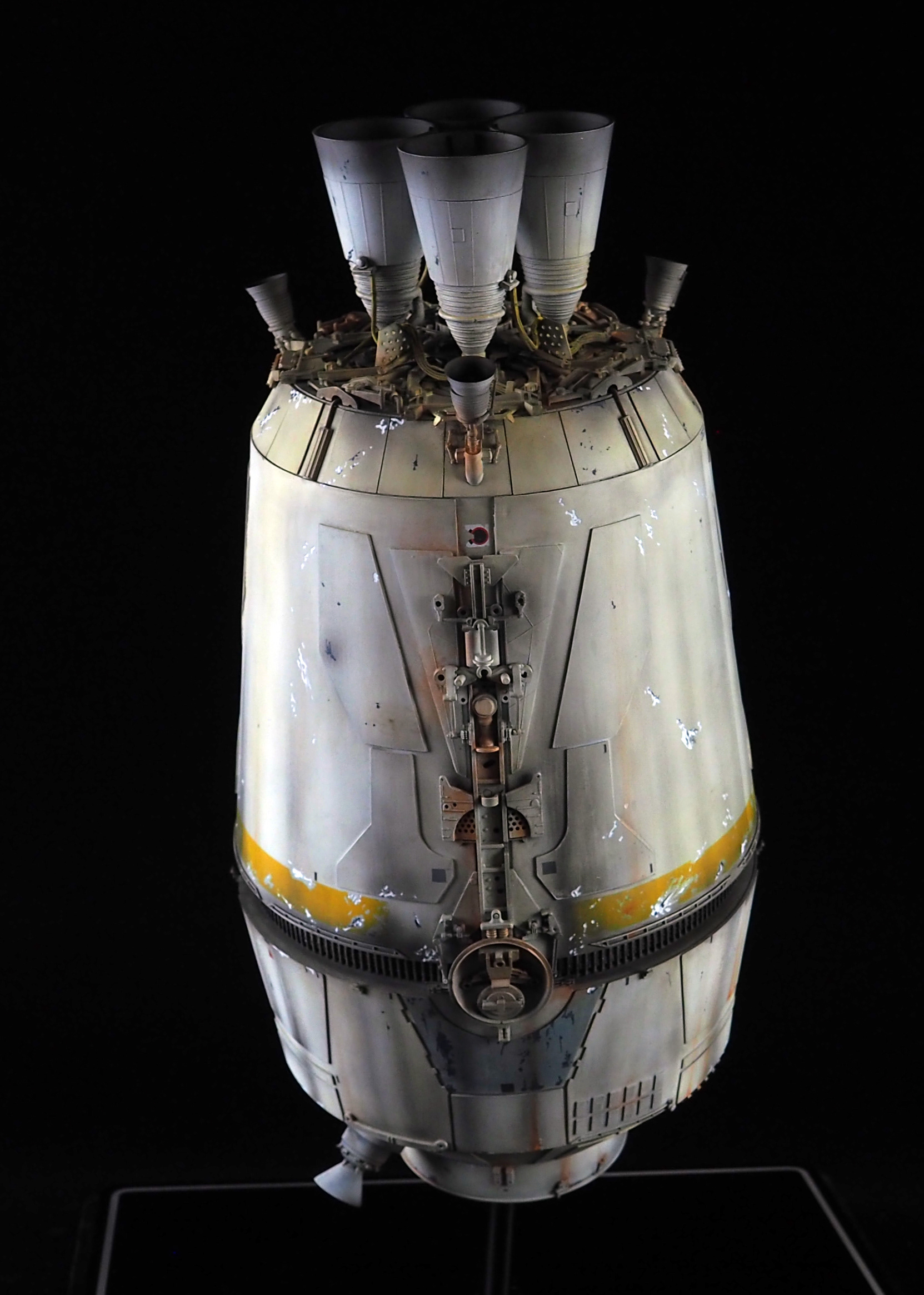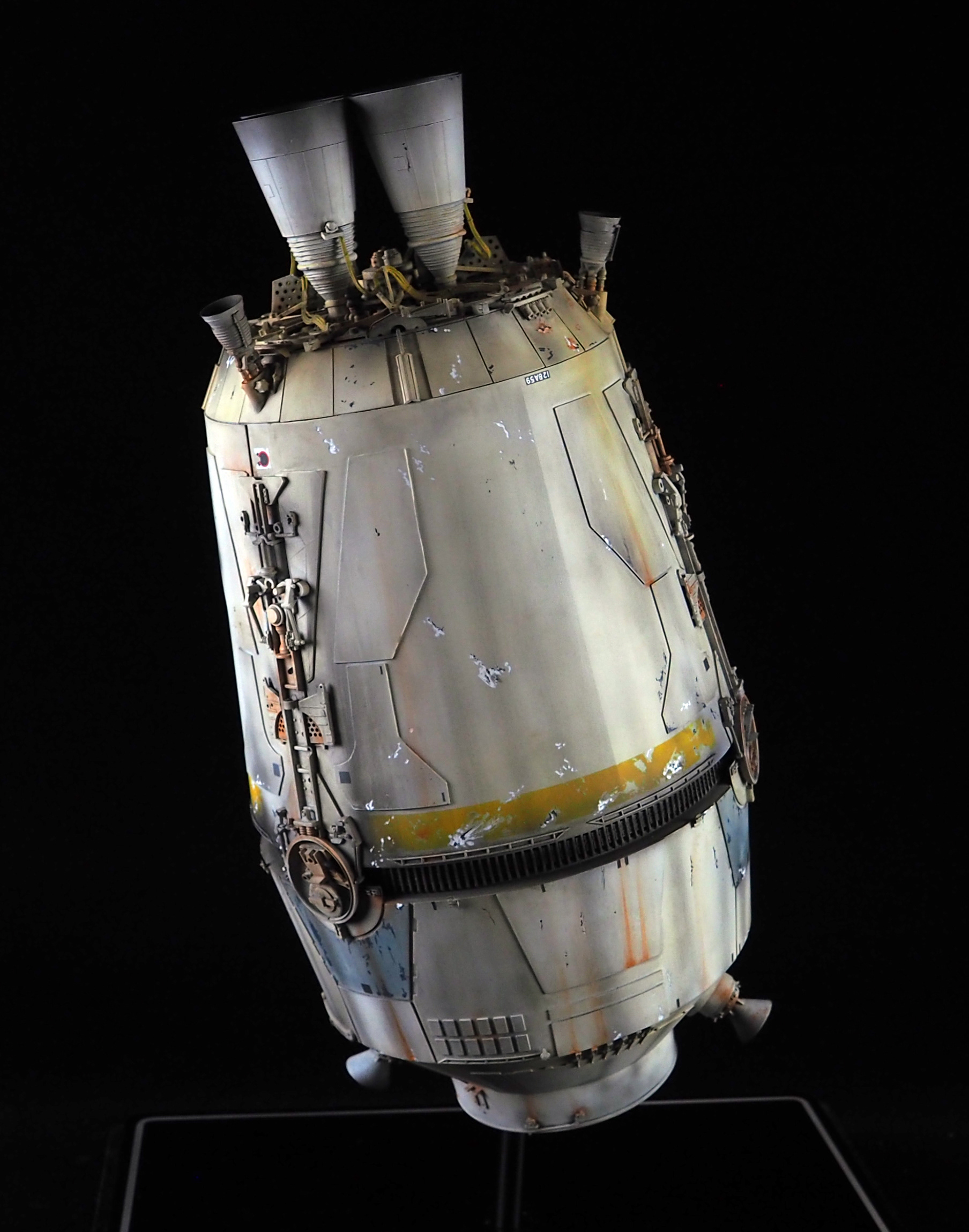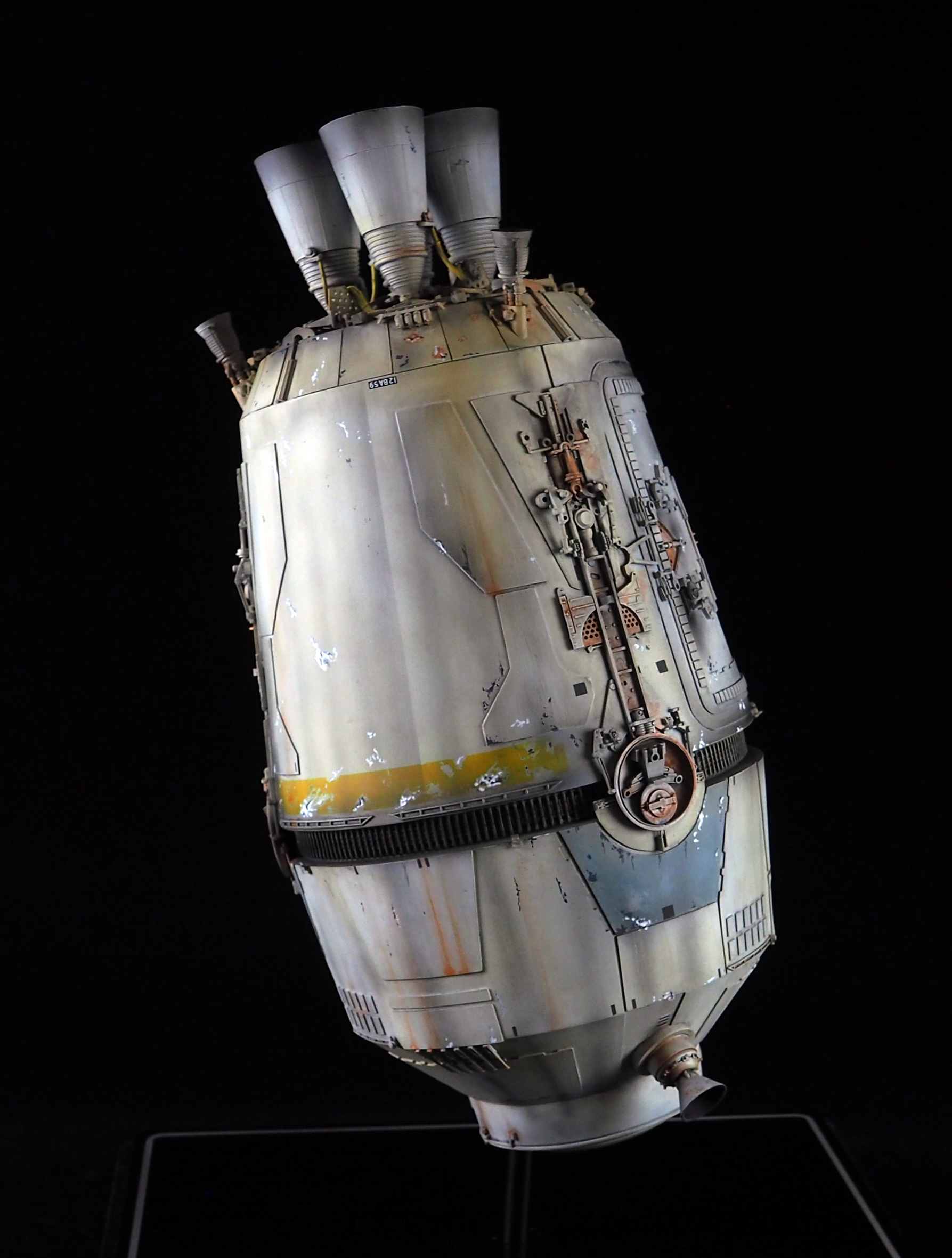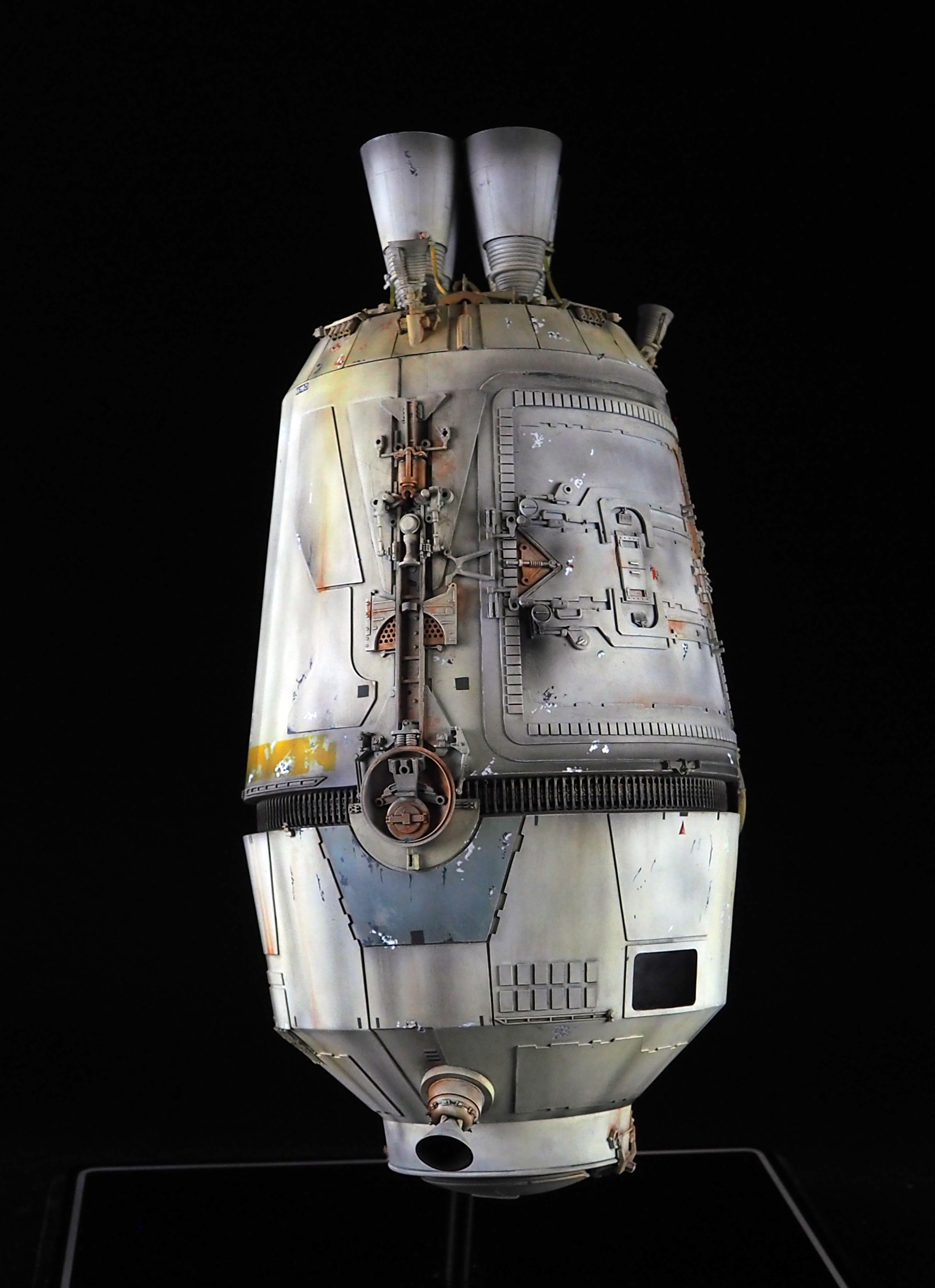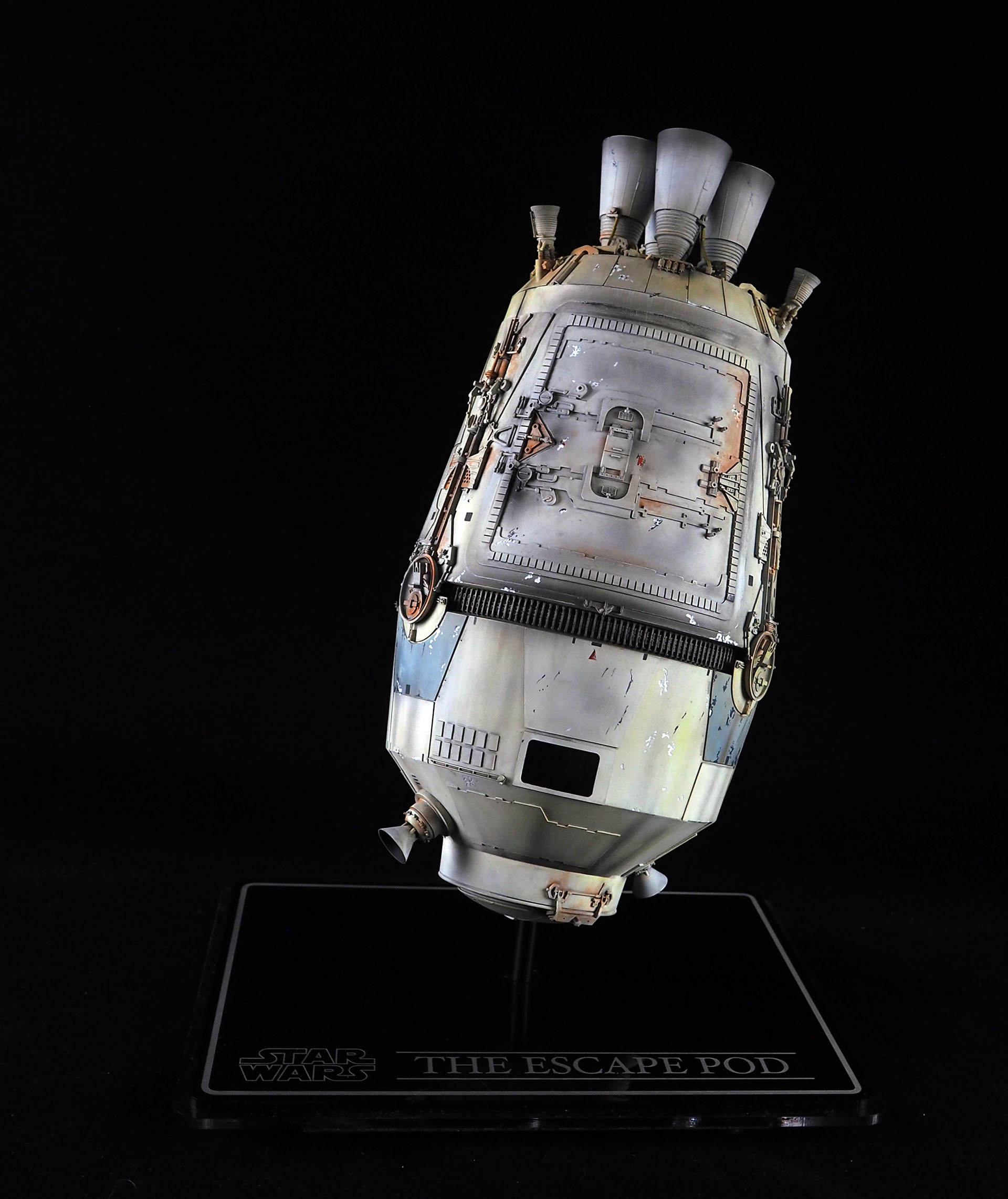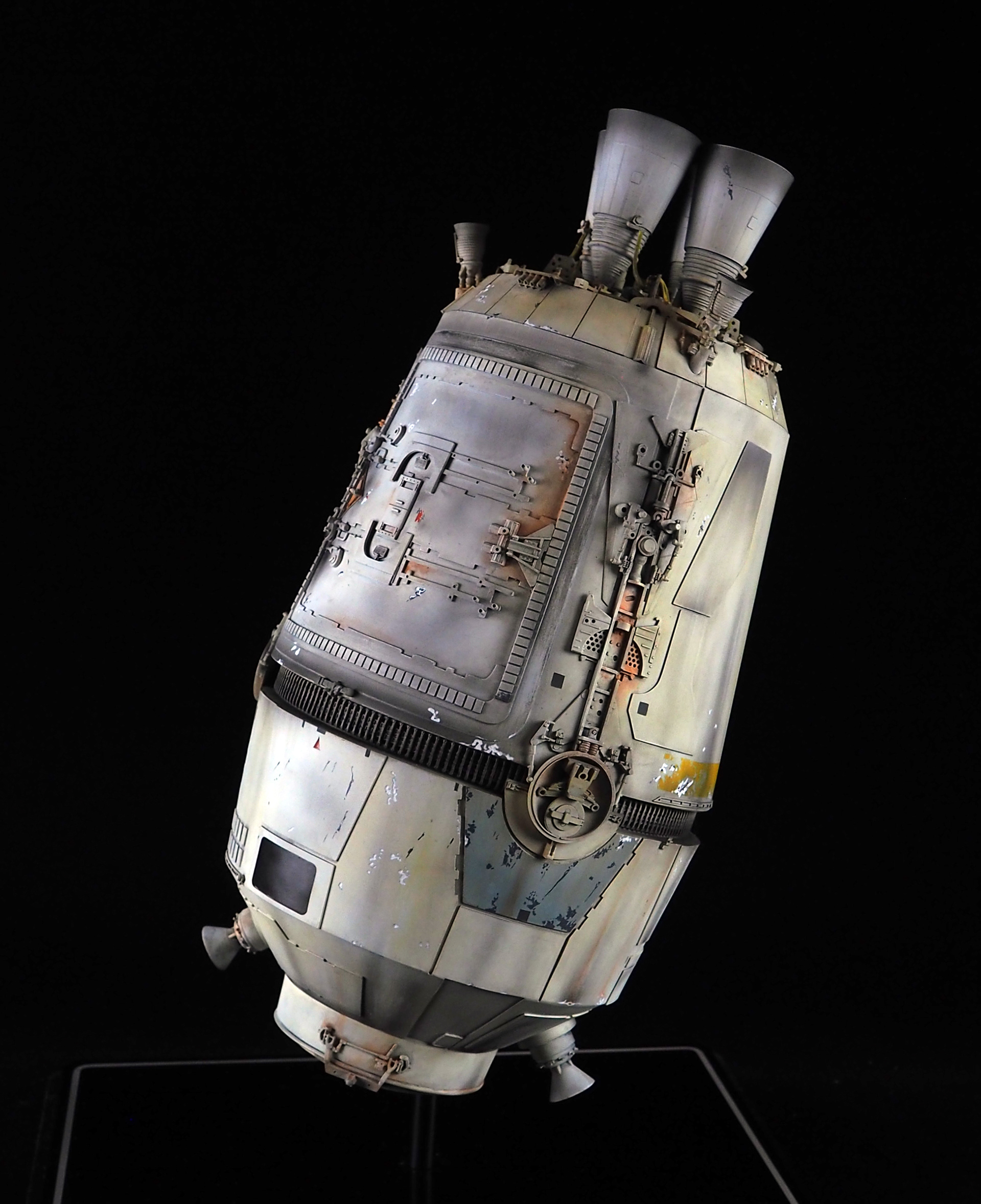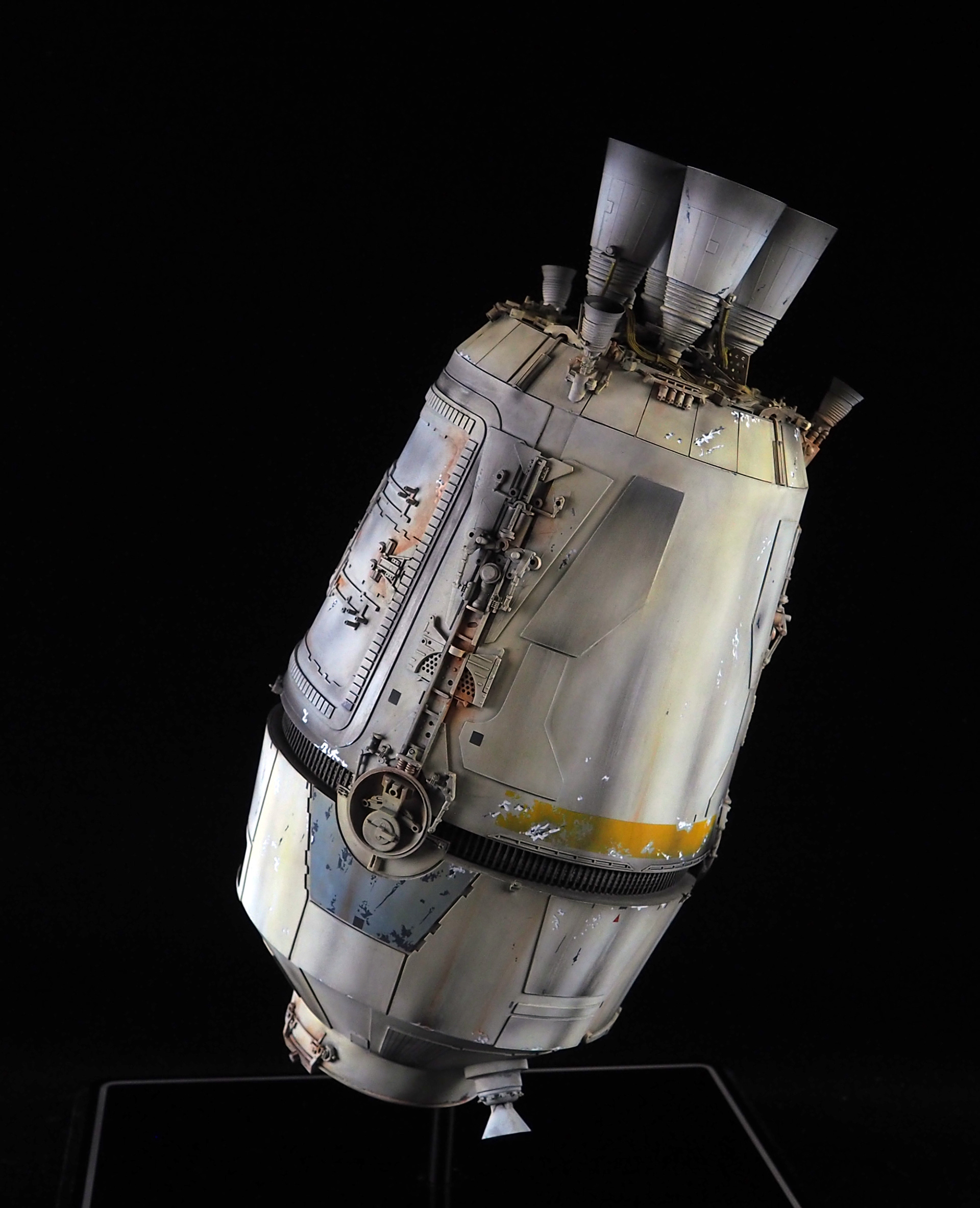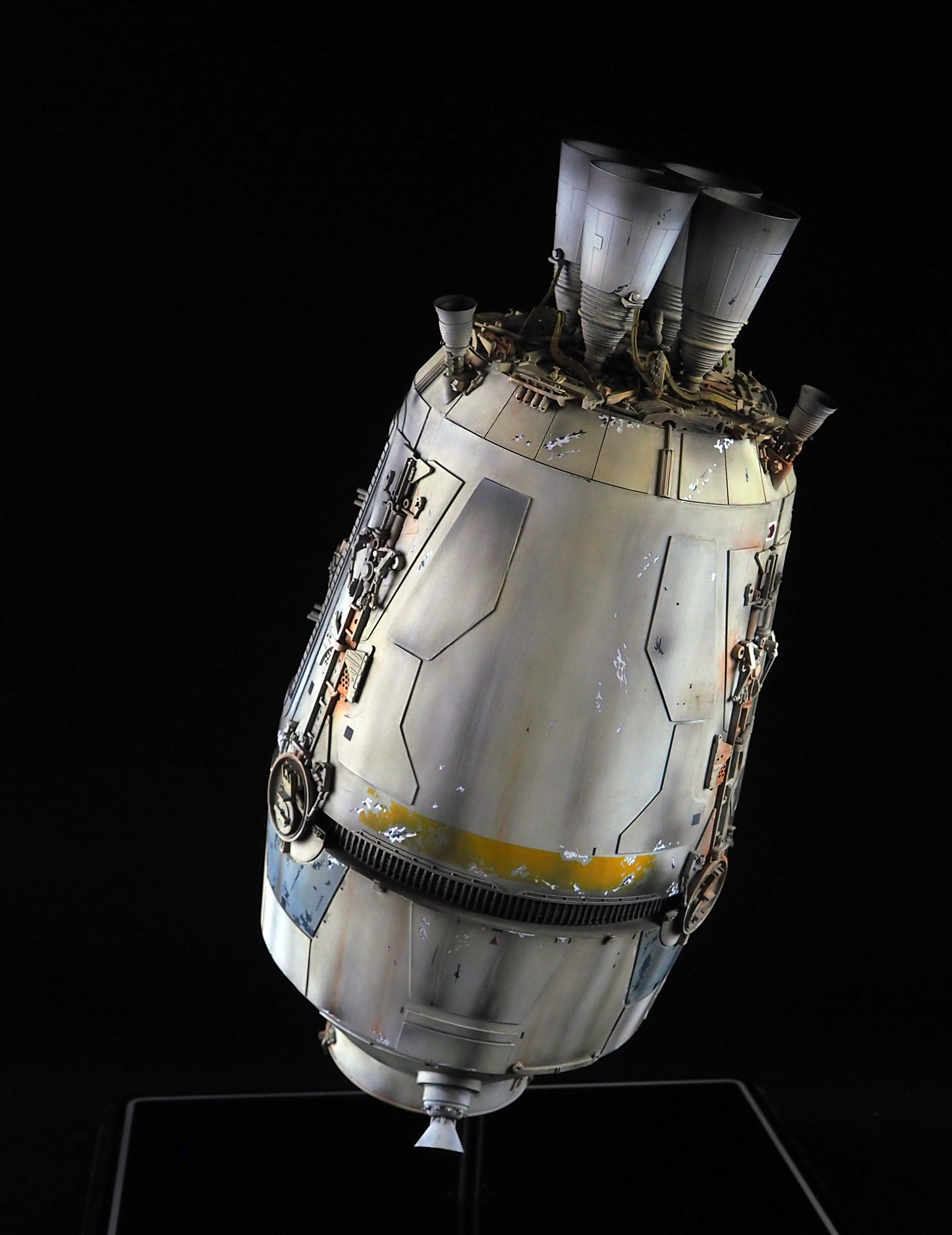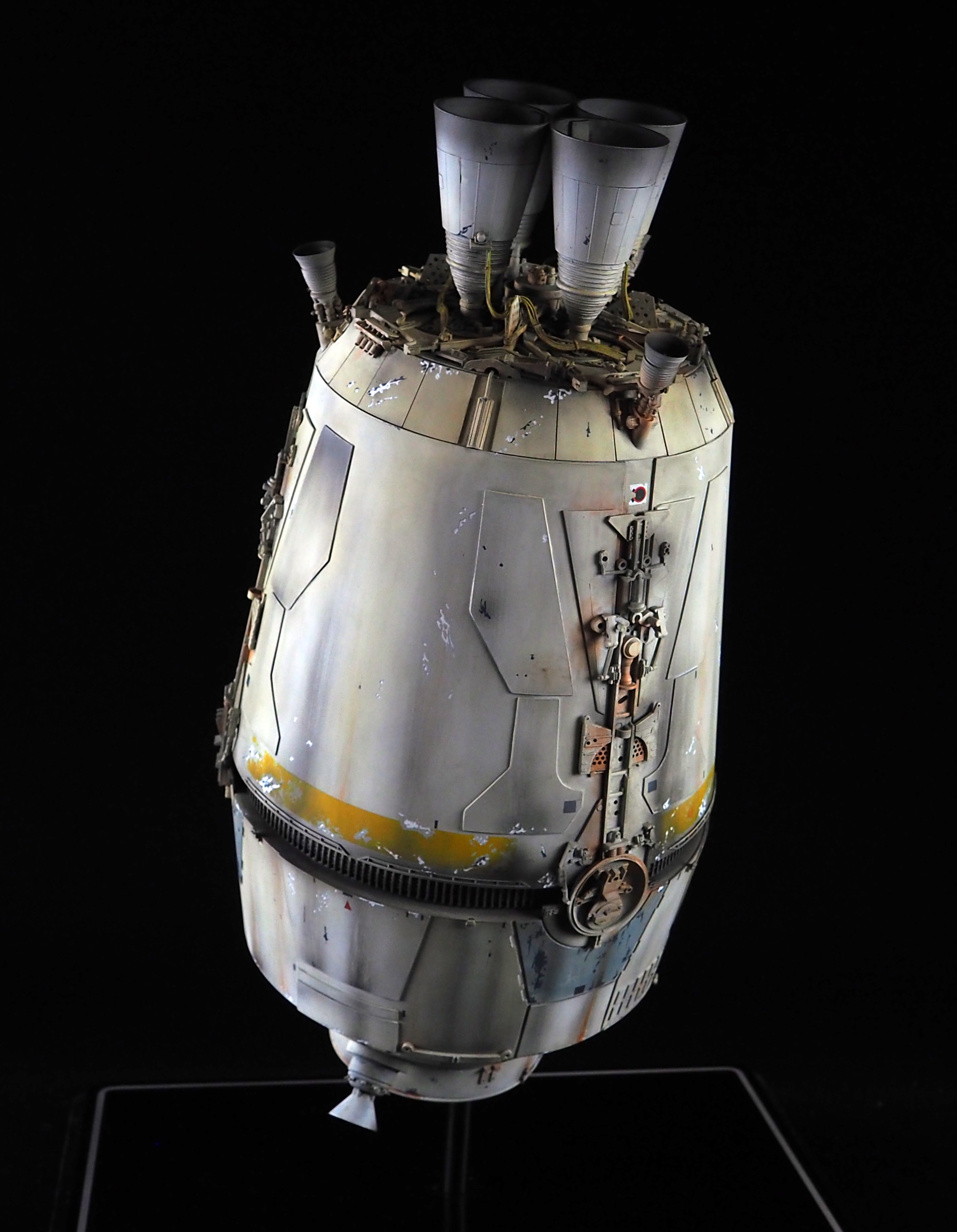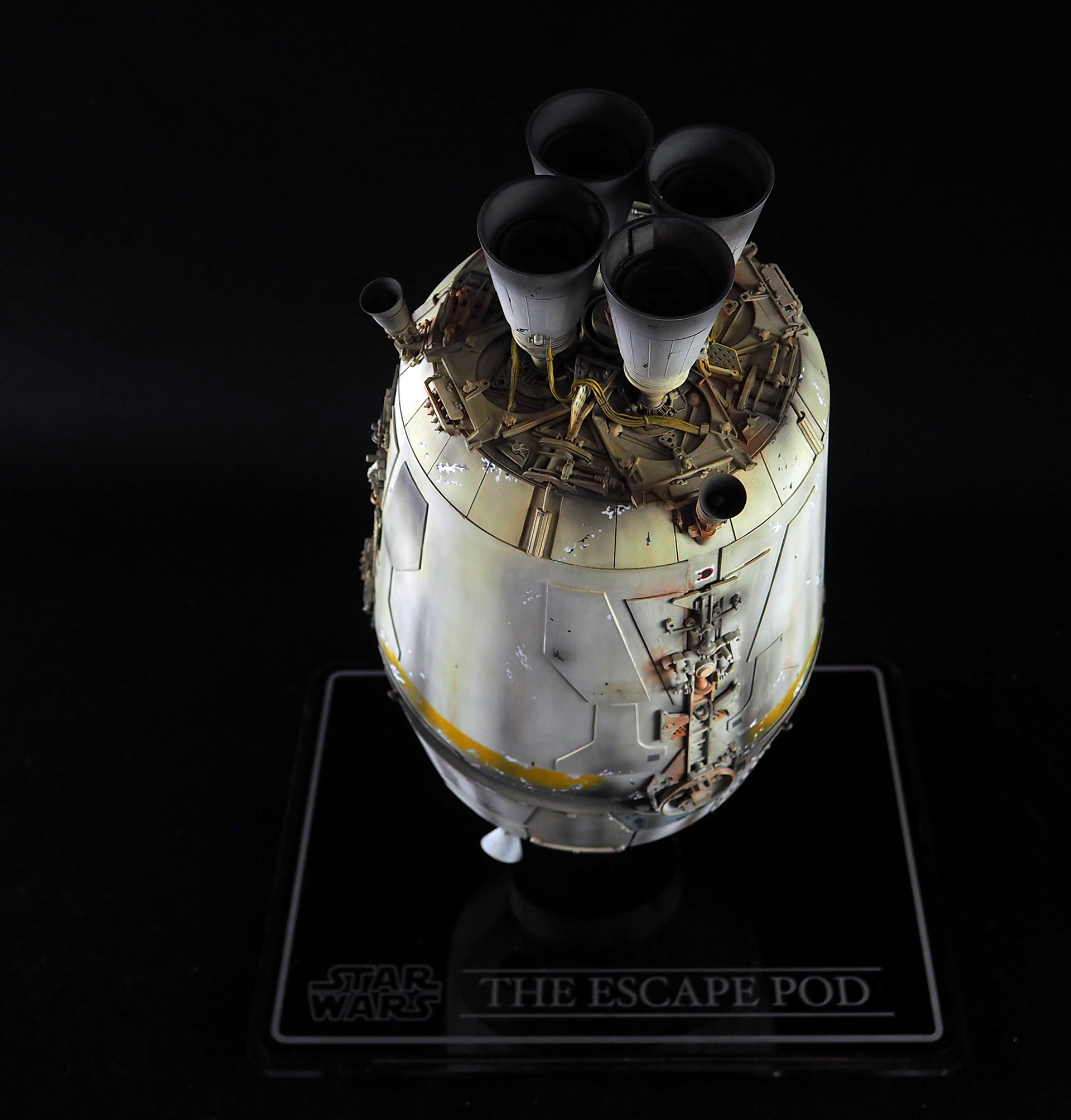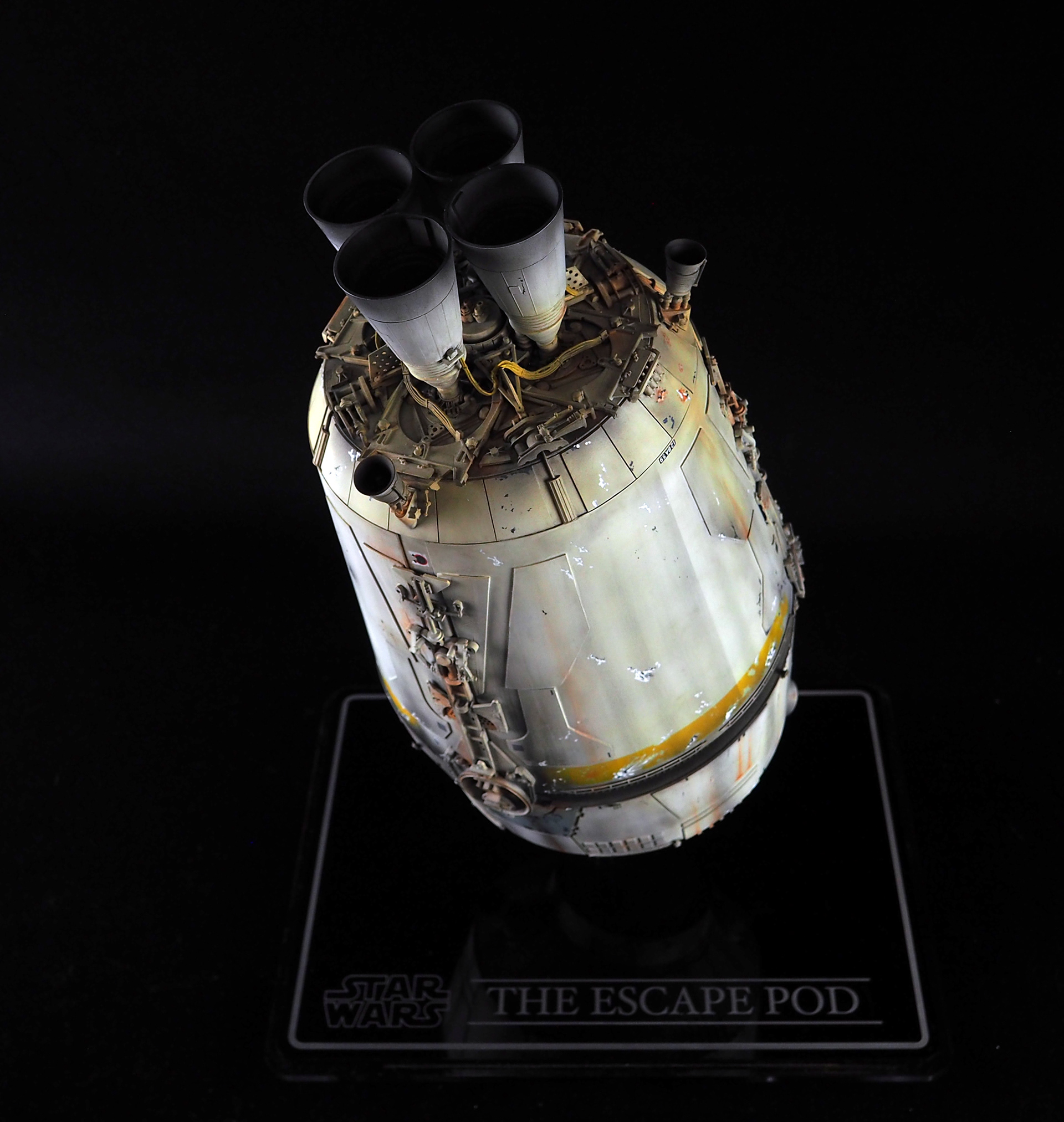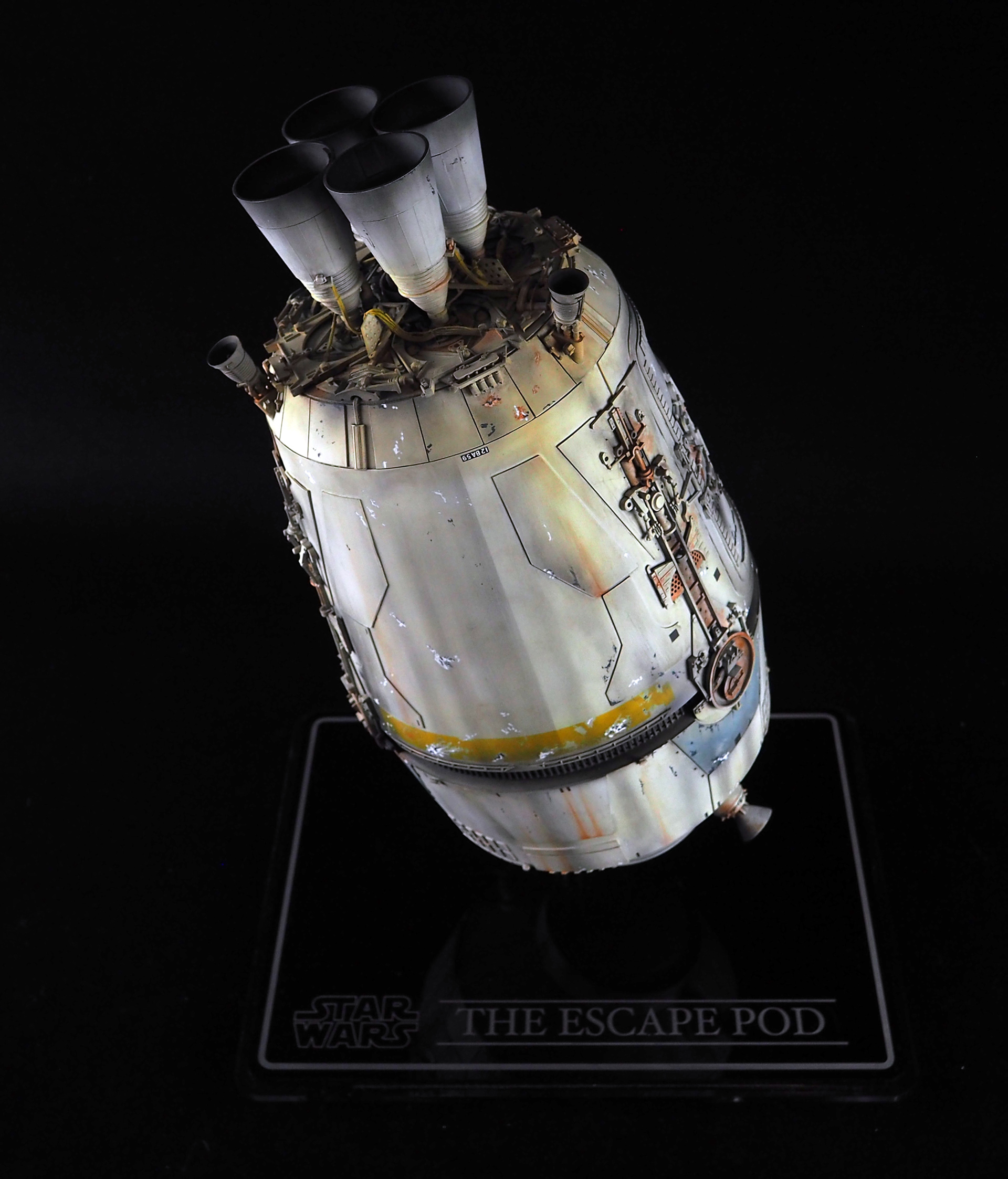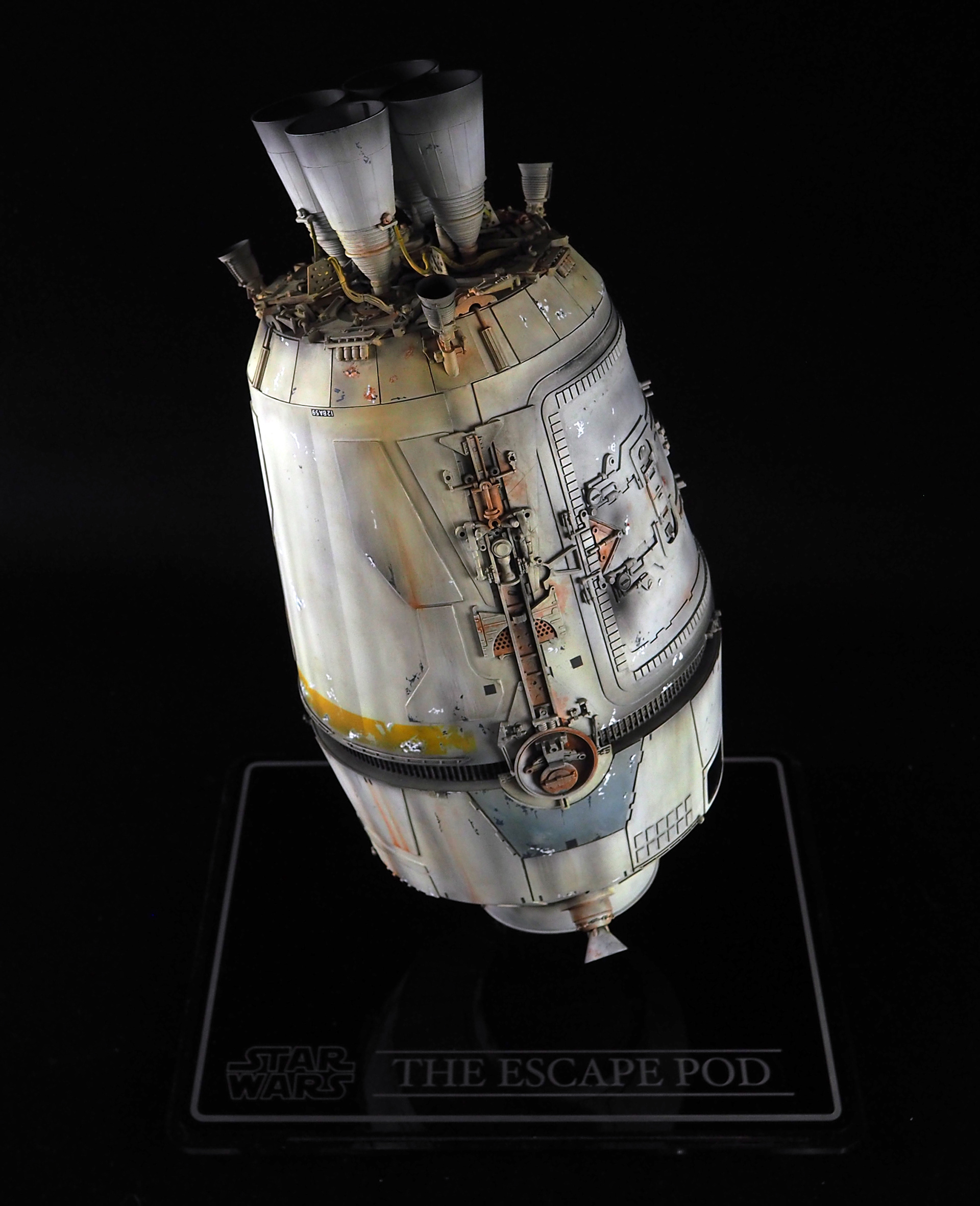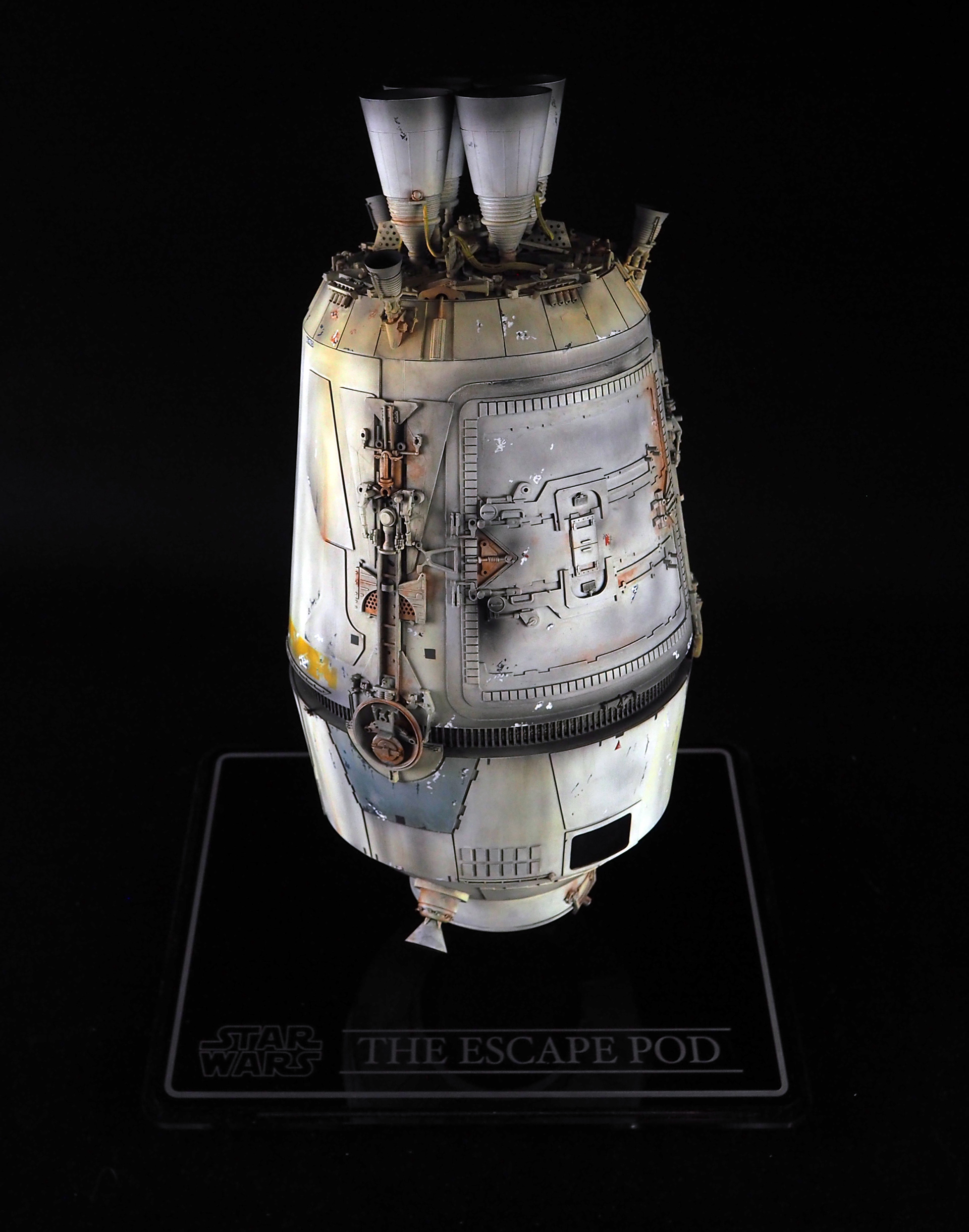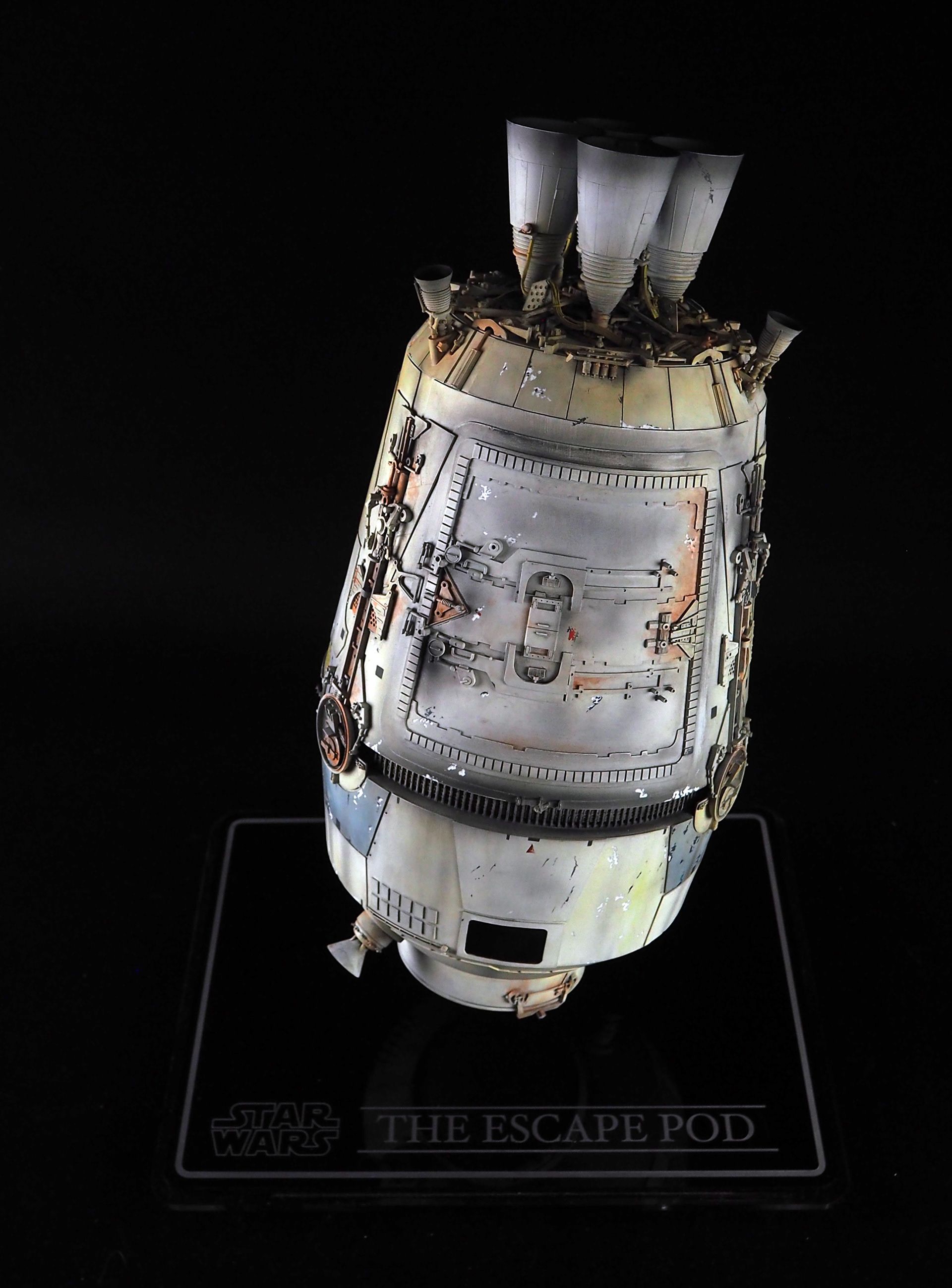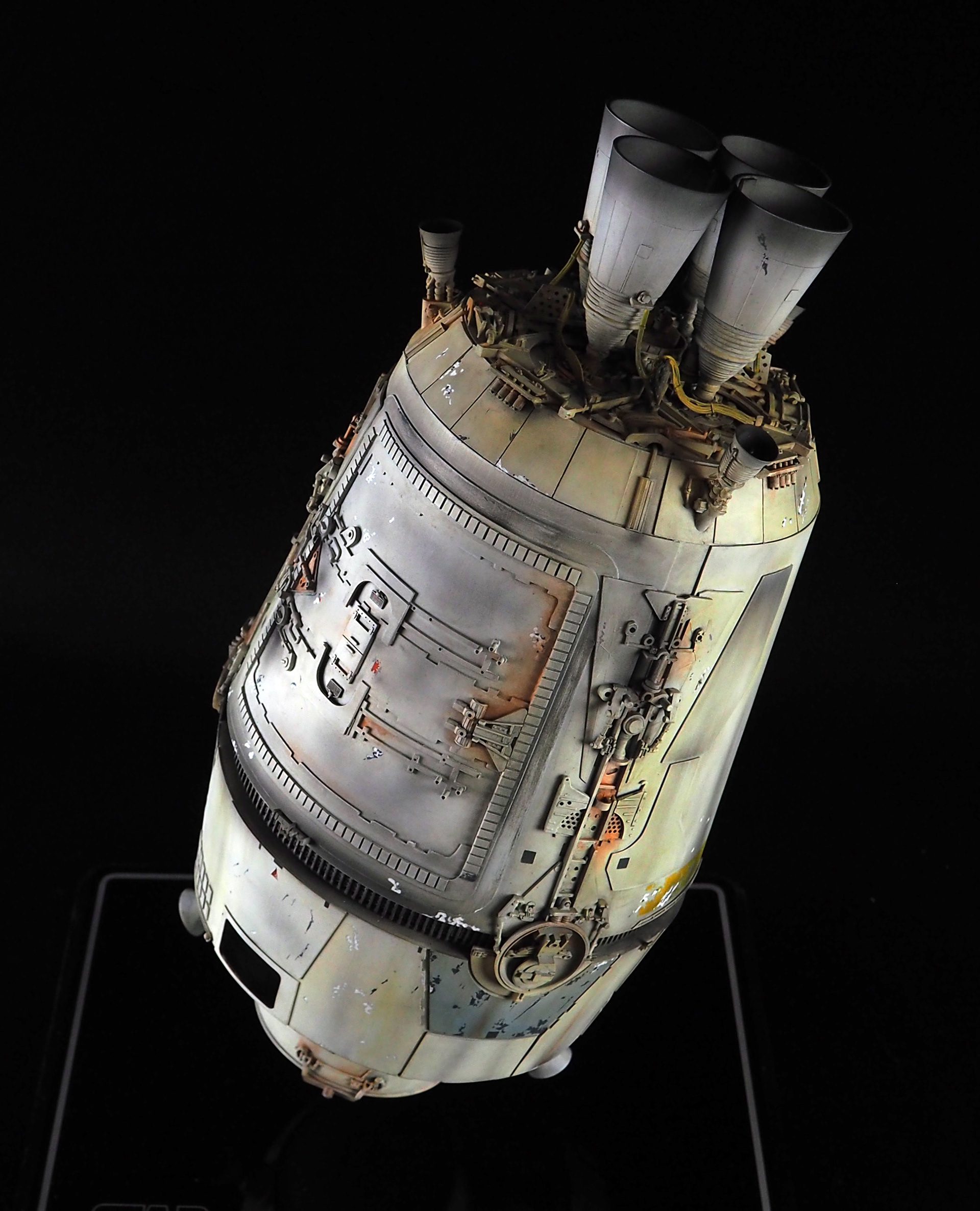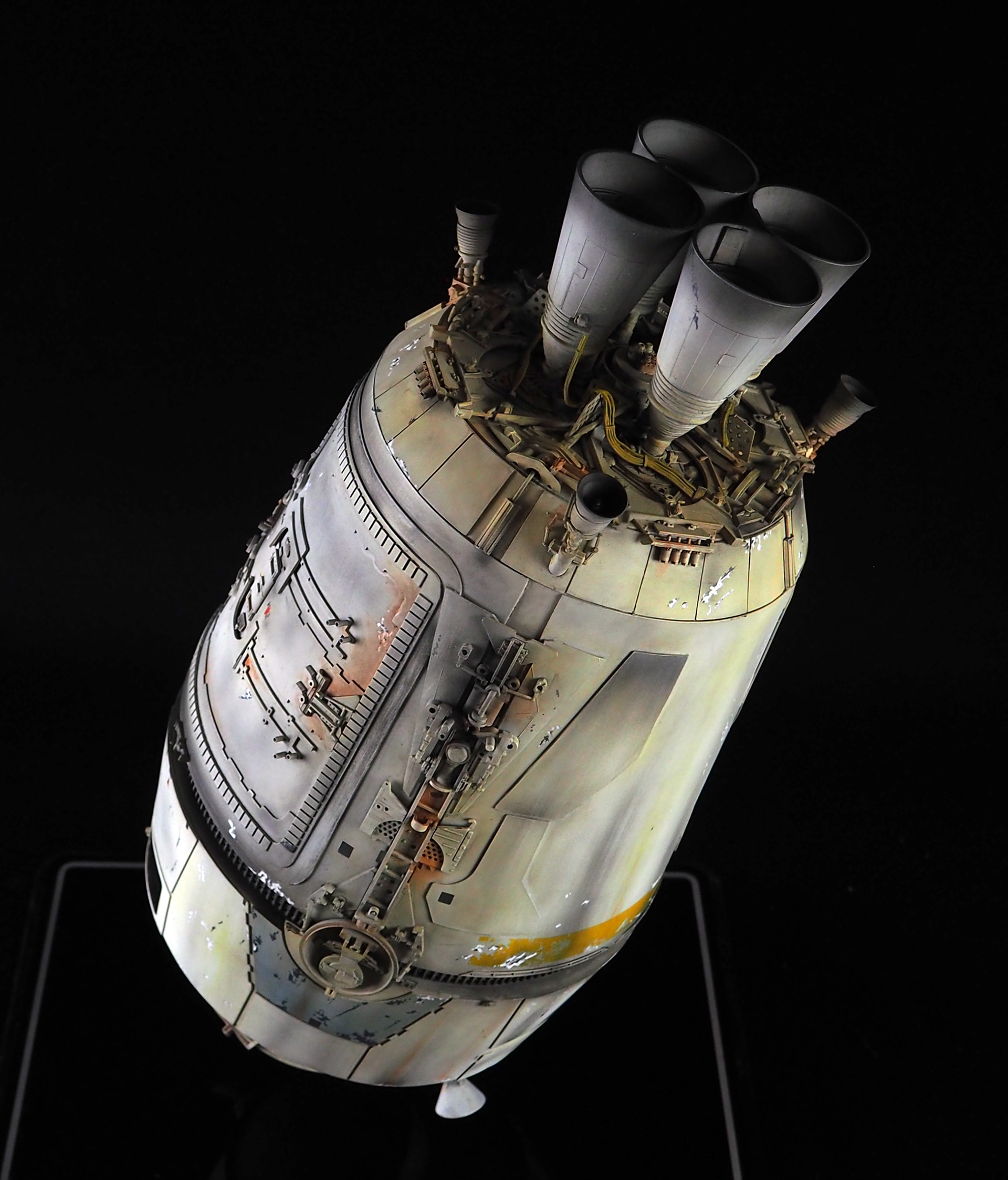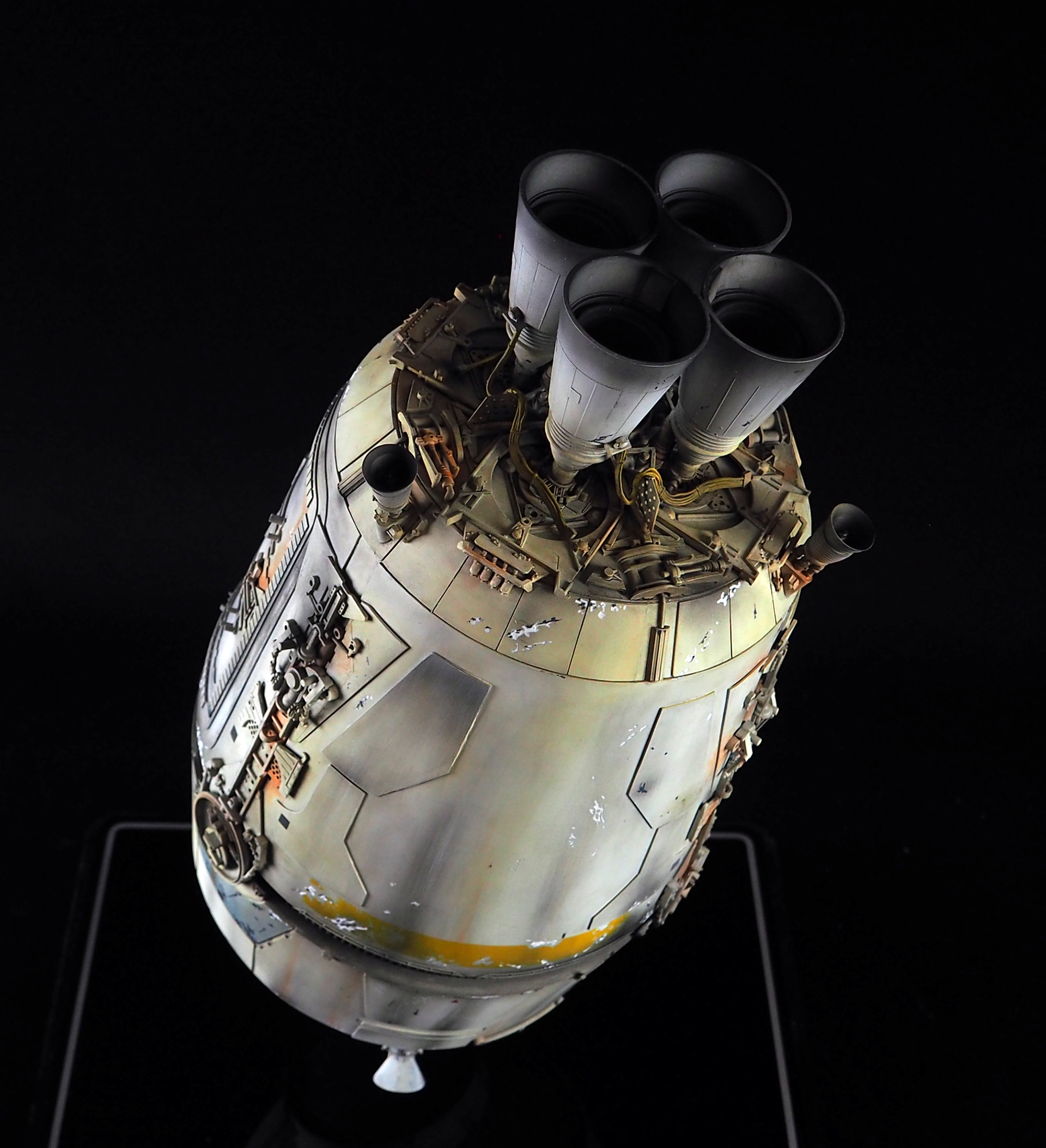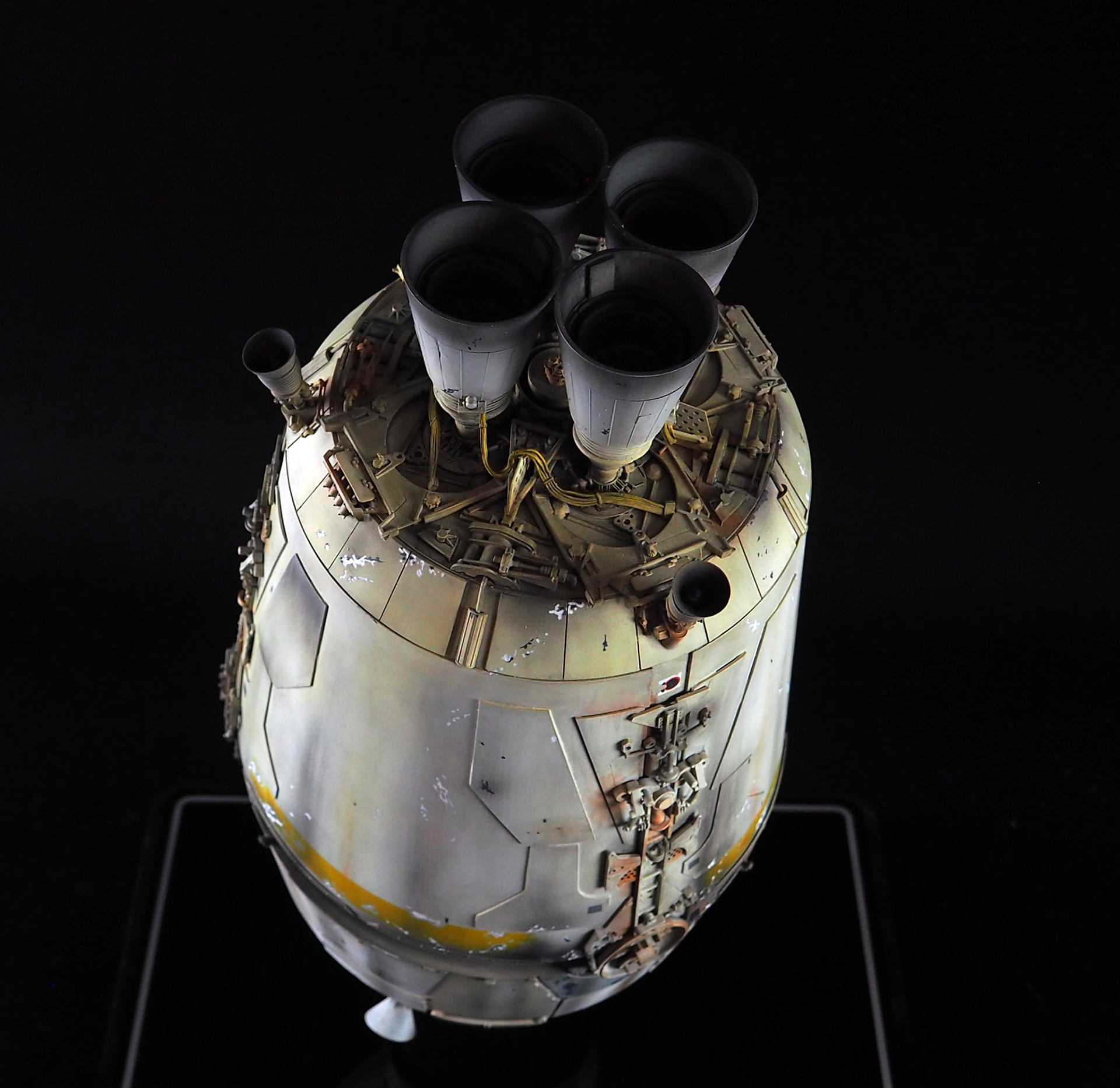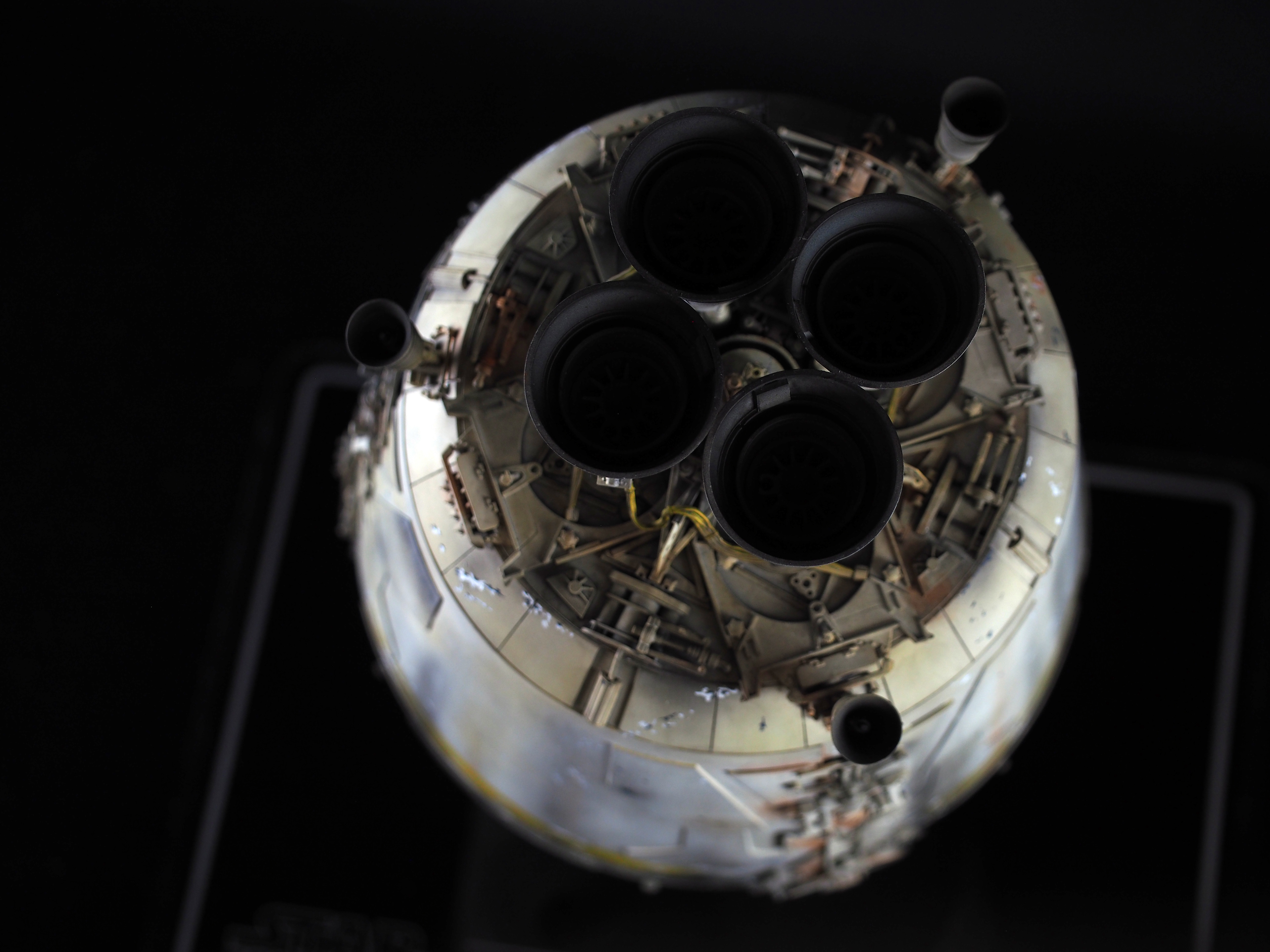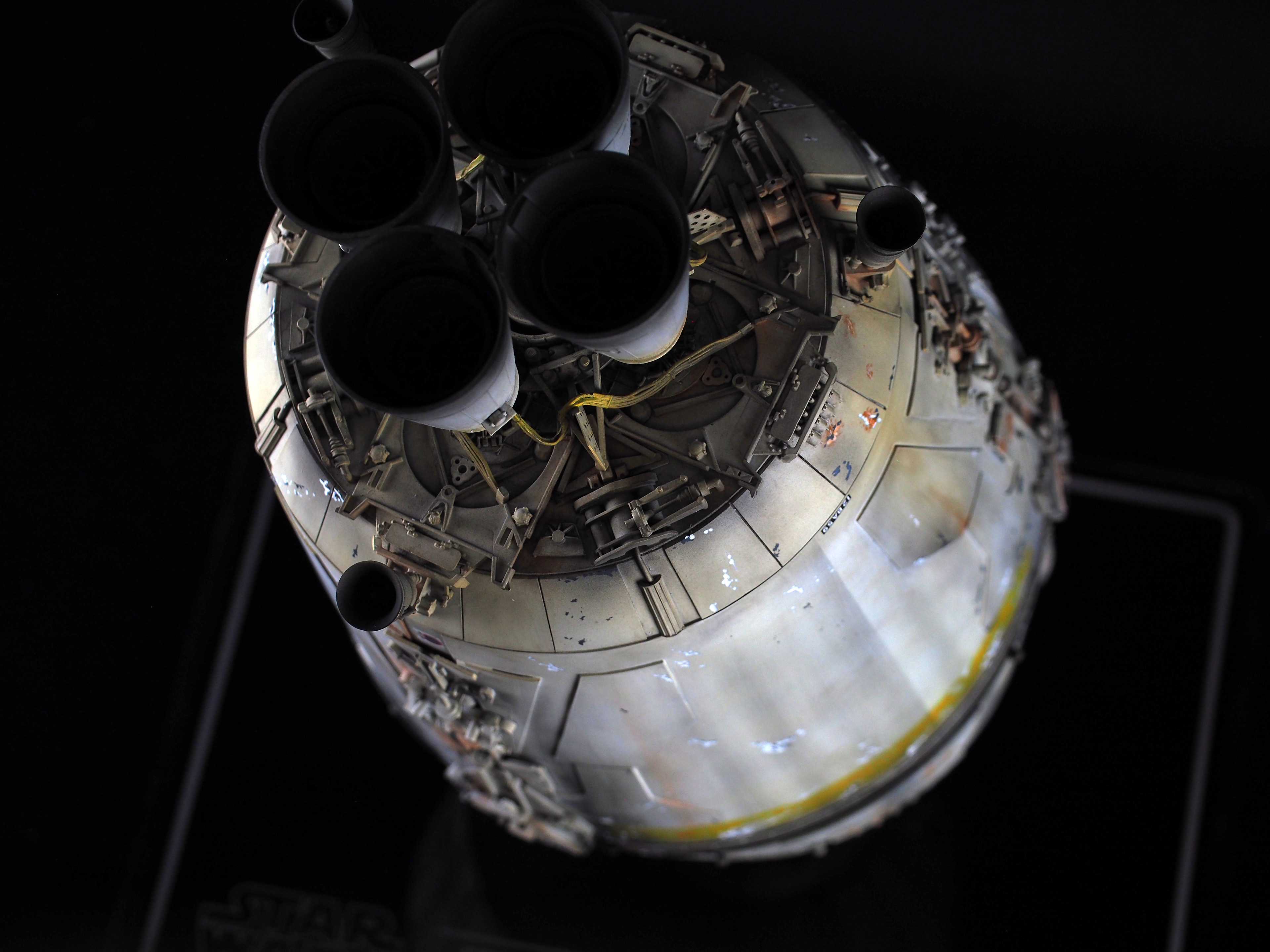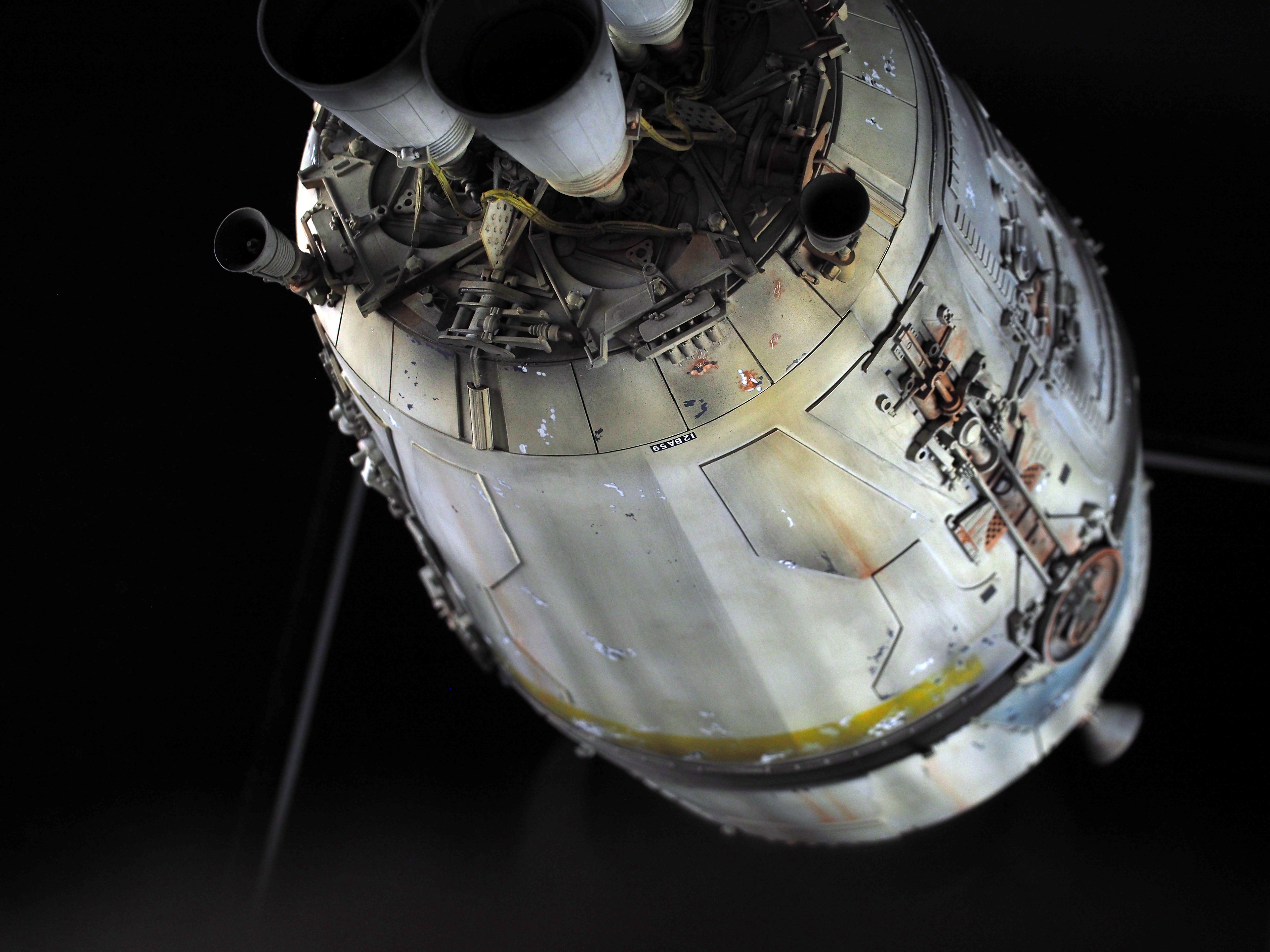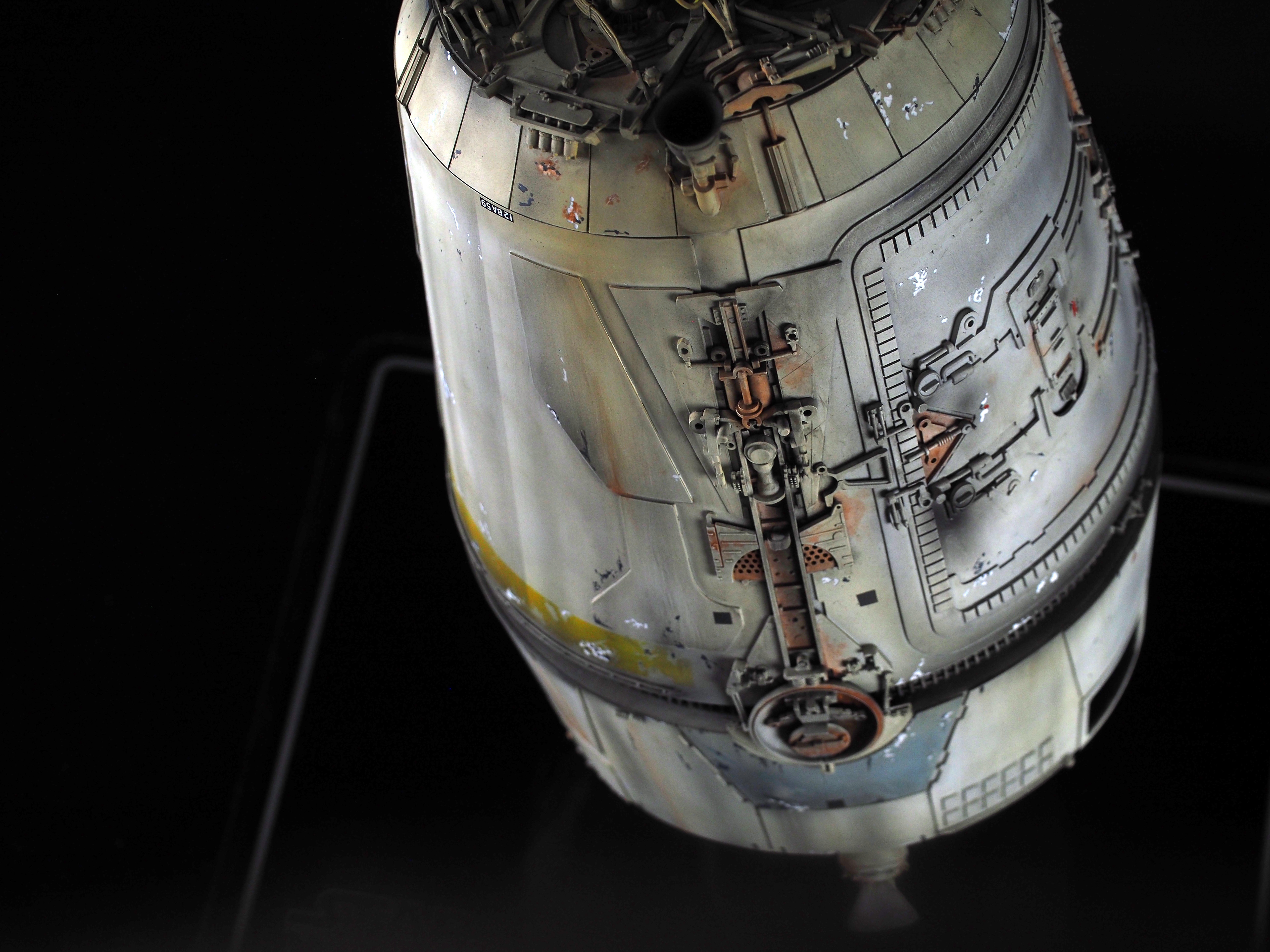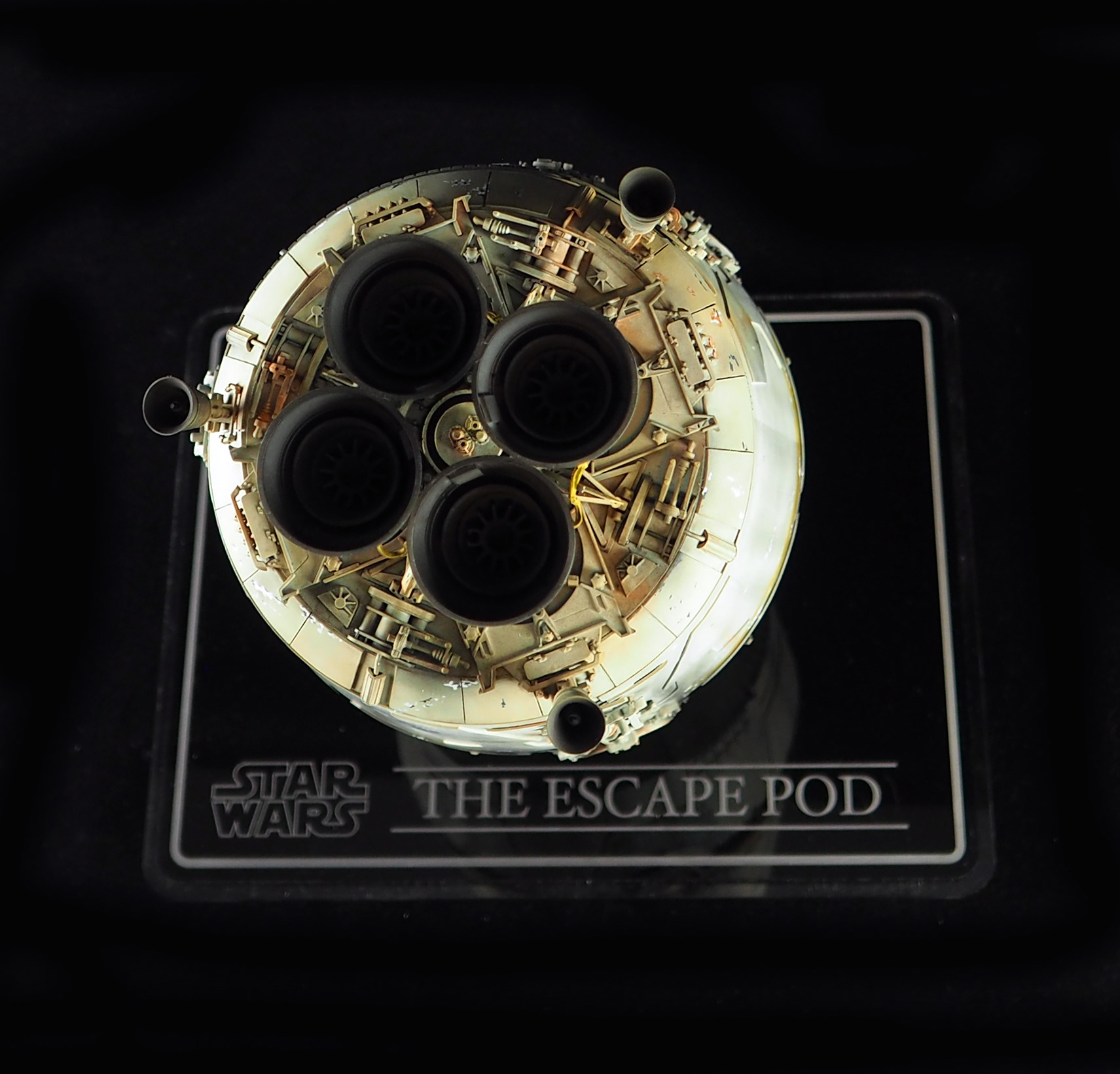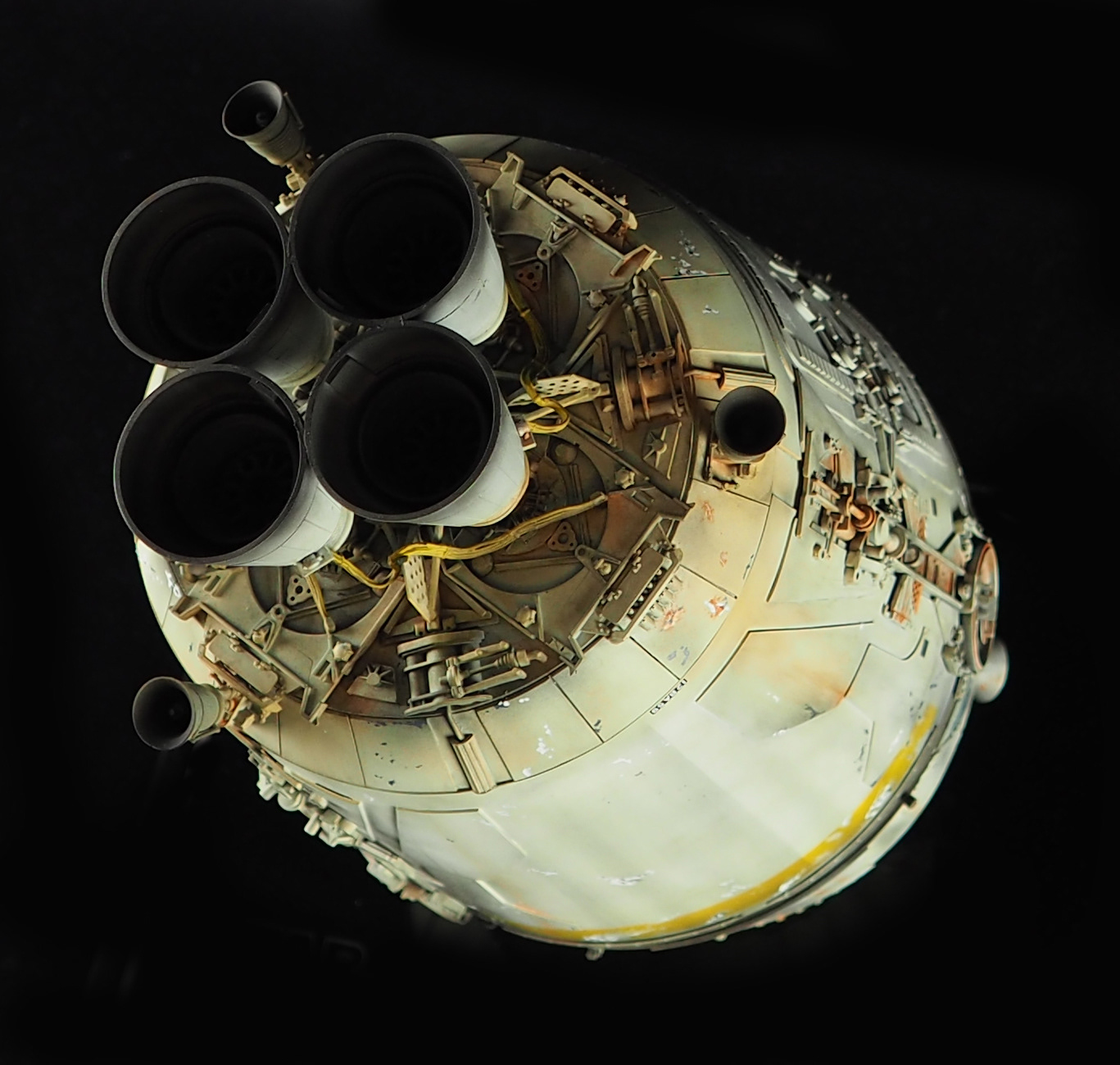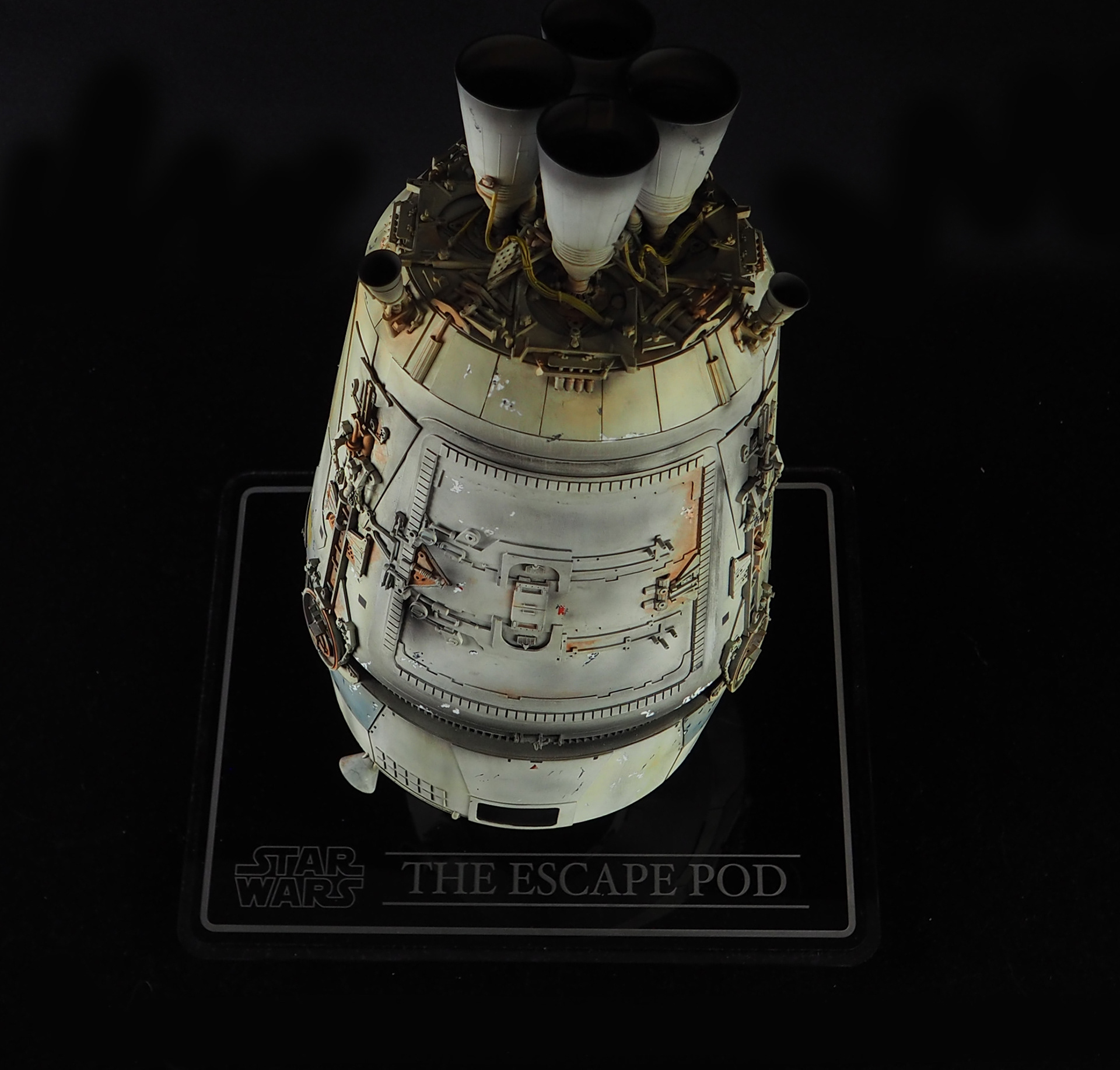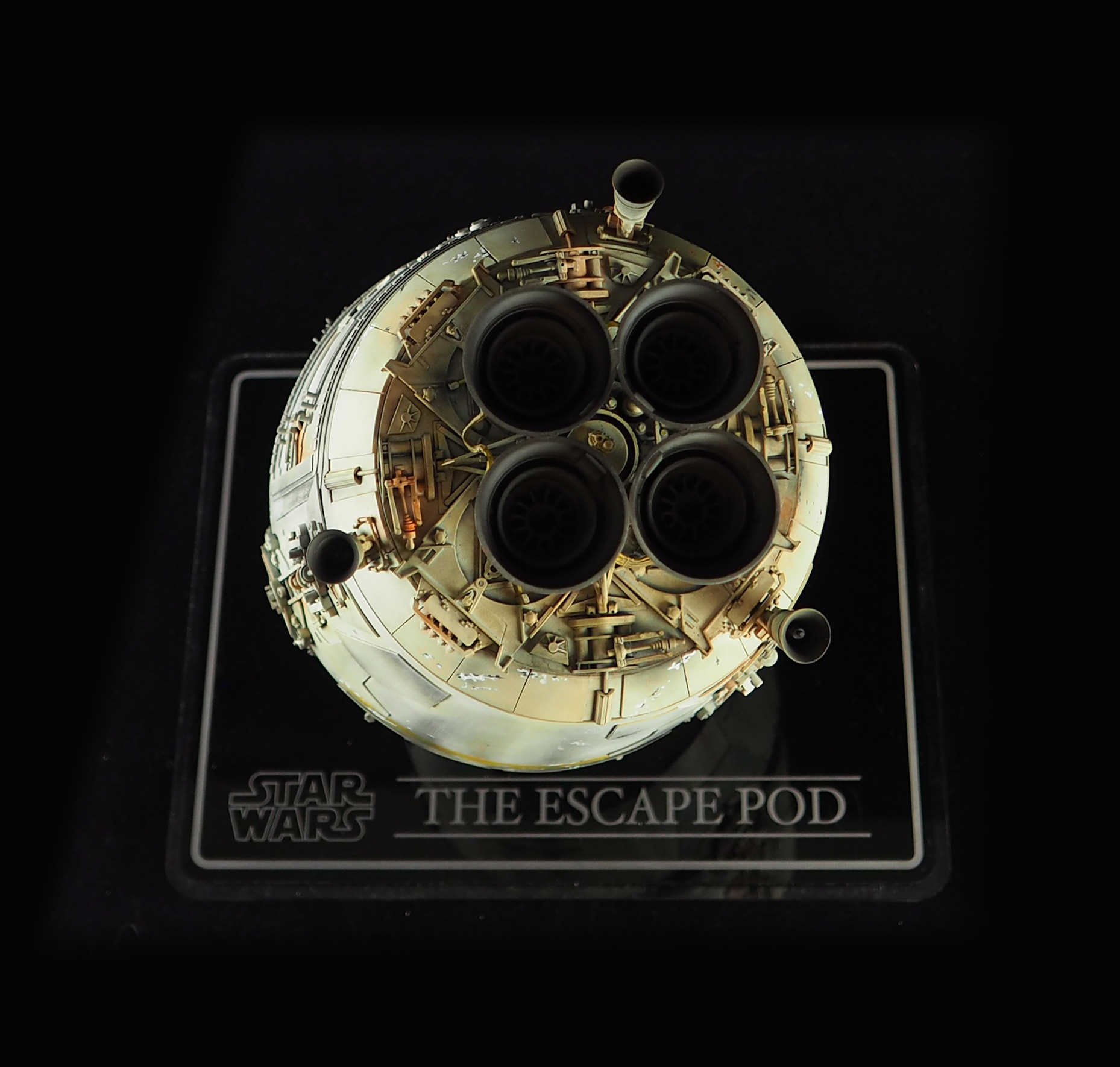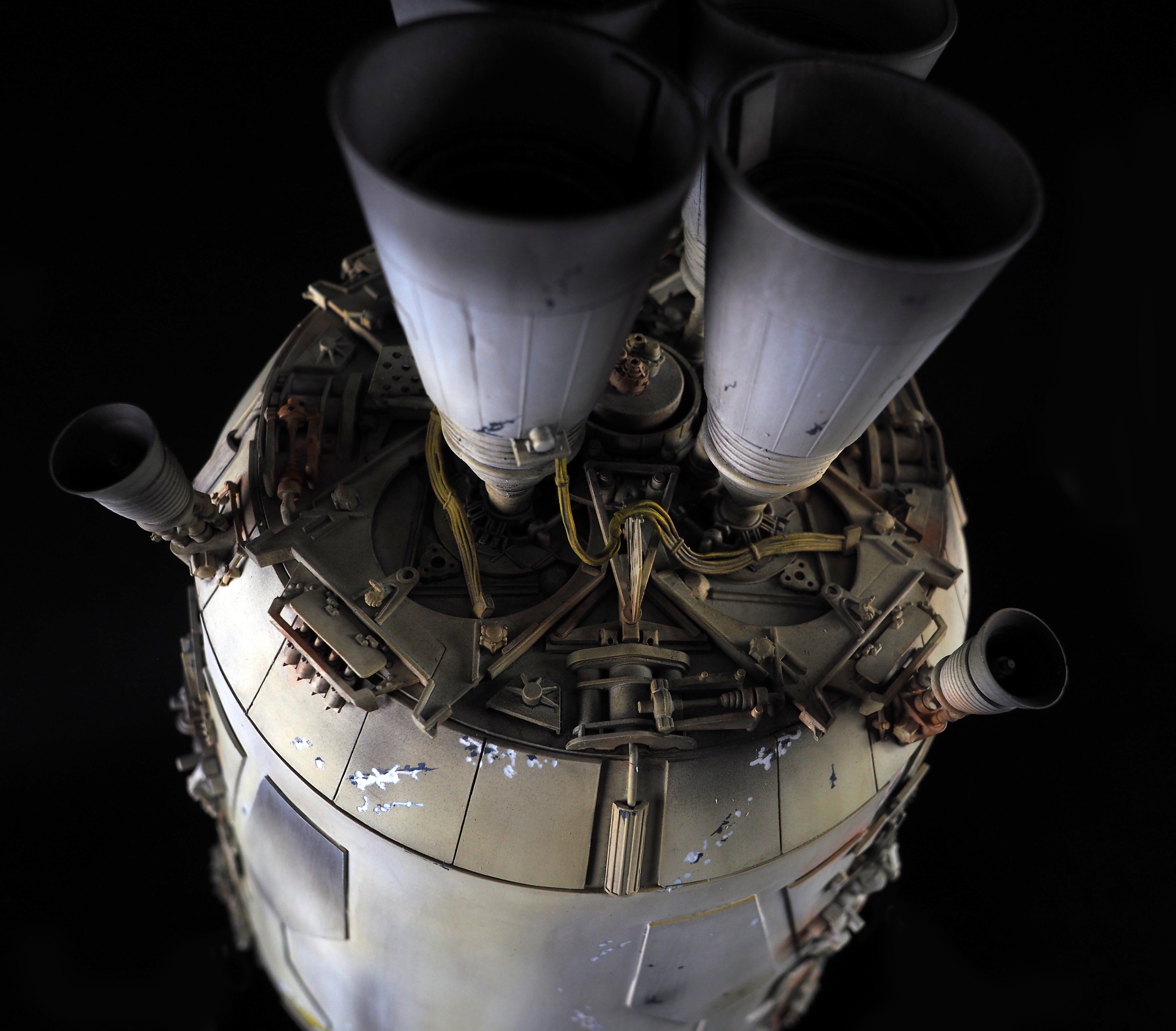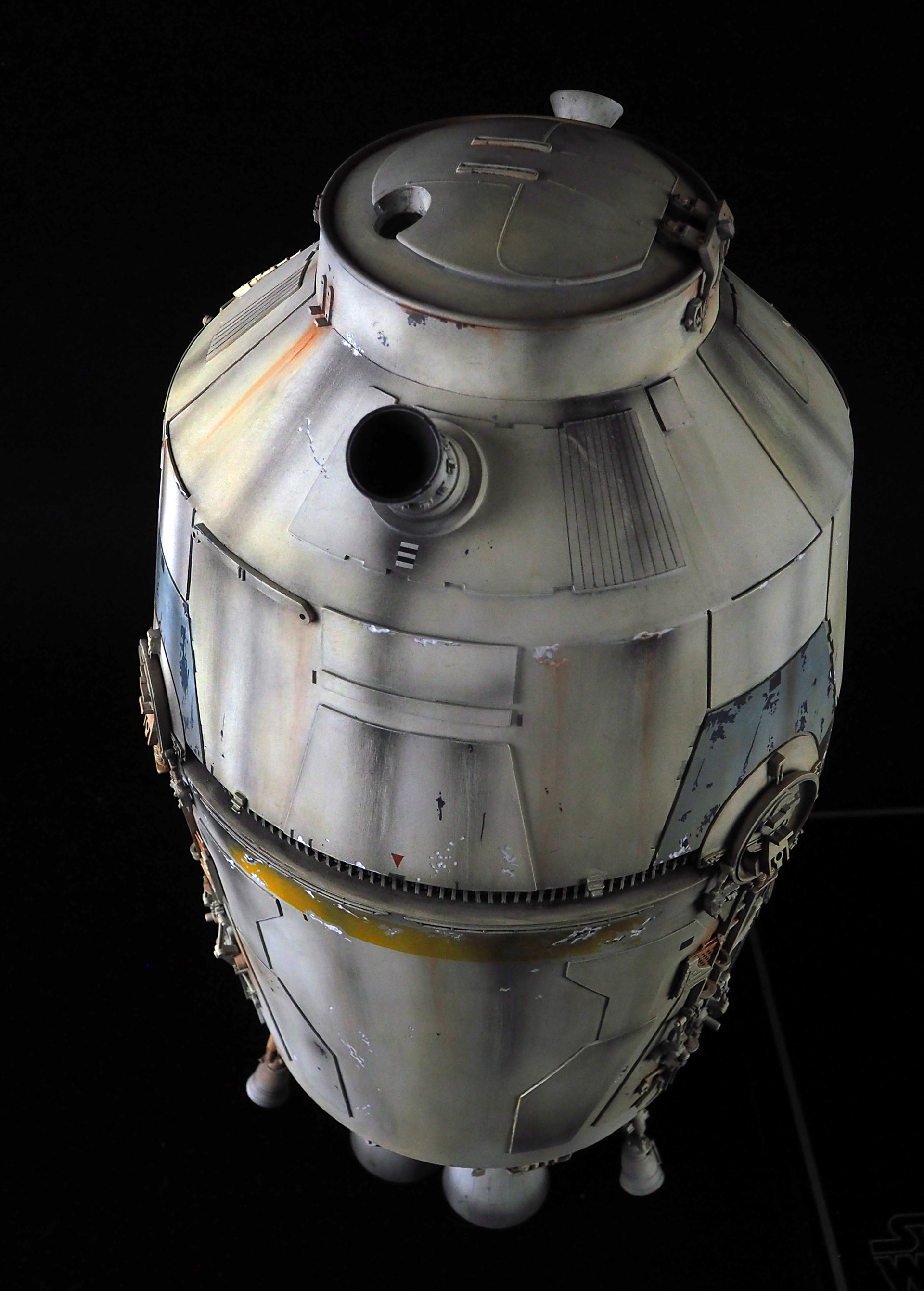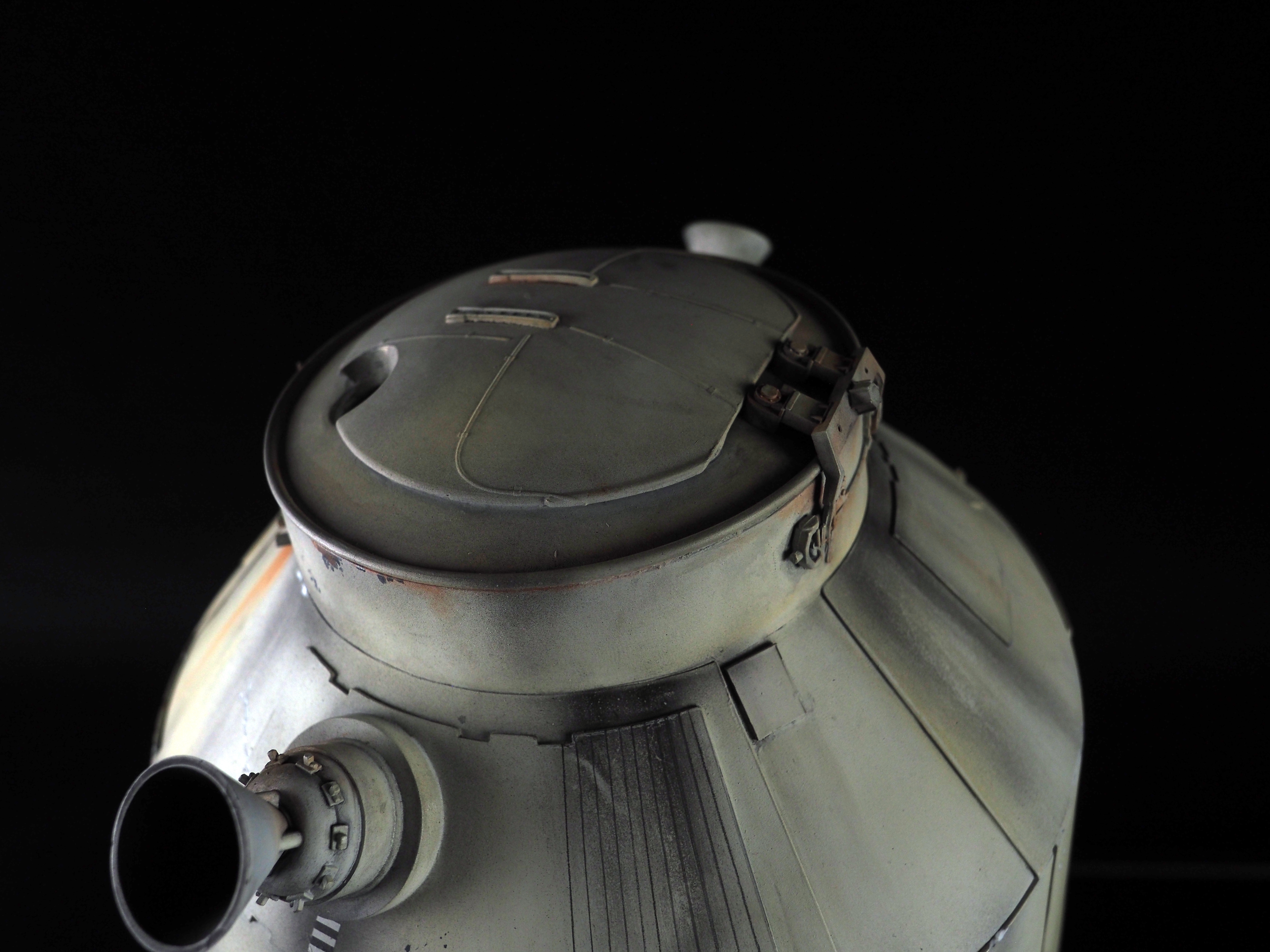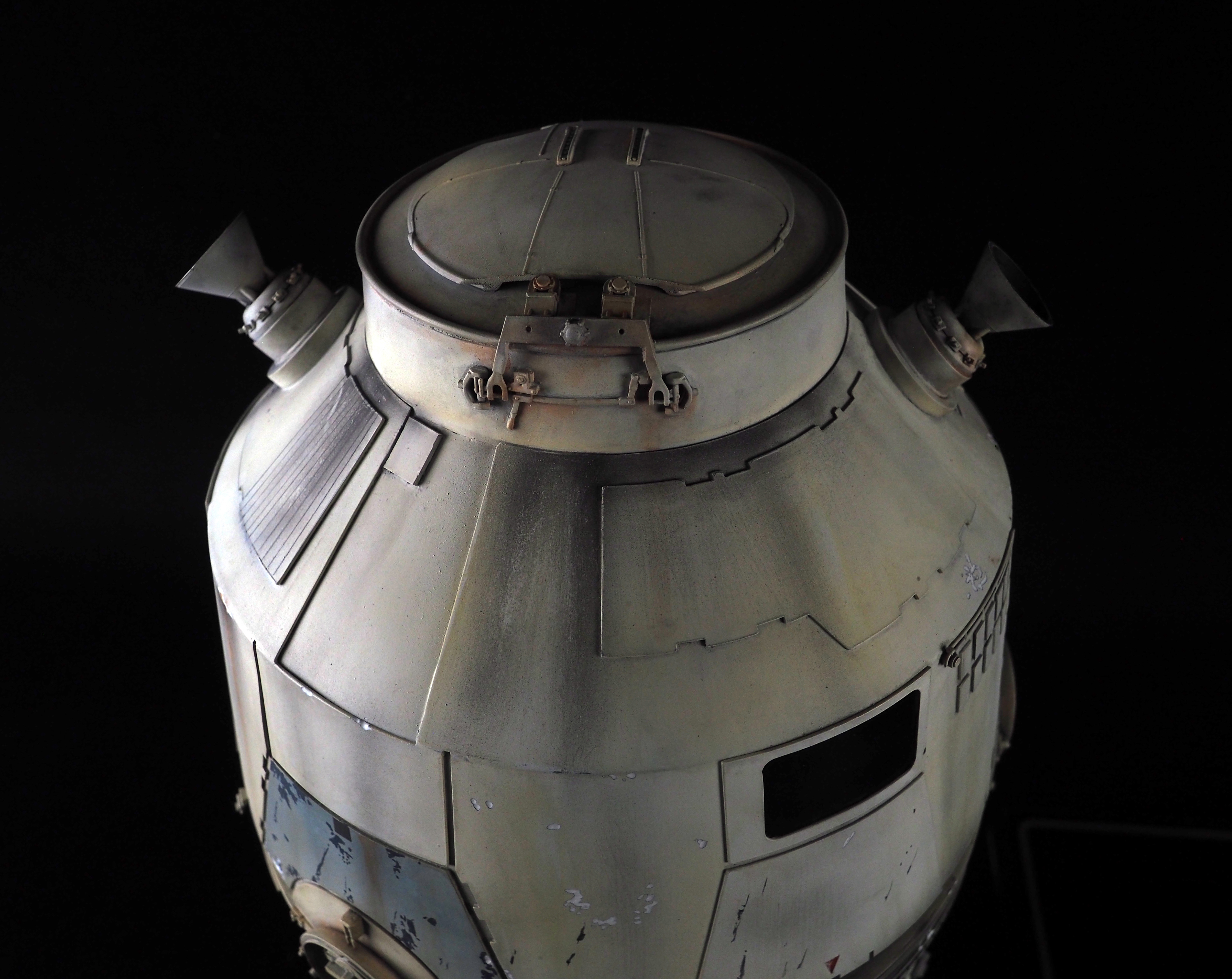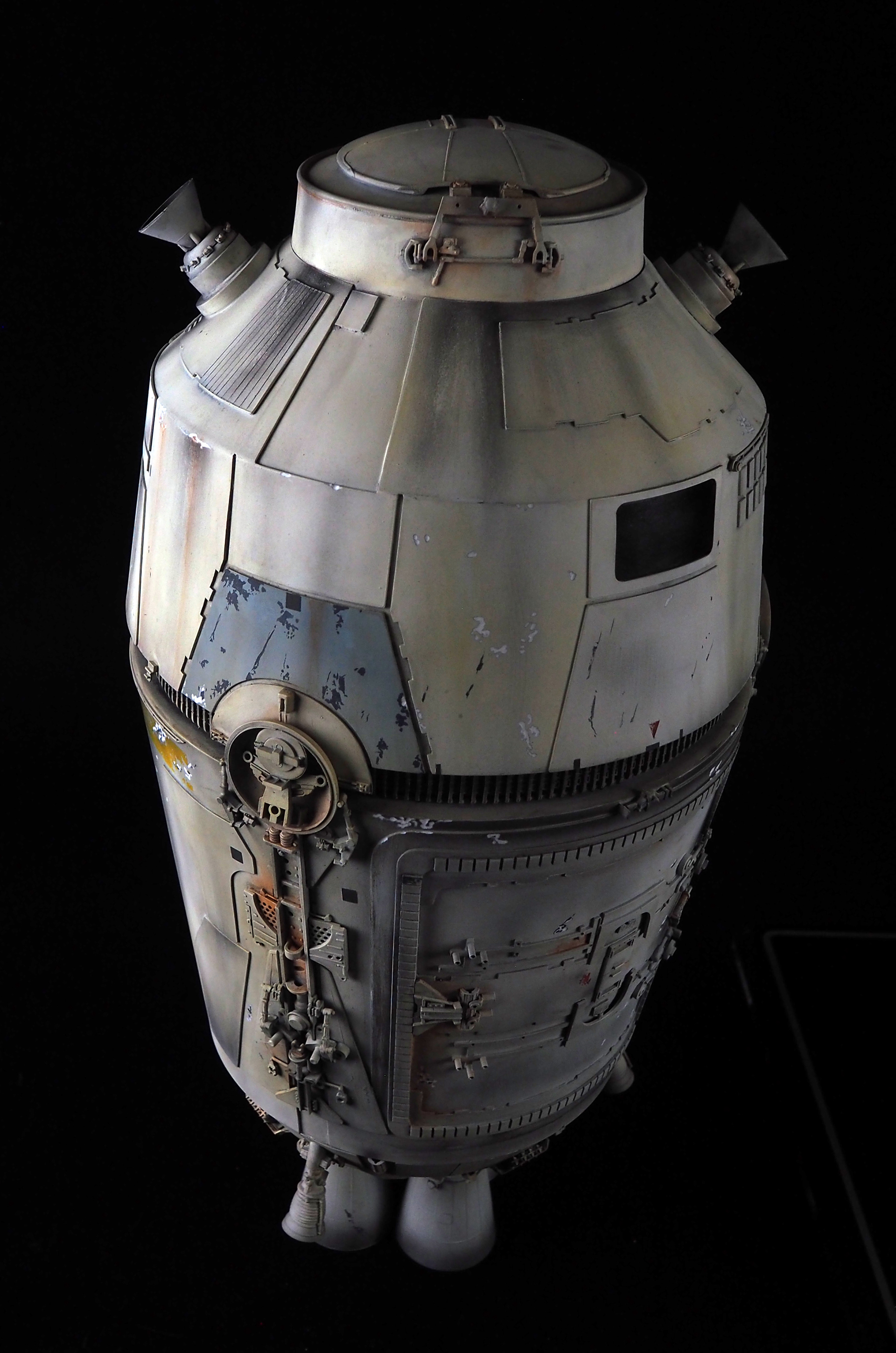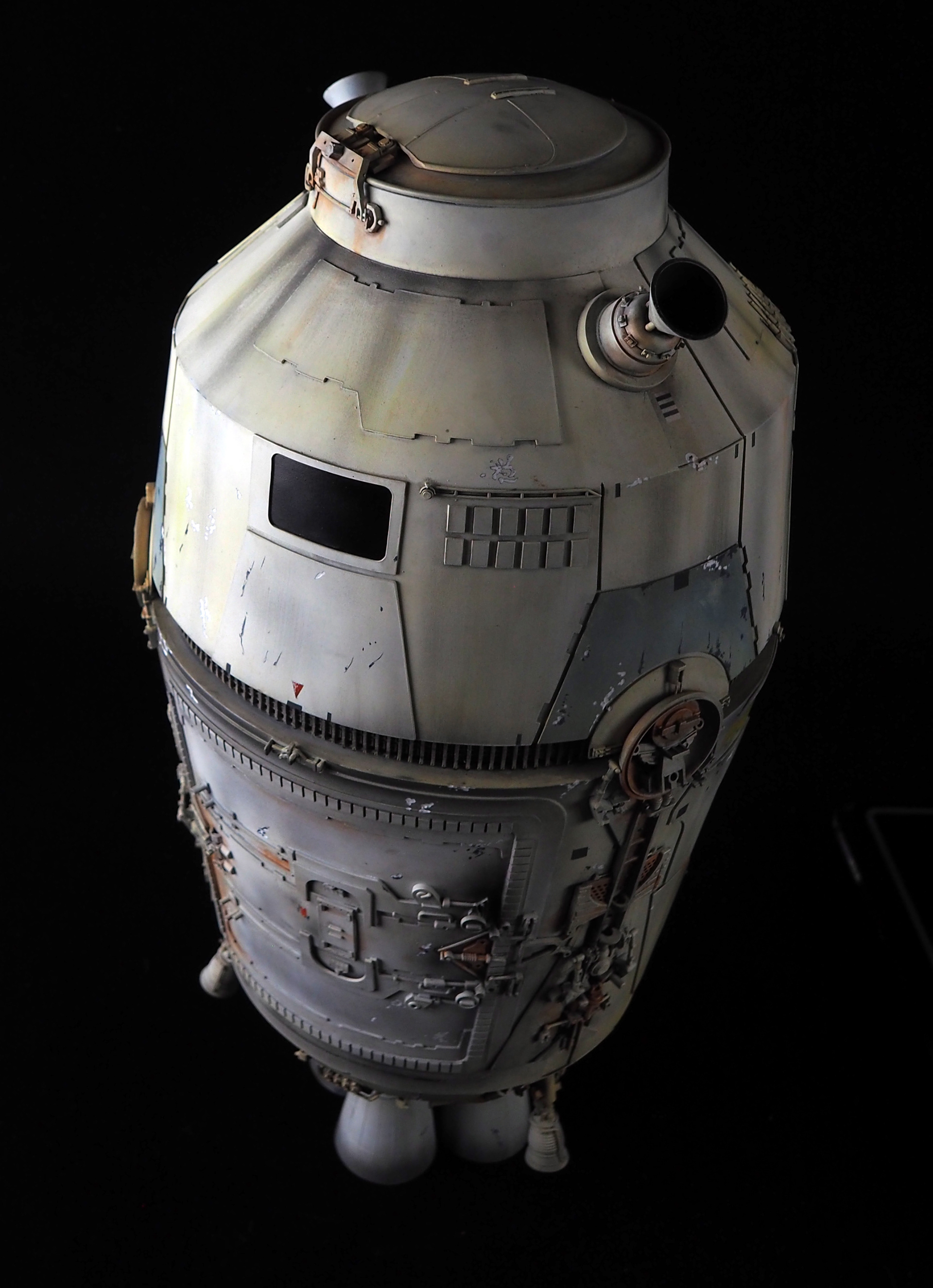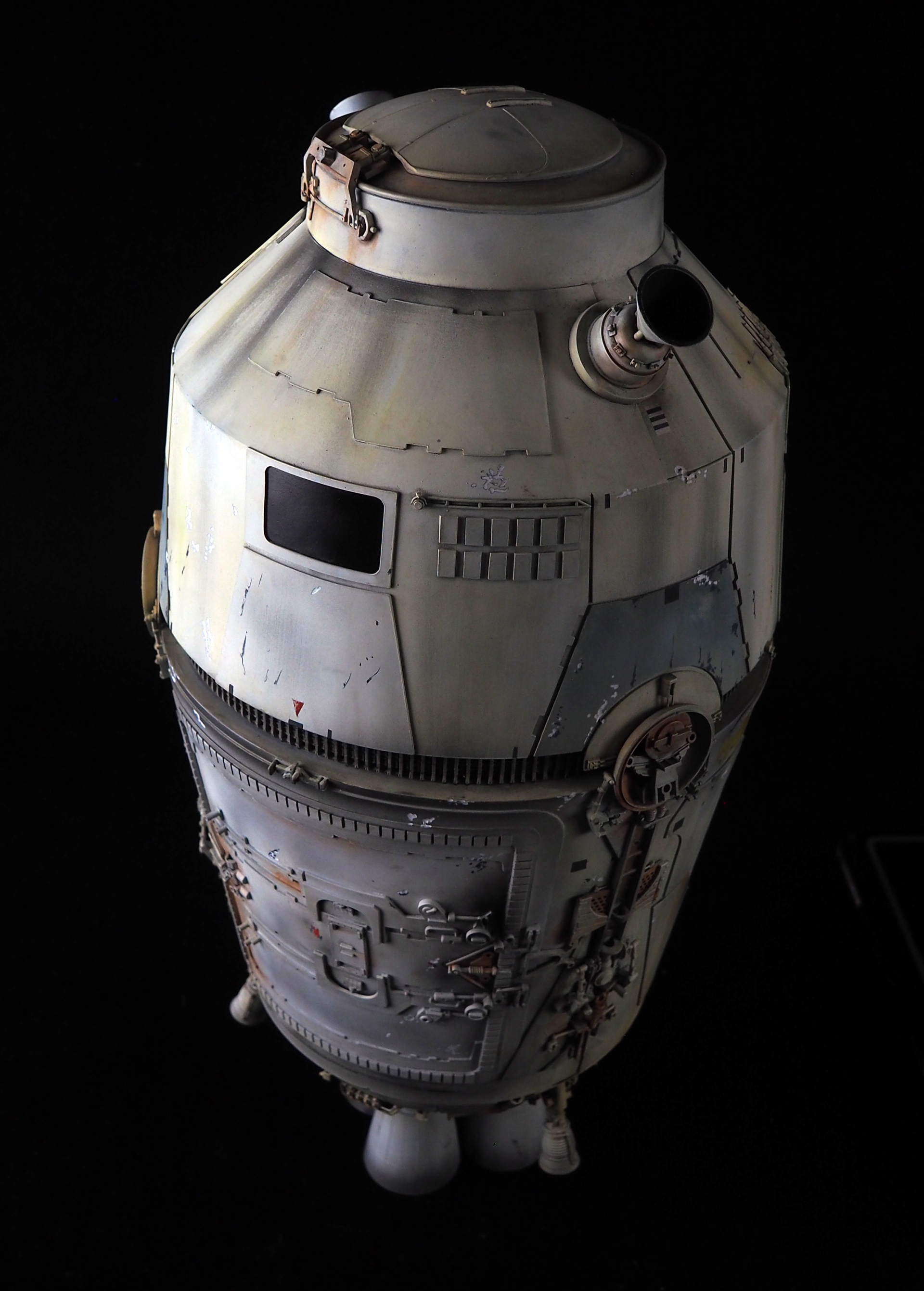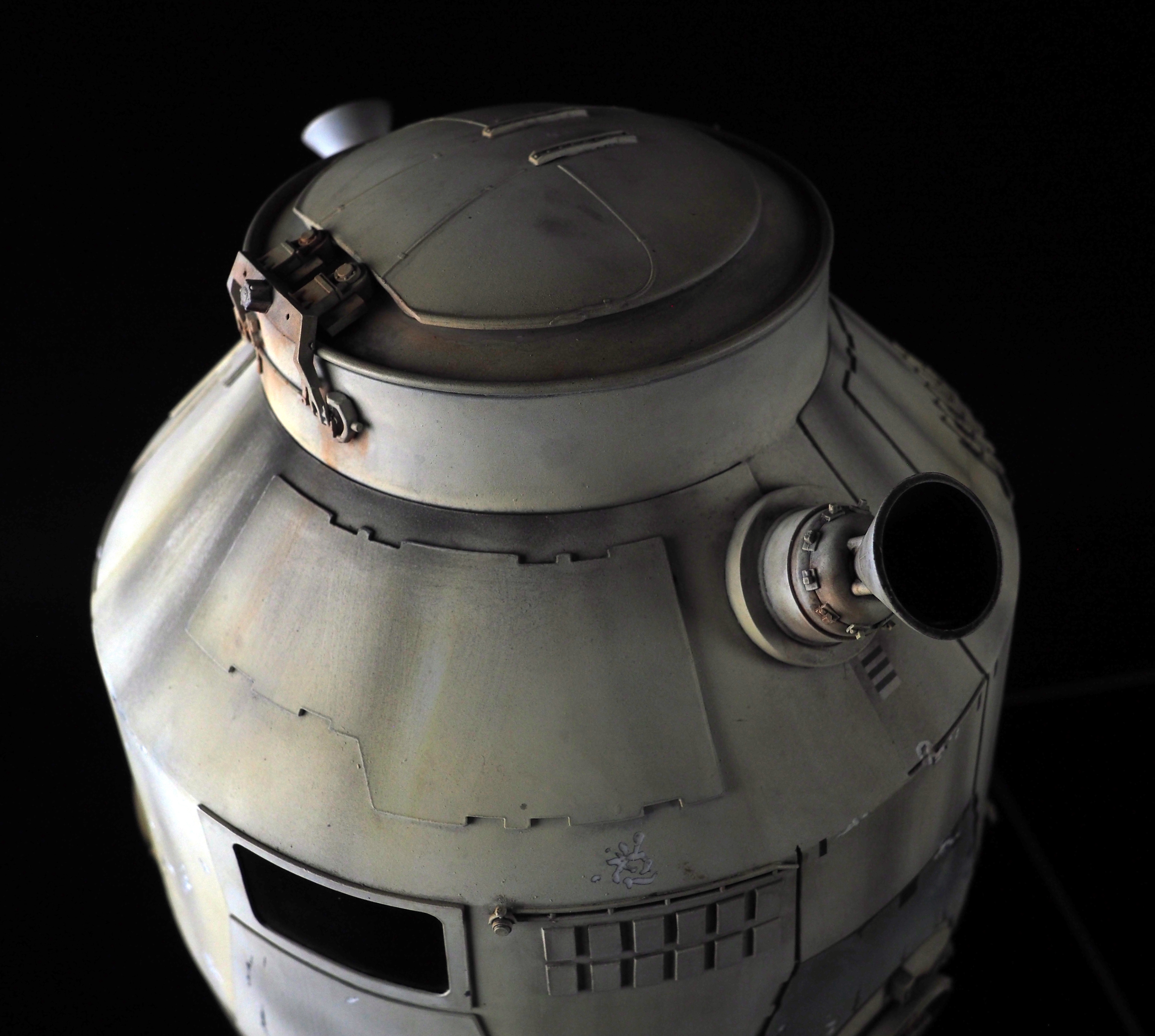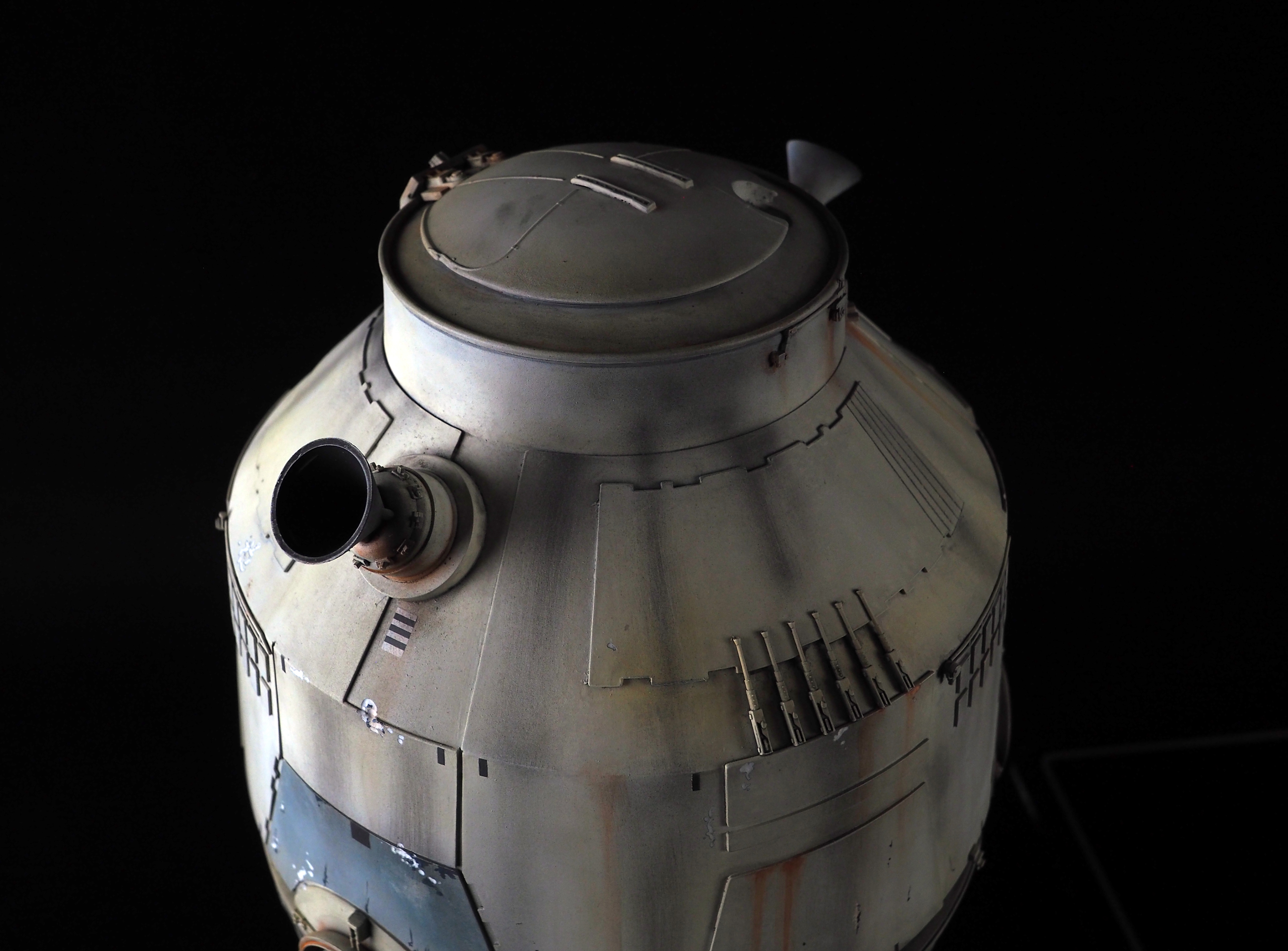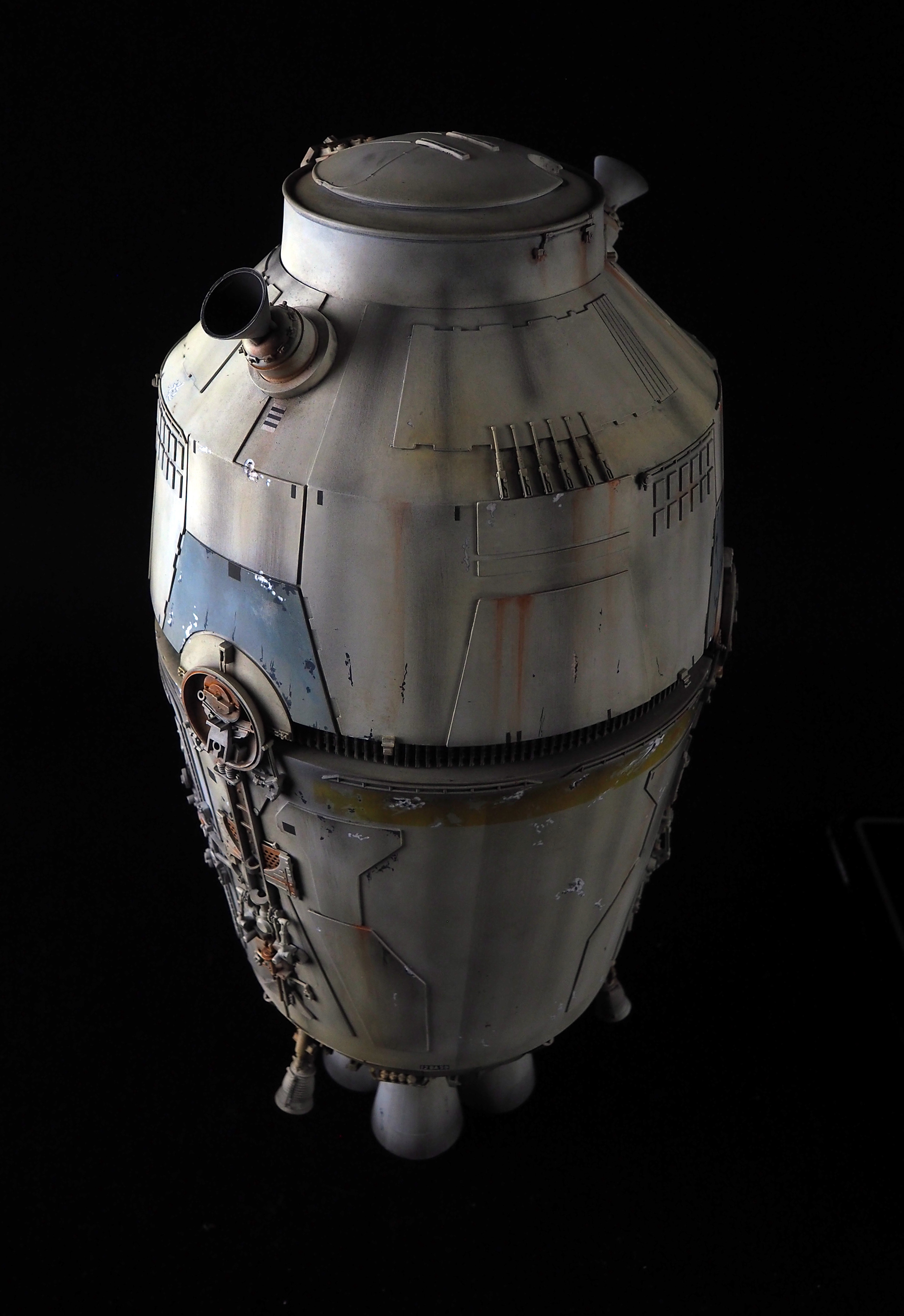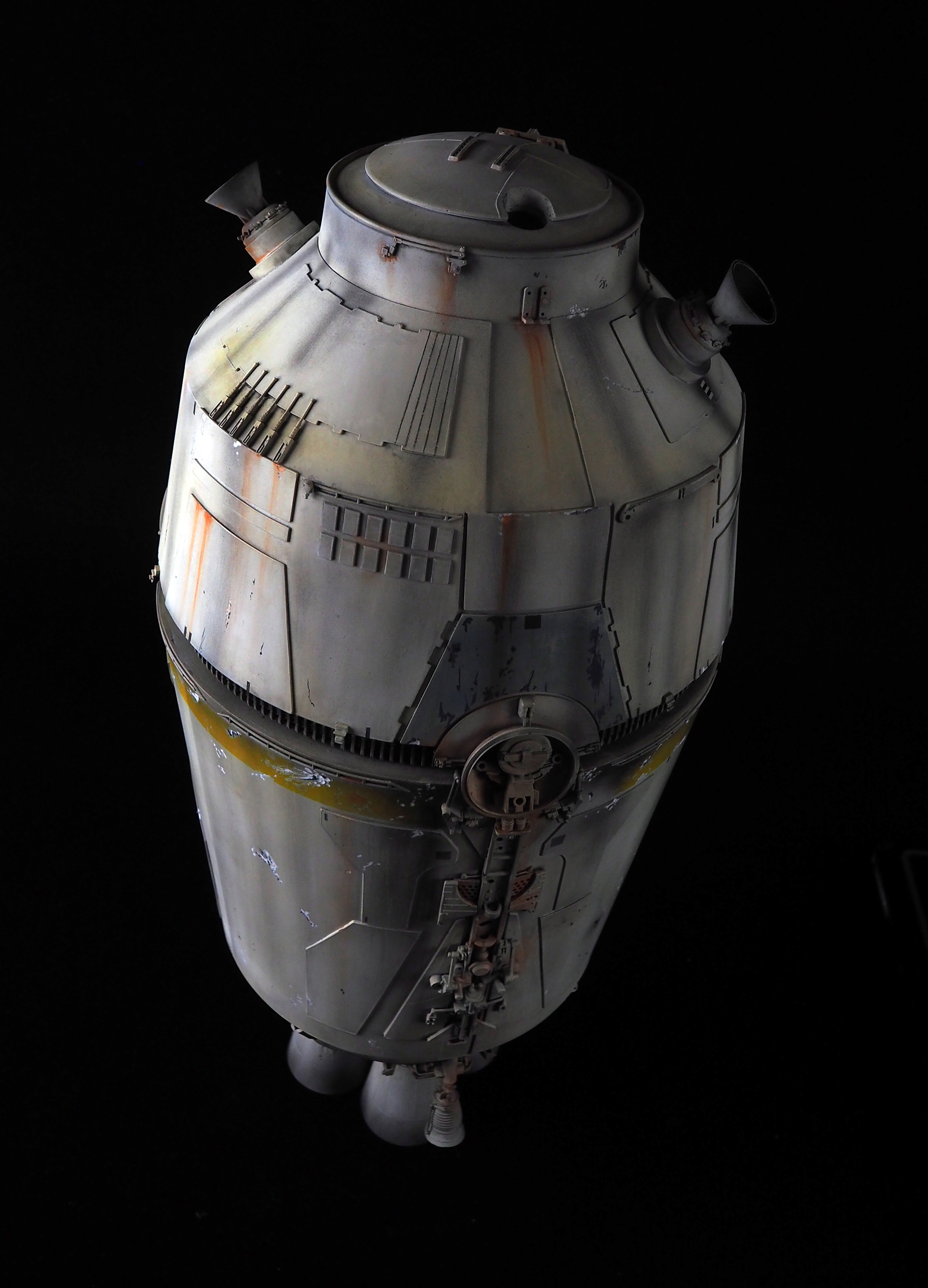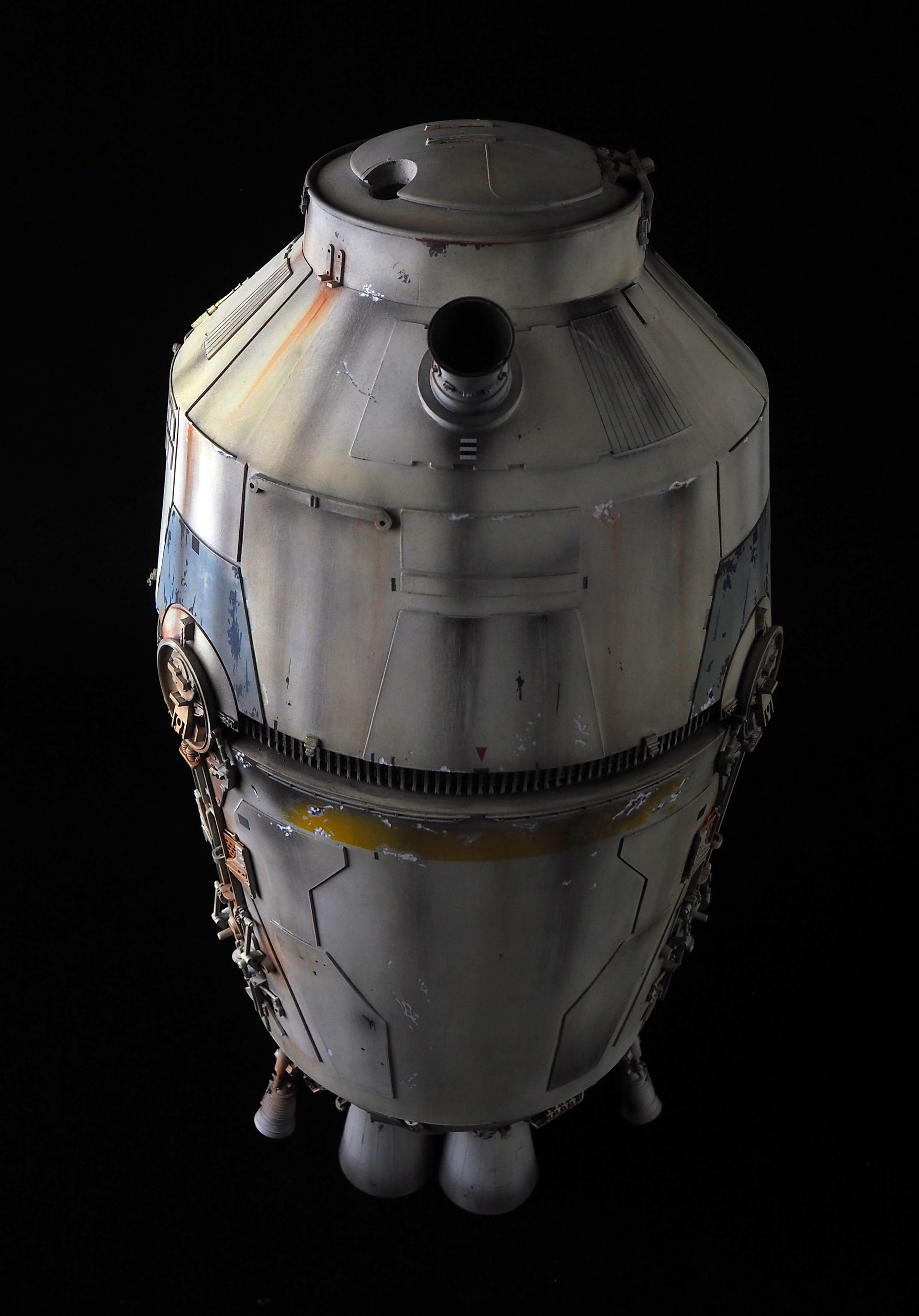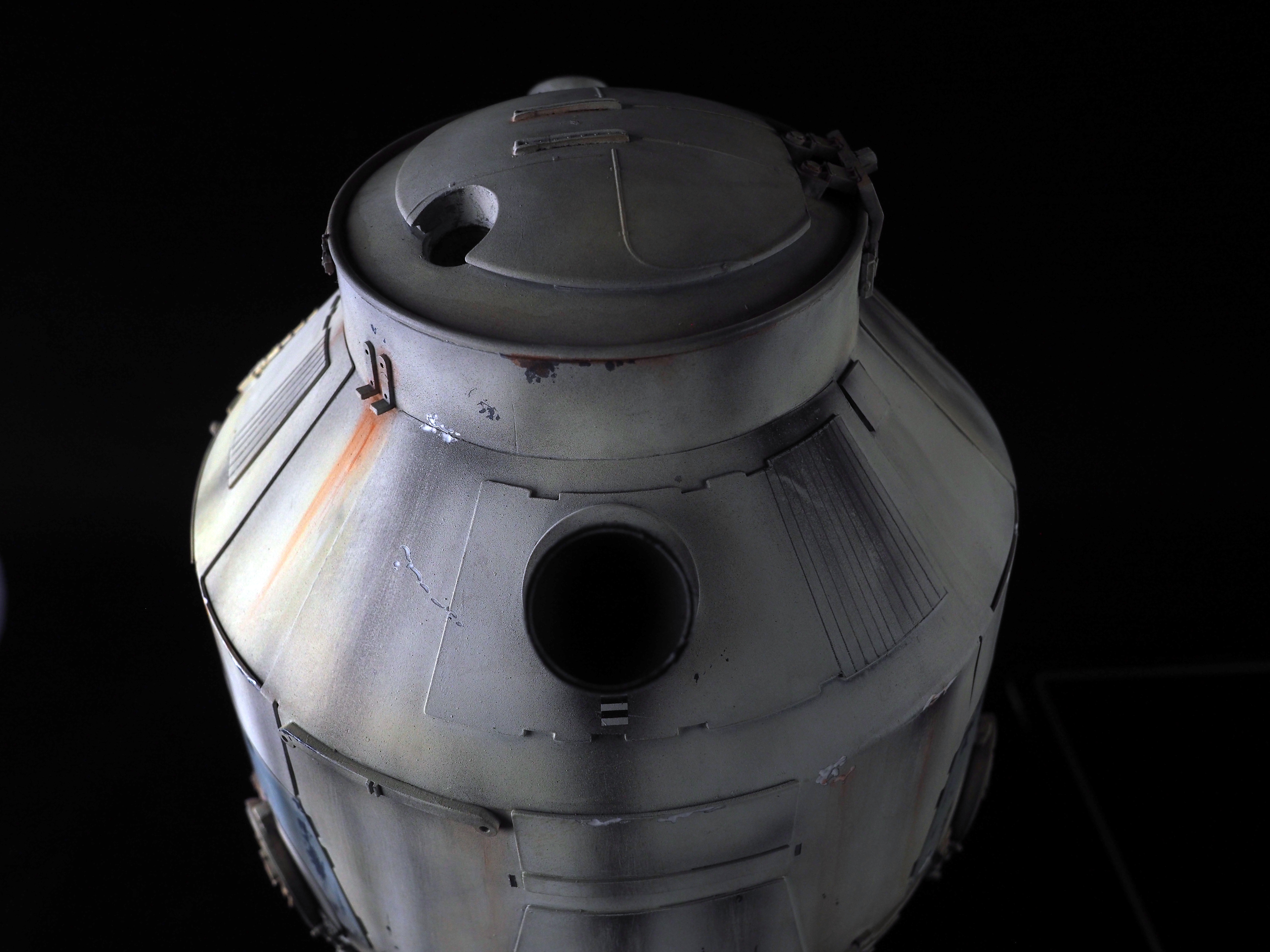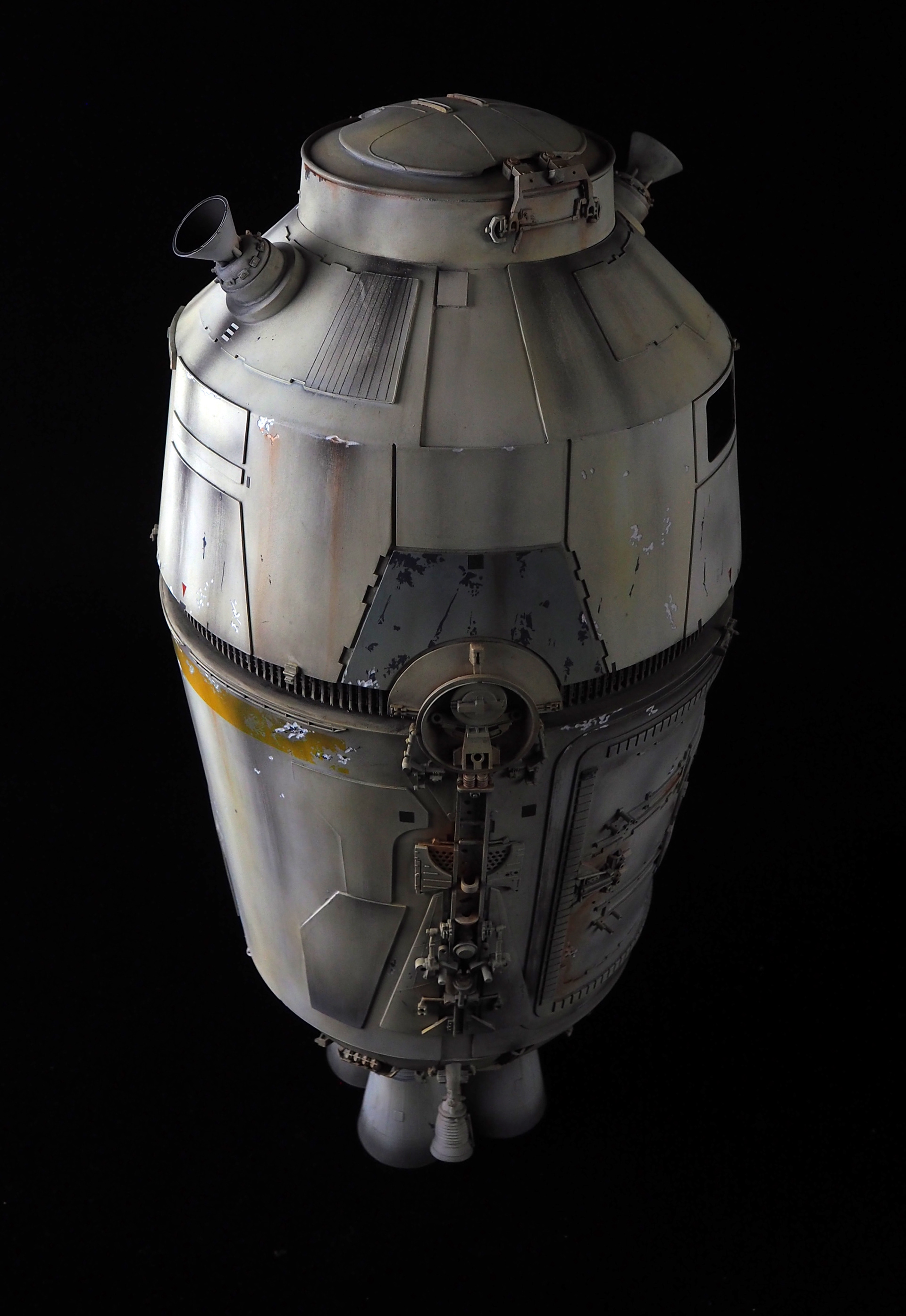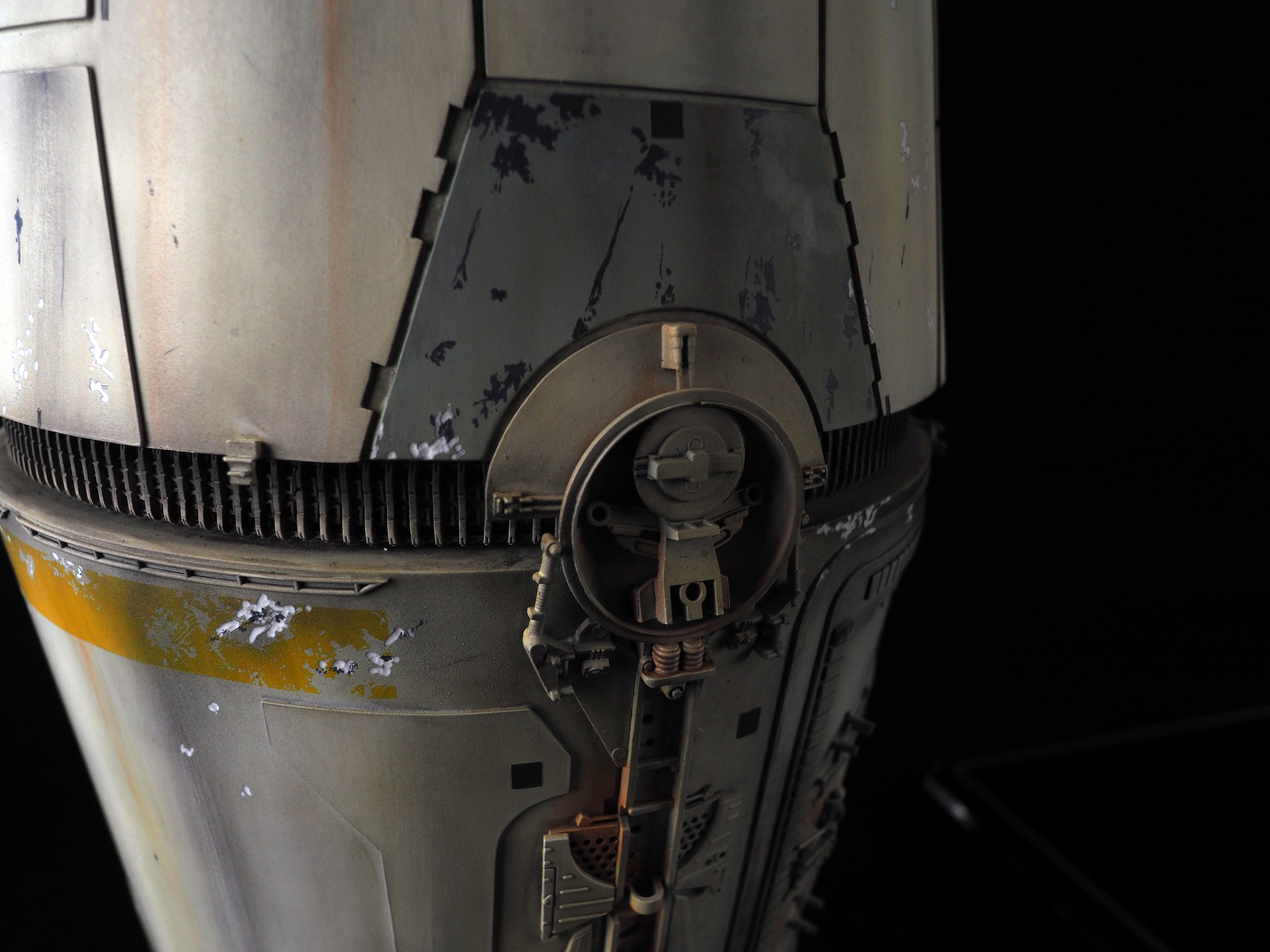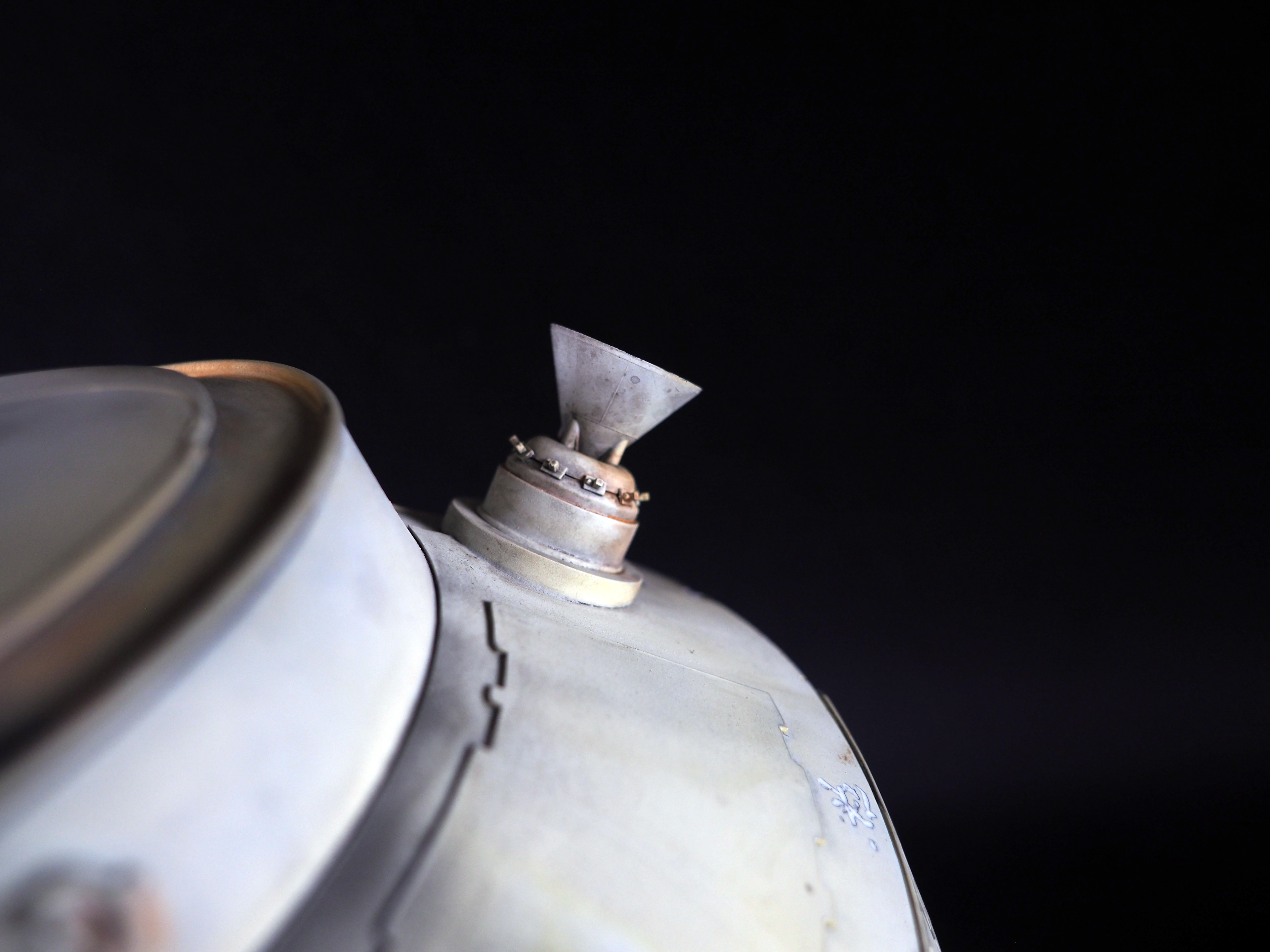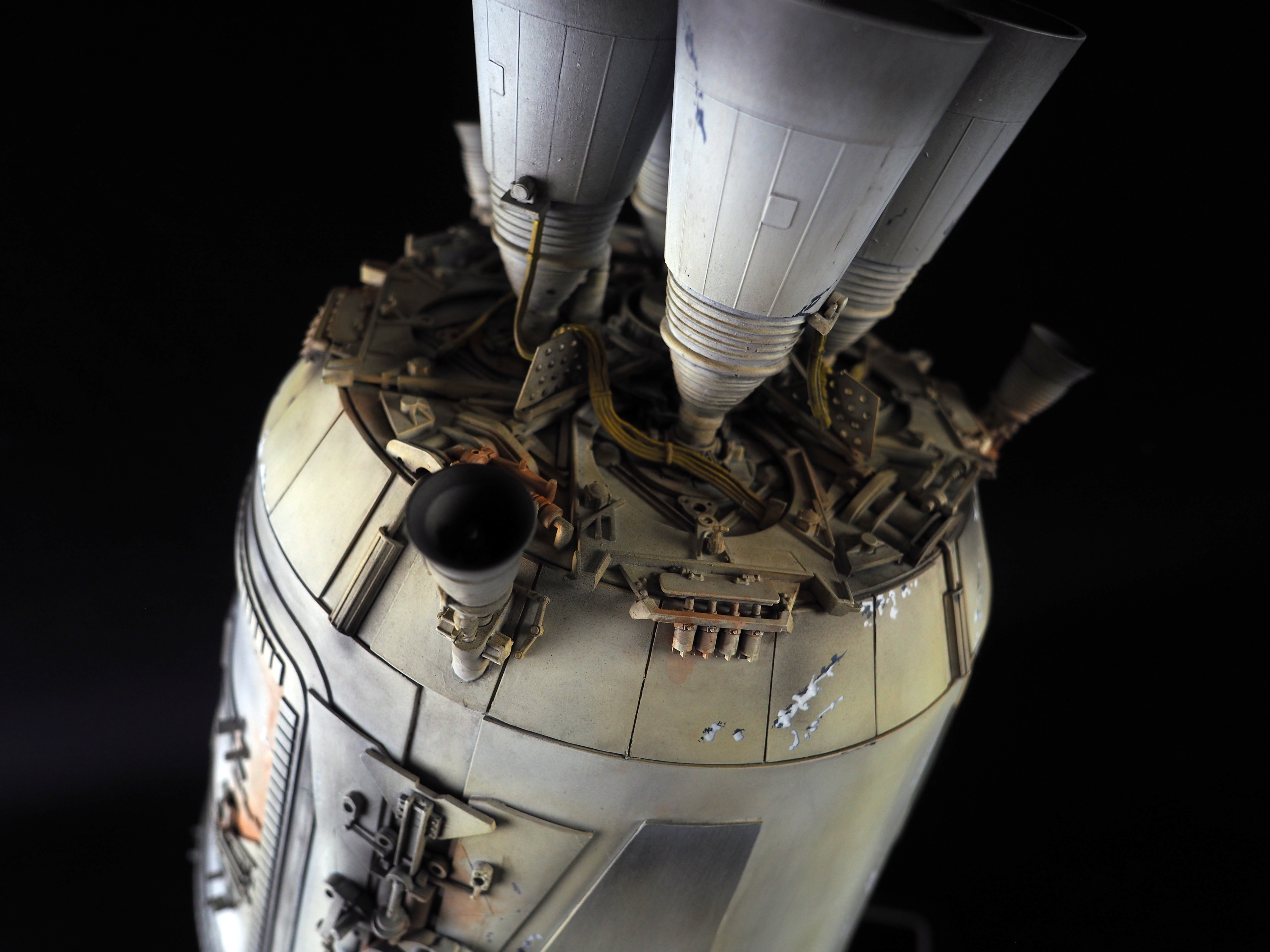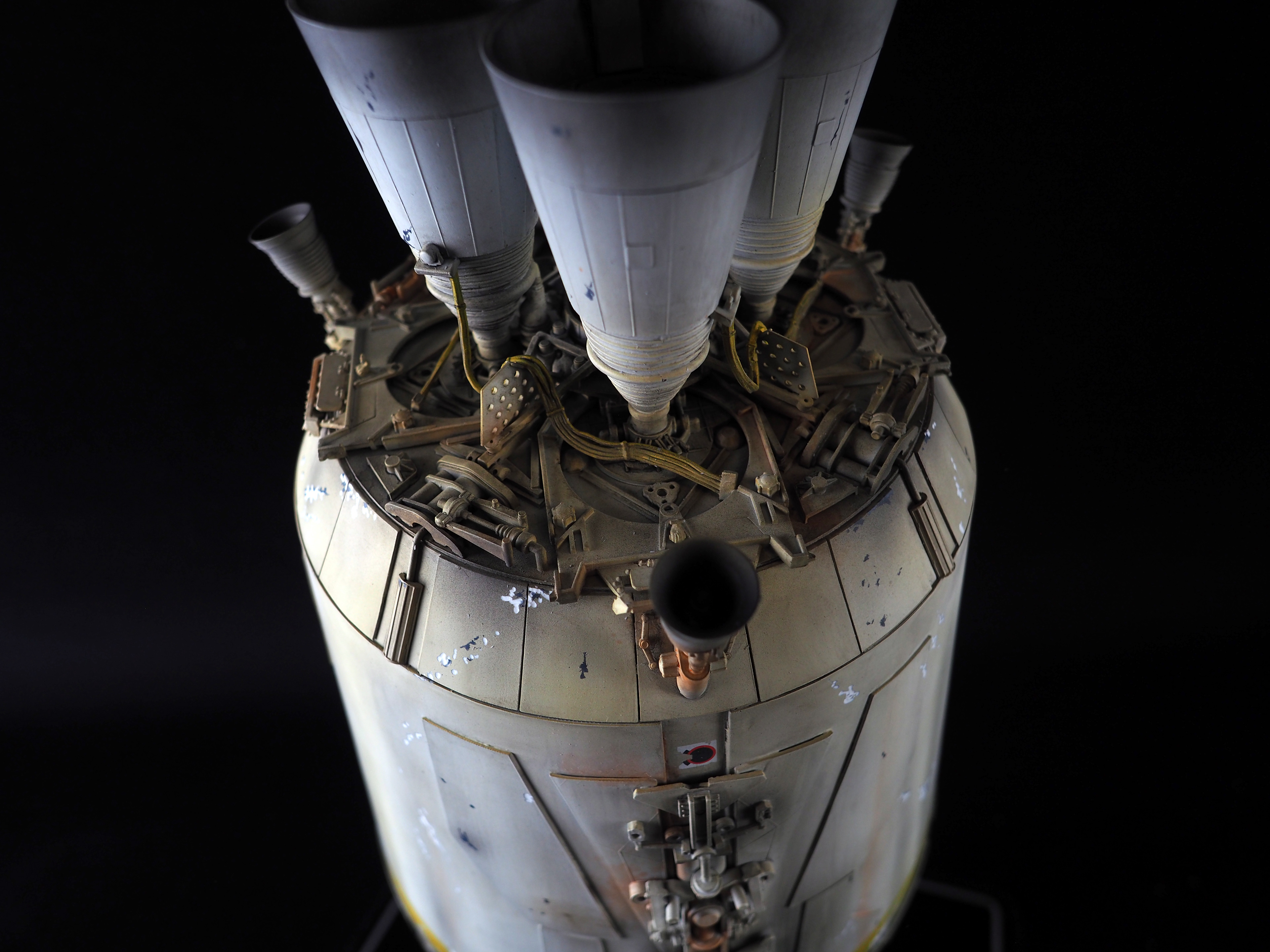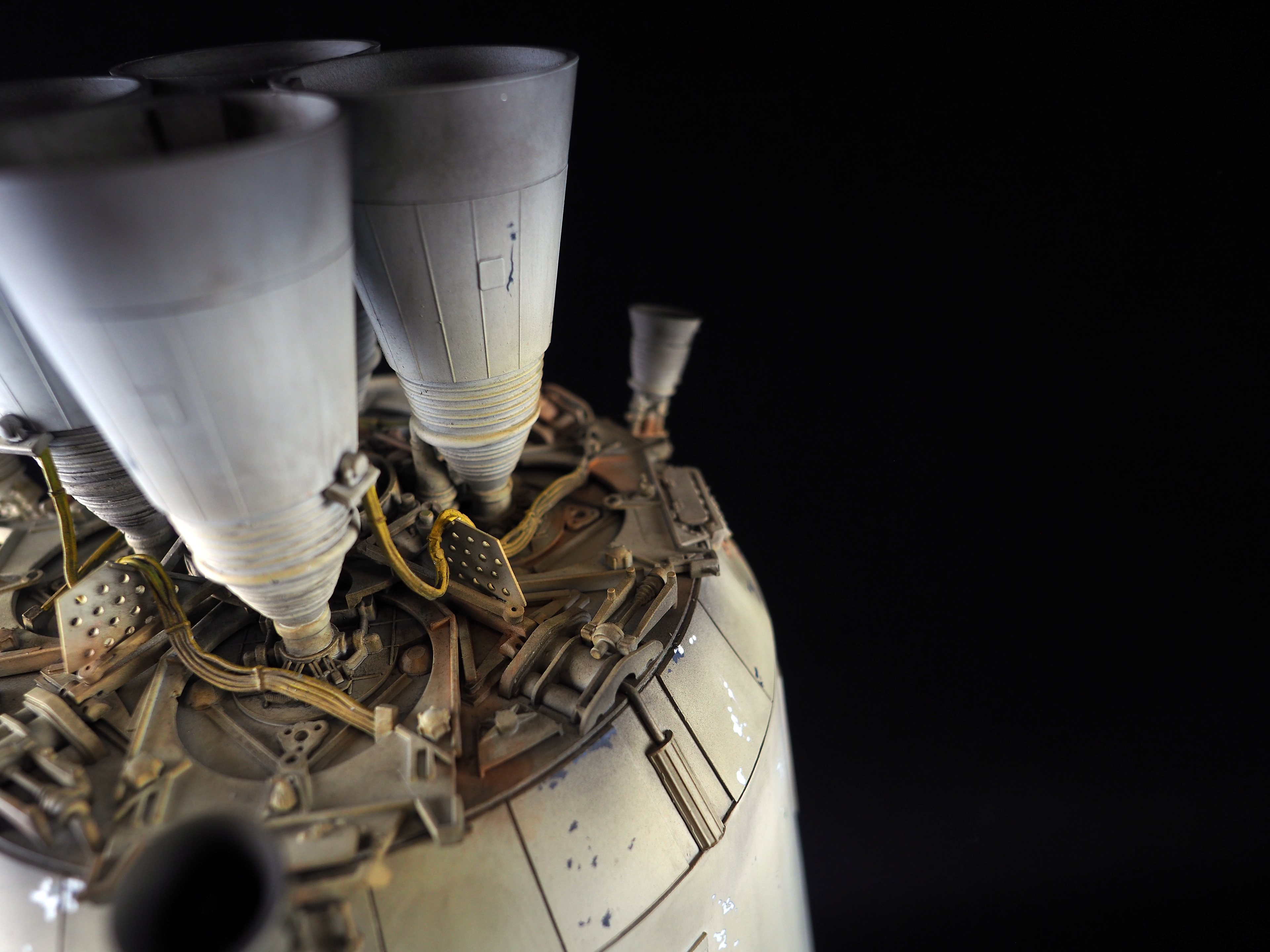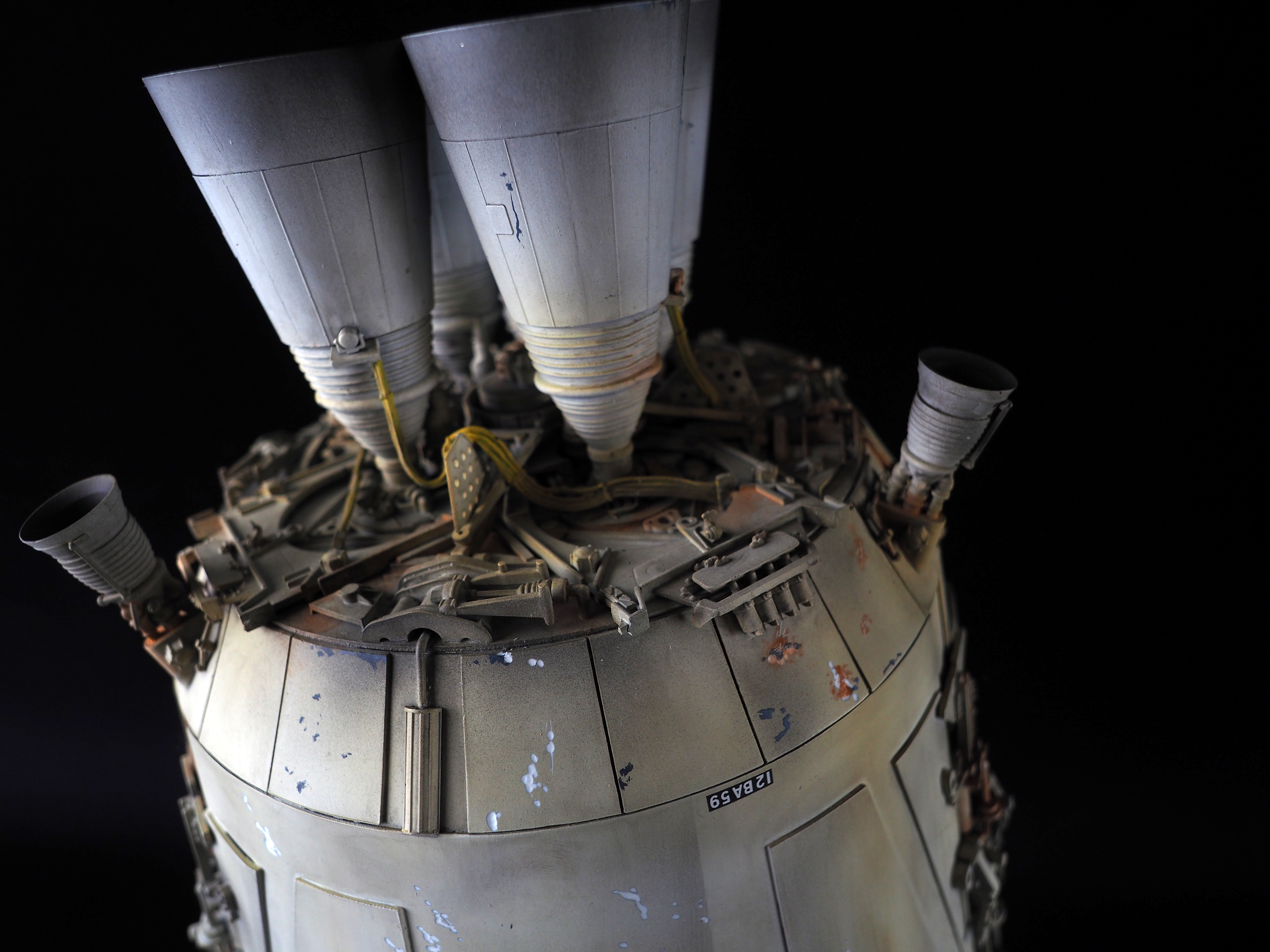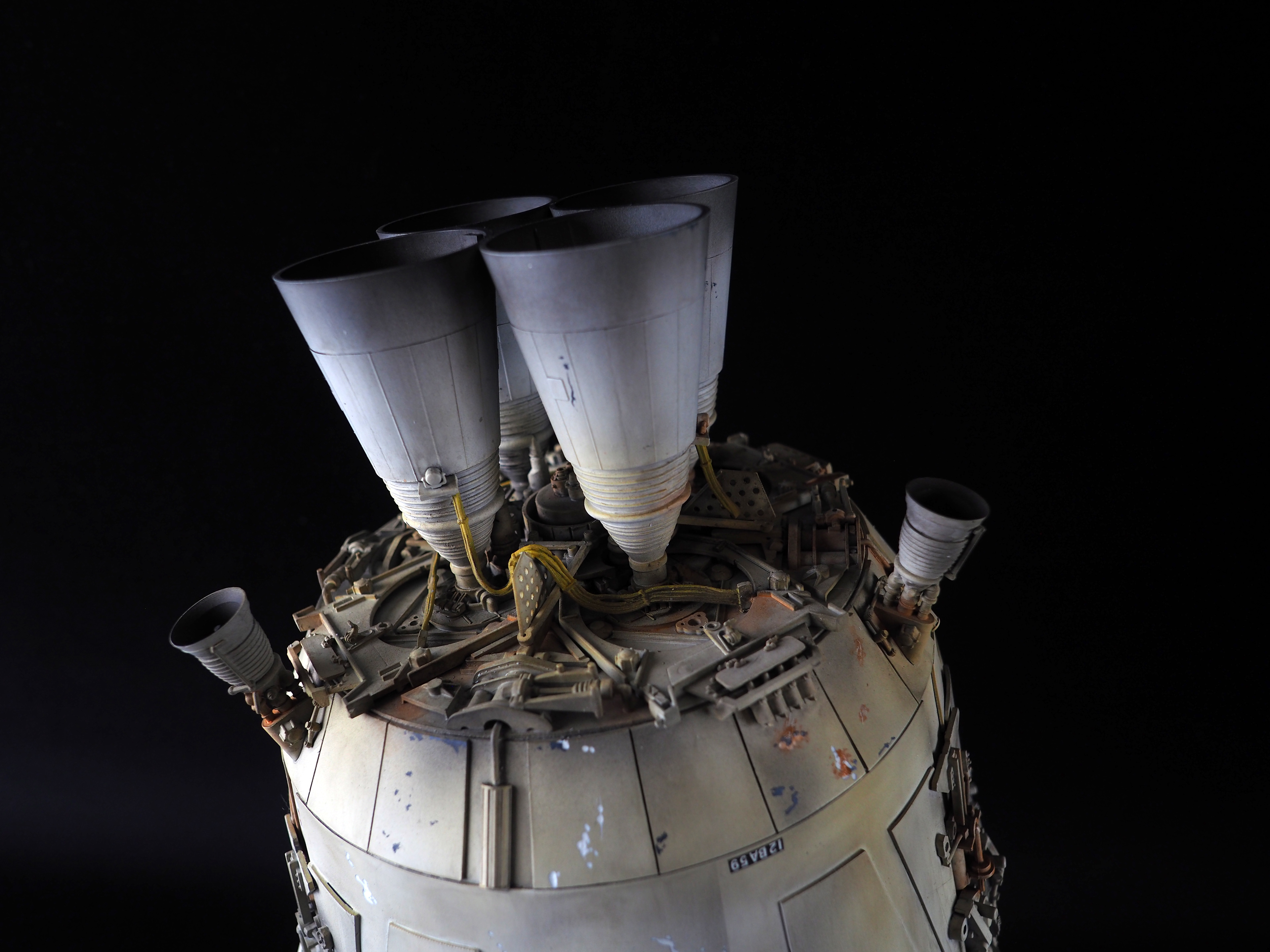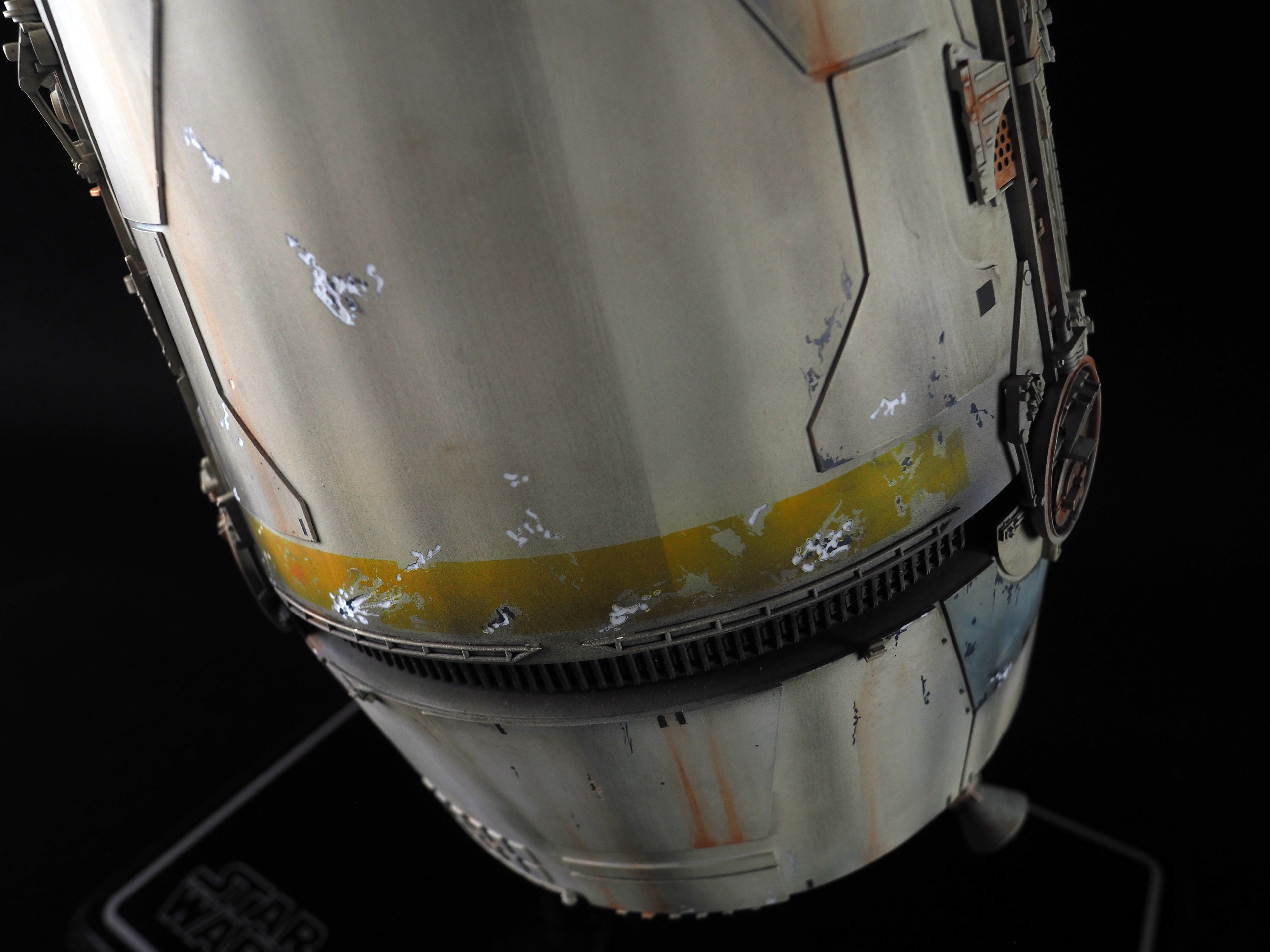The Escape Pod
This model is a period at the end of a very long sentence, stretching back a decade and change. The Escape Pod has always been a goal of mine, as a model builder. It’s rich history only deeps it’s attraction, and it’s deceptively simple initial appearance gives a less experienced modeler a sense of much needed courage to tackle as a build. It was the first shot ILM completed (aside from the Turbolaser shot with rotoscoped laser fire), and Lorne Peterson affectionately refers to this model as the “One Week Wonder”, as it was all done very quickly under deadlines. Famously, the main body was formed from two paper buckets (some remember them being 70s era Sherwin-Williams paint buckets, while others say they were KFC Chicken Buckets) which were foam filled, their paper removed, and skinned in styrene. Whatever was used, the end result was fantastic. The usual suspects were glued down (Sealab, Bandai, etc), and the model was then painted. It was mounted off-axis and rotated for the “spinning towards Tatooine” shot, but it’s initial ejection from the Blockade Runner is a more interesting story. Lorne as described this at some of his talks, so you more intense model builders may already know the story, but it essentially goes like this: A housing was built to surround the Escape Pod, and create the “launch tube”. It was suspended in the air on a forklift, with the camera mounted above, lens facing the stage floor. It was a large box with a circular tube, with three solenoid-driven clamps that held the pod in place. Mica dust was sprinkled over these clamps, and a (black) Duvetyne fabric makeshift net was held below, to catch the Pod when it dropped. The solenoids would fire, pulling the clamps back and releasing the pod to fall away from the lens towards the floor. The mica dust fluttered outward creating an effective twinkle of “dust” from the lights. Initially, there was too much slack in the fabric and the pod smacked against the stage floor, and was repaired. As you can imagine, every drop resulted in a piece whinging off somewhere, so the way the miniature exists today is not exactly as it appeared as built. So as always, on set photography was more valuable than contemporary reference photos.So, here we are, years and years later, and the first Escape Pod replica is built by the very talented Rolando. It was built as a personal one-off model, and not designed to be molded and cast. But the mob had spoken, and people made it happen, so that others could build them as well. I was one of those fellas, and built my first resin cast pod in the early 2000s. Though not as skilled as I am now, I had a few tricks up my sleeve then, and I tried my best to modify and upgrade some of the casting’s understandable shortcomings. This essentially became such an intensive teardown and rebuild that I personally vowed to myself that I needed to get better, so that I could scratch build things and use separate model pieces, whether they be cast or actual styrene, to make the models as close as I could to what I saw on screen. This design is basically responsible for my decade and a half drive to become self-sufficient in as many, if not all, steps to building something I want to make. That is deeply personal and this model’s completion means a great deal.
So, What are we looking at here then? This is a complete scratch build using zero resin. Every part is an original kit donor, which is grossly expensive and time consuming to source, but really makes the end results bulletproof. The bucket was made by skinning a skeletal framework that I purchased from Rob Bosnjak, as I was still a year away from having that 3D print capability in-house. Donor parts were trimmed a welded to each other and the styrene plating, and then everything was painted and weathered. This model features a lot of pock marked weathering which was made via a Dremel rotary tool. I can’t adequately describe how wonderful and satisfying it was to grind the paint off and expose the white styrene, as the original had been done. Dimensions and parts only happened because of the hard dedicated work of people like Craig Underwood, Ed Minto, and in this case, much like the ESB AT-ST, Quincy Cutshaw. Quincy was the first to finish a scratch built pod, and his is very much worth looking up, as his Wonderfest 2019 display was perfection. This model took four Sealabs to their graves, and now that I have put this project to rest, I feel a rare sense of total satisfaction that artists rarely get to enjoy.
